

Quick Links
- Case Studies

- Our Services
- Online Marketplace
The Complete Guide to Propellers and Their Upkeep on Cruise Ships

Table of Contents
Cruise ship propellers are a vital component of the maritime industry, providing propulsion to large vessels in the open sea. These propellers have evolved, with technological advancements increasing efficiency, reliability, and safety. In this article, we will explore cruise ship propellers.

What are Cruise Ship Propellers, and How Do They Work?
Cruise ship propellers are essential components that enable the vessel to move through the water. The water flows over the edges and creates a pressure difference between the front and back of the propeller blades, which makes a force that moves the ship forward. The faster the propeller rotates, the greater the thrust, allowing the boat to travel faster.

Types of Cruise Ship Propellers
There are several types of cruise ship propellers, including:
- Fixed-Pitch Propellers: These have a fixed blade angle, making them simple and reliable but less efficient.
- Controllable-Pitch Propellers: These propellers allow the angle of the blades to be adjusted while the ship is in motion, making them more efficient.
- Ducted Propellers: These propellers have a shroud or duct around the blades, which increases their efficiency by directing the water flow more precisely.
- Azimuthing Propellers: These propellers can rotate 360 degrees and provide excellent maneuverability, making them ideal for large cruise ships.
Cruise Ship Propellers Applications in the Maritime Industries
Cruise ship propellers are vital components in the maritime industry and are used in several applications, including:
- Passenger Transport: Cruise ships use propellers to transport passengers from one destination to another.
- Cargo Transport: Cargo ships rely on propellers to move large volumes of goods across oceans and waterways.
- Fishing: Propellers are used in fishing vessels to tow nets and trawls and to maneuver the boat in the water.
- Military: Propellers are also used in naval vessels, including submarines, destroyers, and aircraft carriers, for propulsion and maneuverability.

Cruise Ship Propeller Maintenance
Propeller maintenance is crucial to ensure cruise ships’ safe and efficient operation. Here are some key points to consider:
- Regular inspections and propeller cleaning are necessary to avoid accumulating marine growth and debris affecting performance.
- The propeller blades and hub should be checked for signs of damage and corrosion.
- Lubrication of the propeller shaft is necessary to reduce friction and prevent wear and tear.
- Regular maintenance of the shaft seals and bearings is essential to prevent water ingress and failure of the propulsion system.
Cruise Ship Propeller Repair Tips to Ensure Long Service Life
Proper propeller repair and maintenance can extend the life of cruise ship propellers. Observe the following advice:
- Propeller repair should only be performed by experienced professionals who use quality materials and follow proper repair procedures.
- Propellers should be balanced to reduce vibration and ensure smooth operation.
- Propeller coatings can protect against corrosion and fouling, leading to reduced performance.
- Routine inspections and repairs can identify minor issues before they become significant problems.

How to Choose the Right Cruise Ship Propeller?
Choosing the correct propeller type can significantly impact a cruise ship’s performance and fuel efficiency. Here are some factors to consider:
- Ship size and weight: The size and weight of the ship can affect the required propeller size and pitch.
- Cruise speed: The ship’s desired cruise speed can determine the propeller’s number of blades and pitch.
- Engine power: The power of the ship’s engine can determine the required size and type of propeller.
- Material: Propellers can be made of different materials, such as bronze, stainless steel, and aluminum, each with advantages and disadvantages.
- Blade design: The blade design can impact the propeller’s efficiency, noise level, and vibration. Different blade designs, such as fixed-pitch or controllable-pitch propellers, may be more suitable for various ships.
How AI is Transforming Cruise Ship Propellers & Maritime Industry?
AI technology is transforming the maritime industry, particularly cruise ship propellers. Here are some ways AI is impacting this sector:
- Predictive Maintenance: Data received from sensors on the ship’s propellers is analyzed by AI algorithms to forecast when maintenance is required, saving downtime and maintenance costs.
- Performance Optimization: By analyzing real-time data, AI can optimize the performance of a ship’s propellers, improving fuel efficiency and reducing emissions.
- Safety: AI can help detect potential issues before they become critical, enhancing safety measures on cruise ships.

Advantages of Using Cruise Ship Propellers
Cruise ship propellers offer numerous advantages over other forms of propulsion. Here are some benefits of using cruise ship propellers:
- Efficiency: Propellers offer excellent fuel efficiency, making them a cost-effective choice for cruise ships.
- Control: Propellers provide excellent control over a ship’s speed and direction.
- Flexibility: Cruise ship propellers are suitable for various vessel sizes and types.
- Reliability: Propellers are a proven technology and are reliable for extended periods of use.
How does a cruise ship propeller work, and what are its advantages and disadvantages?
Like any technology, cruise ship propellers have pros and cons. Here are some pros and cons of using cruise ship propellers:
- Fuel efficiency and cost savings
- Flexibility and suitability for various vessel sizes
- Excellent control over the ship’s speed and direction
- Proven reliability
- Propellers can cause harm to marine life if not designed and maintained correctly.
- Propellers are not ideal for shallow waters or regions with debris, such as ice.
- Propellers require regular maintenance to ensure optimal performance.
- Propellers can be noisy and cause vibration, which can be disruptive to passengers.

The propulsion of big vessels in open water depends on cruise ship propellers, making them an essential component of the maritime industry . Efficiency, dependability, and safety have all improved as a direct result of developments brought about by technological progress. It is vital to execute routine maintenance and ensure the design is sound to ensure optimal operation and reduce the negative influence on marine life.
Related FAQs
How do cruise ship propellers work.
Cruise ship propellers work by converting the rotational force of the ship’s engines into a forward or backward motion. The propellers rotate, creating thrust that moves the vessel through the water.
How many propellers does a cruise ship have?
The number of propellers on a cruise ship varies depending on the size and design of the vessel. Most large cruise ships have two to four propellers.
What materials are cruise ship propellers made of?
Cruise ship propellers are typically made of bronze or stainless steel due to their corrosion-resistant properties and durability.
How are cruise ship propellers maintained?
Cruise ship propellers require regular maintenance, including cleaning, polishing, and repairing any damage or wear. Maintenance is often performed during scheduled dry dock periods.
What is pitch control on cruise ship propellers?
Pitch control allows the angle of the propeller blades to be adjusted, controlling the amount of thrust generated by the propeller. This helps to optimize fuel efficiency and reduce emissions.
How do cruise ship propellers impact marine life?
Cruise ship propellers can cause harm to marine life if not designed and maintained correctly. Proper propeller design and maintenance can help reduce the risk of damage to marine life.
Can cruise ship propellers be noisy?
Yes, cruise ship propellers can be loud and cause vibration, which can be disruptive to passengers. However, advancements in technology have led to quieter and more efficient propellers.
Posted by Orbitshub
Published on 2nd June 2023
Category(s) Maritime
Previous Silent Guardians of the Deep: Exploring the Evolution of Submarine Technology
Next oil spil – catastrophe at sea and its devastating impact on the environment, related posts.

Exploring Ins Vagsheer: A Journey to Remember

Ohio Class Submarine: The Power of Stealth and Precision
[…] Blades: These curved surfaces generate lift and thrust, converting the rotational power from the engine into forward or reverse motion. […]
[…] the propeller as the ship’s paddle, propelling it forward with every turn. We’ll explore the science […]
Leave a Reply Cancel reply
Your email address will not be published. Required fields are marked *
Save my name, email, and website in this browser for the next time I comment.

How Big Are Cruise Ship Propellers? (With Images)
How Big Is a Cruise Ship Propeller?
Cruise ships are massive vessels, and their propellers are no exception. These propellers are responsible for propelling the ship through the water, and they can be incredibly large. In this article, we’ll take a closer look at cruise ship propellers, including their size, shape, and function.
We’ll also discuss the different types of propellers used on cruise ships, and how they’re designed to maximize efficiency. By the end of this article, you’ll have a better understanding of these important underwater machines.
Cruise ships are massive vessels that can weigh up to 200,000 tons and carry thousands of passengers. In order to move such a large ship, cruise ships use propellers to generate thrust. The size of a cruise ship propeller is determined by a number of factors, including the weight of the ship, the speed at which it needs to travel, and the water conditions in which it will be operating.
Types of Cruise Ship Propellers
There are two main types of propellers used on cruise ships:
- Screw propellers are the most common type of propeller used on cruise ships. They consist of a central shaft with a series of blades attached. As the shaft rotates, the blades create a vortex that pulls the ship forward.
- Azipod propellers are a newer type of propeller that is becoming increasingly popular on cruise ships. Azipods are mounted on a pod that can rotate 360 degrees, allowing the ship to maneuver more easily in tight spaces.
Size of Cruise Ship Propellers
The size of a cruise ship propeller varies depending on the size of the ship. The smallest cruise ship propellers are about 10 feet in diameter, while the largest propellers can be over 20 feet in diameter. The following table provides a general overview of the size of cruise ship propellers:
| Ship Size | Propeller Diameter | |—|—| | Small ( 200,000 tons) | 20-25 feet |
Cruise ship propellers are an essential part of these massive vessels. They allow cruise ships to travel across the oceans, carrying thousands of passengers to their destinations. The size of a cruise ship propeller is determined by a number of factors, including the weight of the ship, the speed at which it needs to travel, and the water conditions in which it will be operating.
Factors Affecting Cruise Ship Propeller Size
The size of a cruise ship propeller is determined by a number of factors, including the ship’s weight, speed, and maneuverability.
- Ship weight: The heavier the ship, the larger the propeller needs to be in order to generate enough thrust to move it through the water.
- Speed: The faster the ship needs to travel, the larger the propeller needs to be in order to generate enough thrust to maintain that speed.
- Maneuverability: The more maneuverable the ship needs to be, the larger the propeller needs to be in order to provide the necessary turning force.
In addition to these factors, the size of a cruise ship propeller is also affected by the type of propeller used. There are two main types of propellers used on cruise ships:
- Screw propellers: Screw propellers are the most common type of propeller used on cruise ships. They consist of a number of blades that are attached to a central shaft. As the shaft rotates, the blades create a vortex that pulls the ship through the water.
- Waterjets: Waterjets are a relatively new type of propeller that is becoming increasingly popular on cruise ships. They consist of a pump that draws water in from the front of the ship and then forces it out through a nozzle at the back of the ship. The high-pressure water jet creates a thrust that propels the ship forward.
The size of a cruise ship propeller can vary significantly, from as small as 10 feet in diameter to as large as 20 feet in diameter. The average size of a cruise ship propeller is around 15 feet in diameter.
The following table provides a more detailed overview of the factors that affect cruise ship propeller size:
| Factor | Effect on Propeller Size | |—|—| | Ship weight | Increased weight requires a larger propeller | | Speed | Increased speed requires a larger propeller | | Maneuverability | Increased maneuverability requires a larger propeller | | Type of propeller | Screw propellers require a larger propeller than waterjets |
Factors Affecting Propeller Size 1
The weight of a cruise ship is one of the most important factors that determines the size of its propeller. The heavier the ship, the more thrust it needs to generate in order to move through the water. This means that a cruise ship with a heavier weight will require a larger propeller than a cruise ship with a lighter weight.
The weight of a cruise ship is determined by a number of factors, including the size of the ship, the number of passengers and crew on board, and the amount of cargo that is being carried. The weight of the ship’s superstructure, engines, and other equipment also plays a role.
The weight of a cruise ship can vary significantly, from as little as 10,000 tons to as much as 200,000 tons. The average weight of a cruise ship is around 100,000 tons.
The size of a cruise ship propeller is directly proportional to the weight of the ship. This means that a cruise ship with a weight of 100,000 tons will require a propeller that is approximately twice as large as a cruise ship with a weight of 50,000 tons.
Factors Affecting Propeller Size 2
The speed of a cruise ship is another important factor that determines the size of its propeller. The faster the ship needs to travel, the more thrust it needs to generate in order to maintain its speed. This means that a cruise ship with a higher speed will require a larger propeller than a cruise ship with a lower speed.
The speed of a cruise ship is determined by a number of factors, including the power of the ship’s engines, the size of the propeller, and the amount of resistance that the ship is experiencing from the water. The speed of a cruise ship can vary significantly, from as little as 10 knots to as much as 30 knots. The average speed of a cruise ship is around 20 knots.
The size of a cruise ship propeller is directly proportional to the speed of the ship. This means that a cruise ship with a speed of 20 knots will require a propeller that is approximately twice as large as a cruise ship with a speed of 10 knots.
Factors Affecting Propeller Size 3
The maneuverability of a cruise ship is another important factor that determines the size of its propeller. The more maneuverable the ship needs to be, the larger the propeller needs to be in order to provide the necessary turning force.
The maneuverability of a cruise ship is determined by a number of factors, including the size of the ship, the number of propellers, and the type of propellers. The size of the ship plays a major role in
How big is a cruise ship propeller?
Cruise ship propellers can range in size from 10 to 20 feet in diameter. The largest propellers are found on the largest cruise ships, such as the Oasis of the Seas and Symphony of the Seas, which have propellers that are each over 20 feet in diameter.
What is the purpose of a cruise ship propeller?
The propellers on a cruise ship are used to propel the ship through the water. They are typically located at the stern of the ship and are powered by the ship’s engines. The propellers turn the water in a circular motion, which creates thrust and moves the ship forward.
How many propellers does a cruise ship have?
Most cruise ships have three propellers, but some larger ships have four or more. The number of propellers on a ship depends on the size of the ship and the amount of thrust that is needed to propel it.
What is the difference between a cruise ship propeller and a ship propeller?
Cruise ship propellers are typically larger and more powerful than ship propellers. This is because cruise ships are much larger than ships and require more thrust to propel them through the water. Cruise ship propellers are also typically made of different materials than ship propellers. Cruise ship propellers are often made of stainless steel or bronze, while ship propellers are often made of cast iron.
How often do cruise ship propellers need to be replaced?
Cruise ship propellers typically need to be replaced every 5 to 10 years. The lifespan of a propeller depends on a number of factors, including the type of material it is made of, the amount of wear and tear it experiences, and the operating conditions of the ship.
What happens if a cruise ship propeller breaks?
If a cruise ship propeller breaks, it can have a significant impact on the ship’s performance. The ship will lose power and may be unable to maintain its speed. In some cases, a broken propeller can even cause the ship to lose control.
How do cruise ship propellers work?
Cruise ship propellers work by turning the water in a circular motion, which creates thrust and moves the ship forward. The propellers are typically located at the stern of the ship and are powered by the ship’s engines. The engines turn a shaft, which in turn turns the propellers. The propellers are designed to be as efficient as possible, so they are typically made of lightweight materials and have a smooth, streamlined design.
What are the different types of cruise ship propellers?
There are two main types of cruise ship propellers: fixed pitch propellers and variable pitch propellers. Fixed pitch propellers have blades that are fixed in place, while variable pitch propellers have blades that can be adjusted to change the pitch. Variable pitch propellers are more efficient than fixed pitch propellers, but they are also more expensive.
How much does a cruise ship propeller cost?
A cruise ship propeller can cost anywhere from $1 million to $10 million. The cost of a propeller depends on a number of factors, including the size of the propeller, the type of material it is made of, and the operating conditions of the ship.
the size of a cruise ship propeller is a significant factor in determining the ship’s speed, efficiency, and maneuverability. The larger the propeller, the more thrust it can generate, which in turn allows the ship to move faster. However, larger propellers are also more expensive and require more power to operate. As a result, cruise ship designers must carefully balance the need for a large propeller with the other factors involved in ship design.
Here are some key takeaways from this article:
- The size of a cruise ship propeller is typically between 10 and 20 feet in diameter.
- The larger the propeller, the more thrust it can generate, which in turn allows the ship to move faster.
- Larger propellers are also more expensive and require more power to operate.
- Cruise ship designers must carefully balance the need for a large propeller with the other factors involved in ship design.
Author Profile

Latest entries
- January 19, 2024 Hiking How to Lace Hiking Boots for a Perfect Fit
- January 19, 2024 Camping How to Dispose of Camping Propane Tanks the Right Way
- January 19, 2024 Traveling Information Is Buffalo Still Under Travel Ban? (Updated for 2023)
- January 19, 2024 Cruise/Cruising Which Carnival Cruise Is Best for Families?
- CruiseMapper
- Ships and Lines
Cruise Ship Engine Power, Propulsion, Fuel
These are some of the most interesting cruise ship technology-related data and facts - engines , power , marine propulsion systems , fuel consumption of cruise ships , and something about pollution (in-article navigation links).
In 2020, IMO (International Maritime Organization) implements its global 0,5% sulfur cap on marine fuels. If not using scrubbers (pollution control devices), owners of older vessels must use as ship fuels either MGO (marine gas oil), ECA Category Fuels (low sulfur MGO), new modified fuels and blends, LNG (liquefied natural gas) or electric/battery power . Each fuel option is based on vessel type and age, routes/itineraries and powerplant. Most newbuild passenger ships are LNG-powered . World's largest seaports plus numerous smaller ports already have installed shoreside power capabilities providing shore-to-ship power supply to berthed vessels. In many ports, shorepower is in addition to LNG bunkering capabilities.
Cruise Ship Engine
Without a source of power, these huge cruise vessels would be nothing more than drifting aimlessly hotels. A large number of older ships use diesel reciprocating engines for generating power for propulsion. Cruise ship engine power is supplied through the transmission to the propeller shafts. These transmissions determine the revolutions of propellers. Modern ships use either diesel-electric engines or gas turbines as a source of power for propulsion, and for ship's systems. Some of the larger ships depend on two power sources - one for electrical power and one for propulsion.
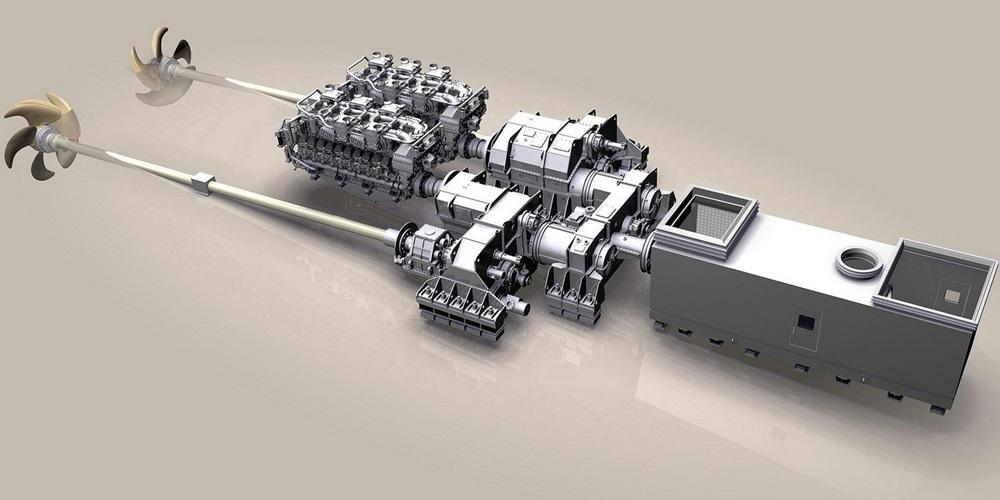
Gas turbine engines (being aero-derivative) generate heat which is transformed from mechanical energy into electricity. To achieve this, compressed air is fired in a combustion chamber. Hot exhaust is made over a turbine that spins to drive mechanically a shaft. The power can be used to spin the generators. The same way works diesel-electric engines, yet they use a direct drive system, not a turbine. The output shafts, to produce electrical power, are connected to generators.
Both engine types need a lot of fuel. Cunard QE2 , for example, consumes daily 380 tons of fuel when traveling at 29 knots speed and carries fuel enough to sail for 12 days. Usually, ships fill up at various seaports and use fueling barges as floating gas stations. Vessels use lower-grade diesel which tends not to burn as purely as diesel-powered road-going vehicles.
All ships rely on propellers/screws to be pushed through the water, providing forward and reverse motion. Airplanes, for example, require tremendous propeller speeds to provide the forward motion, but ship propellers don't need to turn so fast and rely on torque power. Therefore, ships travel slowly and rarely top 30 knots (for more info follow our speed-link above).
Cruise ship engine room
The basic detail about the cruise ship engine room is its location. For stability, the ship's heaviest weights are at its lowest possible deck, and usually, engines are mounted above the keel. Ship's lowest decks are almost entirely full of machinery. An area creating enough power for driving such an enormous vessel through water needs to be really big - very often engine rooms occupy at least three decks. Rather than long halls stretching the length of hulls, machinery is almost always divided into smaller compartments - one for the main engines, another for the heating/air-conditioning system. This compartmentalization is for safety reasons. If a penetration to the hull or fire happens, multiple compartments help contain the damage. The next photo shows the engine room of RCI's Oasis-Class vessels.
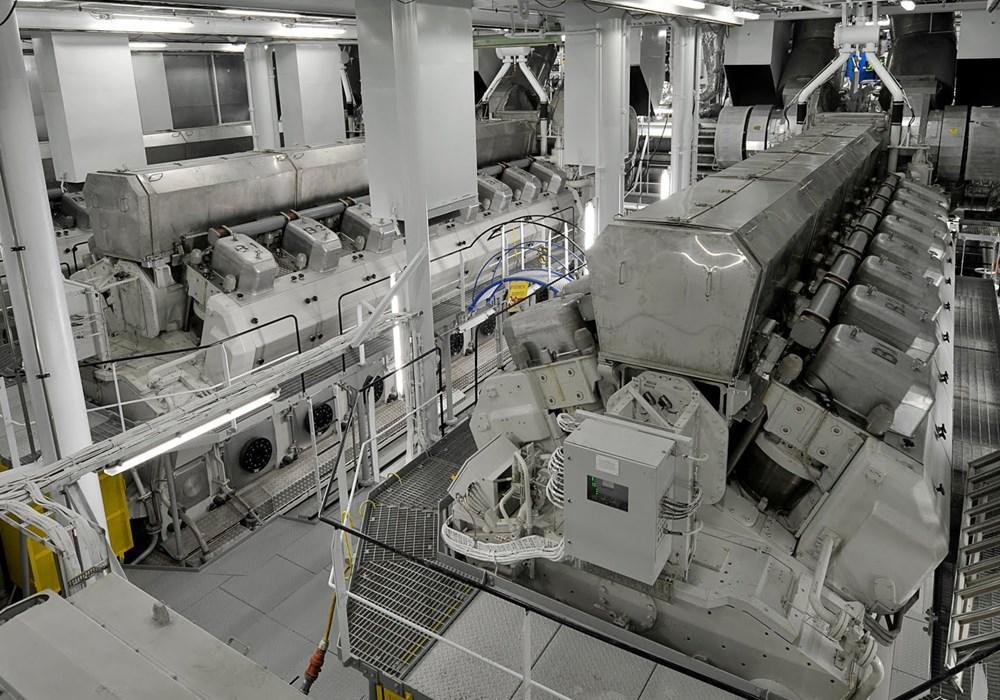
Rarely, engines are not placed at the ship's bottom. RMS Queen Mary 2's four main diesel engines are above the keel, with two smaller gas turbines on top-deck (aft of the funnel). It was not unusual for older liners to have 2 engine rooms. Gradually, technology allowed the consolidation of these spaces. However, current maritime legislation requires vessels to have equipment duplication and 2 engine rooms.
In May 2015, Wartsila Corporation and Carnival Corporation partnered to optimize cruise ship engine room operations of all 101 ships across the corporation's 9 brands. The deal was signed by Micky Arison (Carnival's Chairman) and Bjorn Rosengren (Wartsila's President and CEO). The plan included installing Wartsila's latest marine solutions, first tested on several Carnival Cruise Line vessels in pilot projects. The new systems and technologies included engine control and monitoring systems, safety and fuel efficiency equipment.
Wartsila's "Asset Performance Optimization Solution" package allows obtaining optimal performance from Wartsila marine diesel engines, recommends how to deal with potential issues, maximizes ship performance, ensures full-capacity systems operations, increases the predictability of fuel management and maintenance needs. Wartsila's fuel engine package was specifically designed to reduce fuel consumption.
Wartsila Marine technologies aim to optimize ship performance, but also allow to locate deviations from normal parameters of equipment and engines. This allows emerging problems and engine fault sources to be fixed before they occur.
Conventional diesel cruise ship engine
Today's direct-drive diesels feature one main advantage - the option to use a shaft generator, which is a device using the circular motion of the propeller shaft in order to generate the electricity needed for hotel services, like cooking and lighting.
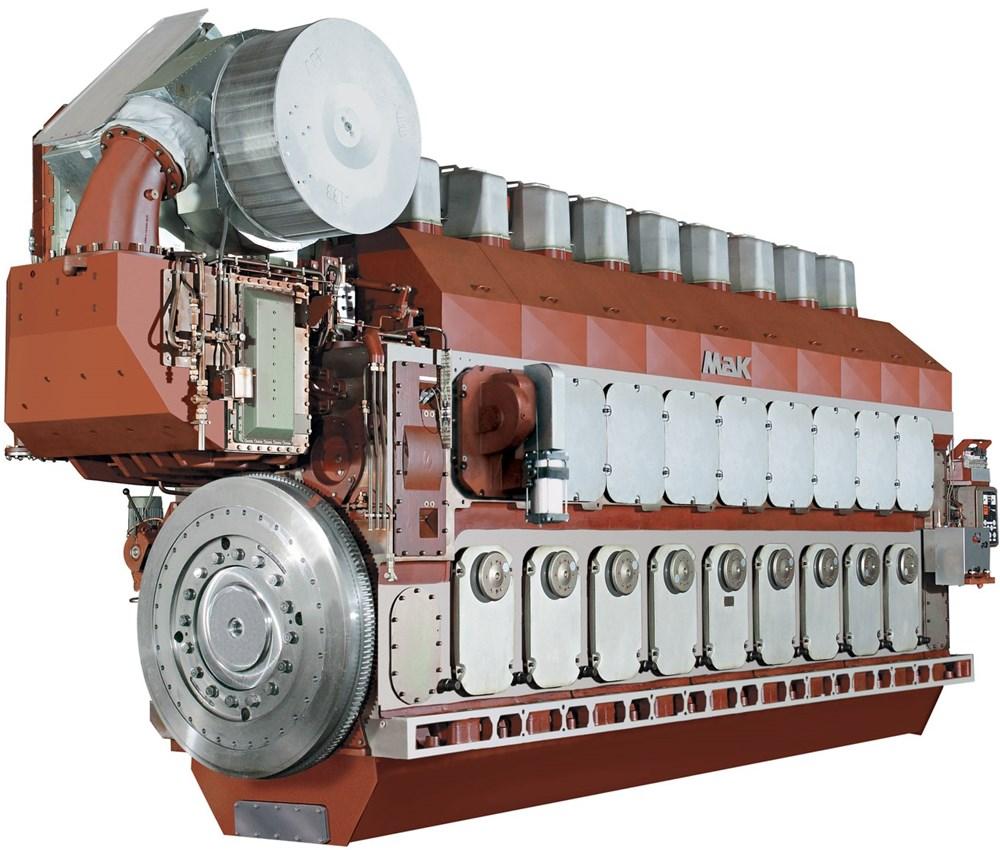
Shaft generators can be used only while the ship is moving with a fairly constant cruising speed. This is what the NCL Epic cruise ship engine looks like:
Diesel-electric cruise ship engine
Almost all new ships feature a diesel-electric propulsion form. On these ships, main engines are not connected to propeller shafts, and instead of it they are directly connected to big generators in order to produce electricity, which is sent in turn to electric motors, that then power and help turn the propellers. The main advantage of the diesel-electric cruise ship engine systems is efficiency as they allow main engines to operate near the most efficient speed, no matter if the ship is moving at 5 or 25 knots.
Losing electrical power is devastating to ships. Main engines and generators require electricity and it's needed to keep them going. Pumps that are driven electrically take in cold ocean water to cool the engines and electrical pumps get fuel from fuel tanks and supply it to the engine. Electrical power is vital for many operational functions - without it, ships come to a halt.
Large equipment (propulsion motor, bow thrusters) requires electricity of high voltage. As for smaller machinery (cabin lights, galley equipment), the electricity goes through the transformer and is thus stepped down into lower voltage. Large cables snake through all the ships to distribute electrical power. They carry power from generators to switchboards, through passageways, public rooms, crew and passenger cabins. Cabling can be a weak point in the distribution system. If the electrical cables aren't truly redundant, even ships that feature two engine rooms suffer power failure.
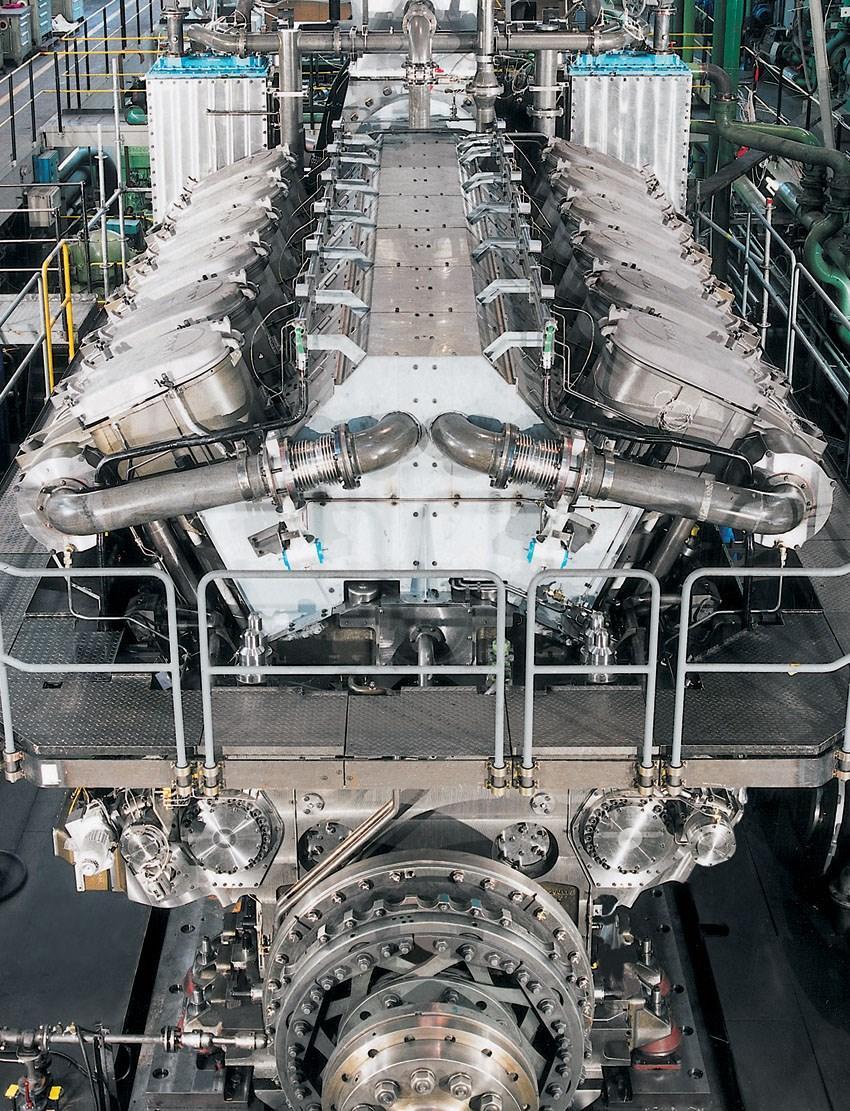
While ships are docked, generators and main engines produce more power than needed. They are turned off in port, and smaller generators supply "hotel" loads (lights, air-conditioning, galley, etc.). Moving through water takes up the vast majority of the ship's power needs - about 85% of all the diesel-electric powerplant production is consumed by the propulsion system. The above photo is of the Vista-class Carnival cruise ship engine room. The engine type is "MAN 2 times; 14V48/60CR" (common-rail diesel injection system):
Cruise ship Emergency Generators
All ships are supplied with emergency generators to maintain vital electrical power. Backup generators are located higher up and also outside engine room spaces to isolate them from damage or fire.
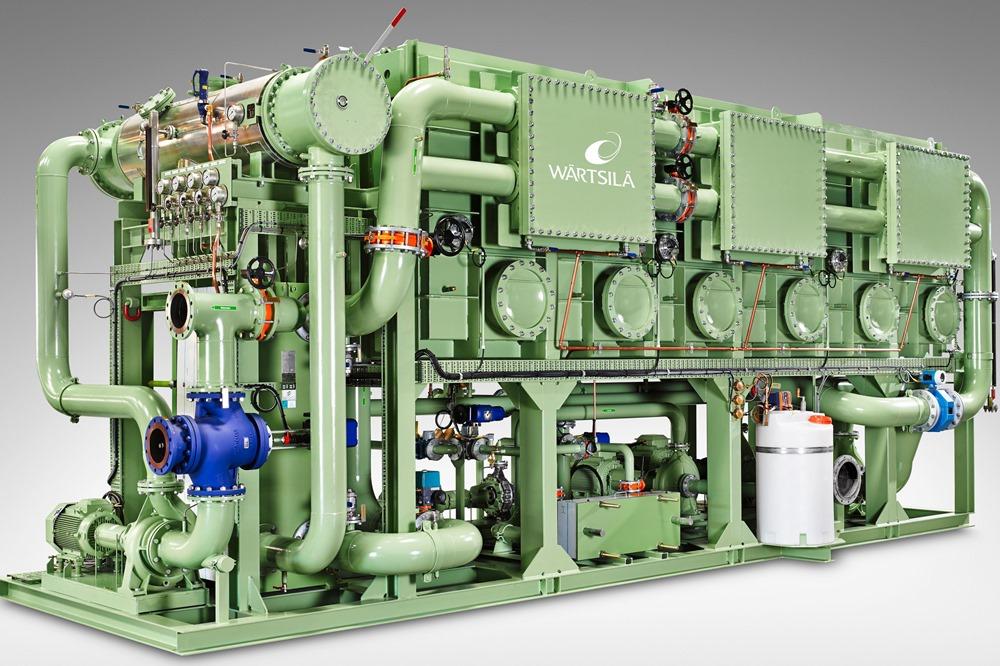
Big ships require much power, so they might have more than one emergency generator. Despite that, they don't have the capacity of main generators and engines, don't produce electricity enough to move the ship, and can't supply all the power needed in ports, because of constraints in space.
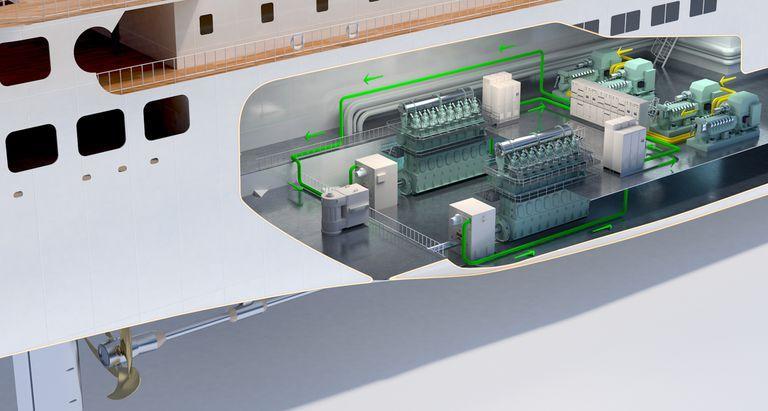
Emergency generators are instead used only for essential navigation systems - crucial communication equipment, critical pumps in the engine room, emergency lighting. Should they also fail, vessels are required to have a battery backup. 24 hours of power are at least provided by battery rooms to the smaller emergency equipment list.
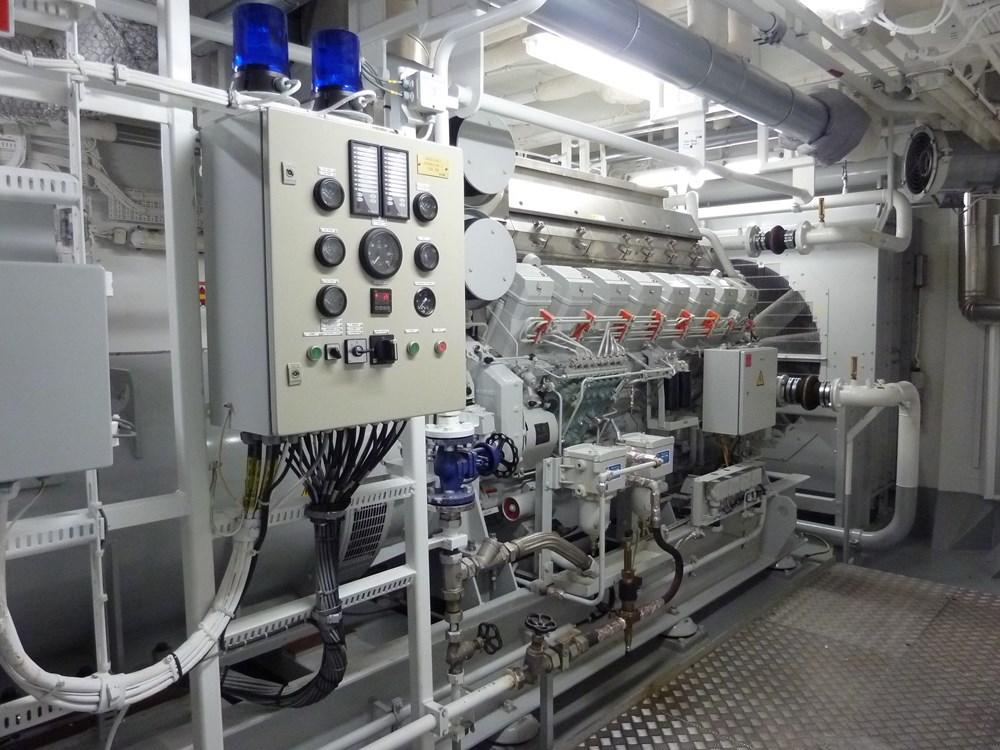
Probably you've heard about Carnival cruise ship accidents related to power failures in 2013. At our Carnival Fun Ship 2.0 upgrades link you can learn how CCL battled with this "unmaintained ships" image and implemented revolutionary new technology initiatives fleetwide - including an additional emergency backup generator on each of their vessels.
Cruise Ship Propulsion
The new cruise ship propulsion systems ABB Azipods XO (below photo) are more fuel-efficient than traditional systems, also providing better maneuverability, maximizing speed, reducing bad emissions, which as a whole optimizes ship's performance and enhances passenger safety.
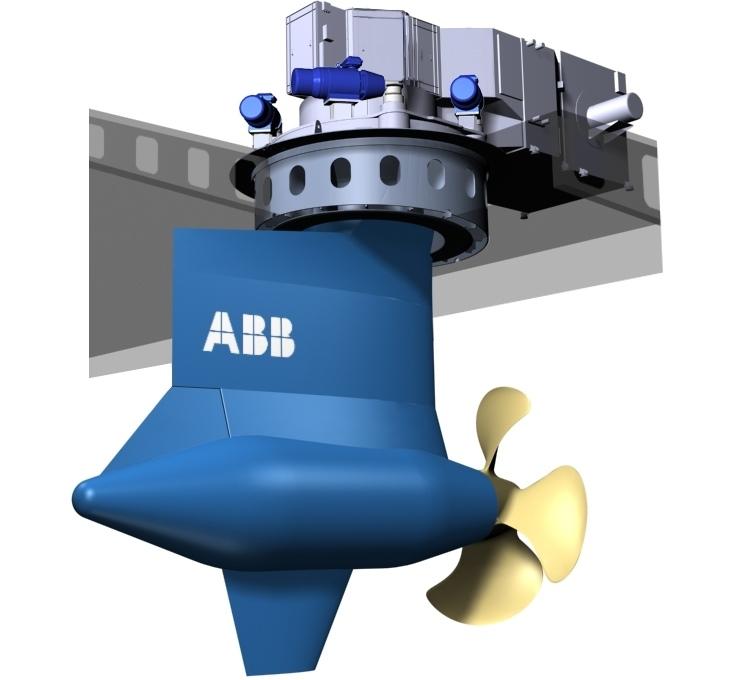
ABB Azipod propulsion systems have a major impact on the vessel's operating efficiency - reducing energy consumption and bad emissions by up to 20%.
In 2019, ABB signed a deal with Oldendorff Carriers (1921-founded, Germany's largest bulk shipping company with a fleet of ~700 ships) for the supply and installation of Azipod propulsion systems on two newbuild carriers. Both self-unloading dry bulk vessels were China-built (by Chengxi Shipyard Co Ltd / subsidiary of CSSC) and scheduled for deliveries in 2021. Each vessel was fitted with two Azipods (power output 1,9 MW per unit) plus various related electric and digital solutions (powerplant, diesel-electric generators, bow thruster motors, transformers, switchboards, power management system, ABB Ability global ABB real-time monitoring).
Azipod cruise ship propulsion system
Azipod cruise ship propulsion system is situated outside the hull in the aft of the ship. Azipod turns in all directions (360 degrees) by a rudder, providing thrust in any directions, not possible for conventional systems.
See at the first photo at right RMS Queen Mary 2 's propulsion system scheme.
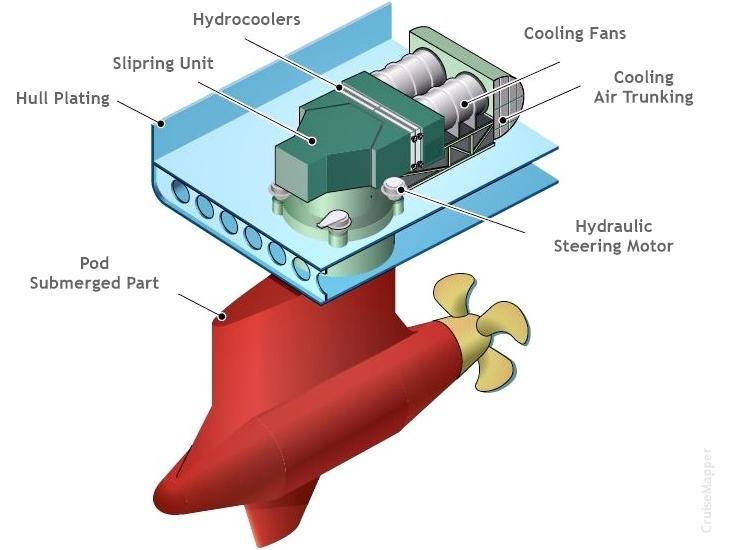
QM2's Azipod is actually an electric propulsion system consisting of the following main components:
- Propulsion motor - used to produce or drive thrust. The propeller's rotating is powered by an electric motor.
- Supply transformer - power produced by generators is 6600 KV, which is stepped down to the necessary voltage by supply transformer and is provided to the motor in the pod.
- Frequency controller - used to change the frequency of supplied power so that the rotating motor speed can be controlled.
Azipod marine ship propulsion is a combination of both steering and propulsion systems. Conventional marine propulsion systems use a two-stroke engine connected to a shaft, that passes through a stern tube and shaft tunnel to connect to the propeller outside the hull in the ship's aft/stern. This system's steering is done by a rudder (in the propeller's aft).
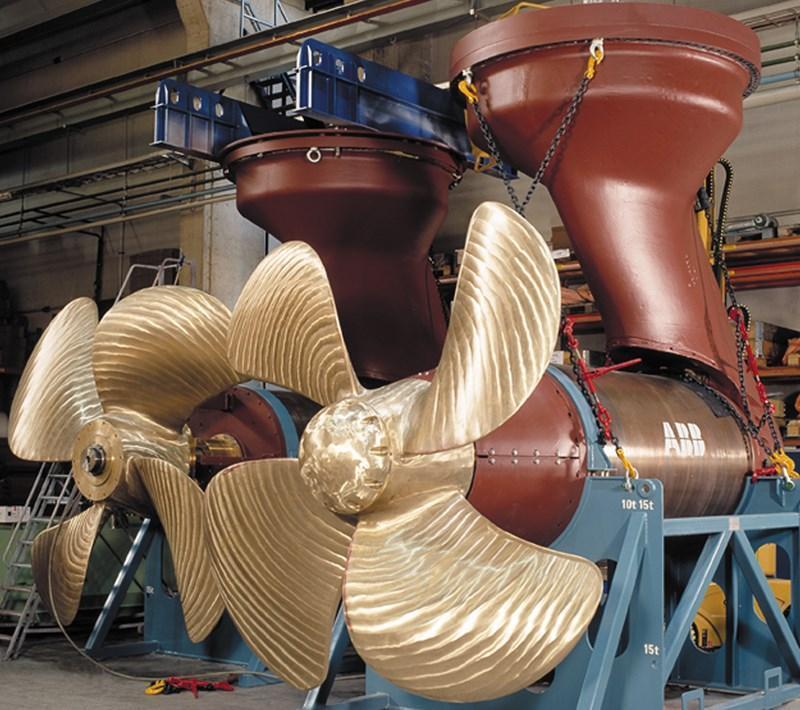
The above photo shows Oasis-class ship propulsion Azipods (2 units) before being mounted onto the hull. The next photo shows the Azipods (both units) mounted on the hull.
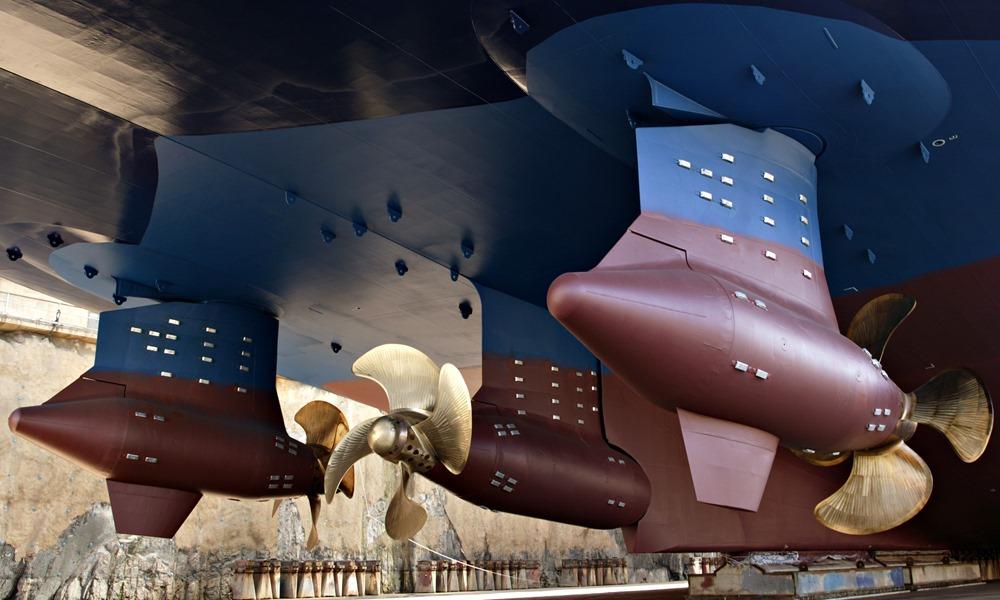
The 3rd Oasis-class ship - Harmony of the Seas, is currently the most technologically advanced and energy-efficient cruise vessel ever built. It is equipped with a new-generation exhaust gas cleaning system (multi-stream scrubbers) and also features a hull lubrication system allowing the ship to float on air bubbles (created around the hull) thus reducing drag and increasing fuel efficiency.
However, the steering and propulsion systems in Azipod arrangement, are combined into one part and the system consists of a propeller (driven by an electrical motor) turned by a rudder connected to the azipod system. The motor is inside the sealed pod and connected to the propeller.
The following YouTube video is about ABB Azipods installed on the new Genting Hong Kong vessels (Star Cruises' new ships and on Crystal Cruises' polar-class boats).
These ships incorporate a complete ABB propulsion - Azipods, electric power plant, computer automation, and software. Crystal cruise ships are powered by two "Azipod D" units allowing navigation in polar destinations. Each of the Star Cruises "Global-Class" vessels have three "Azipod XO" thrusters. All ships have installed ABB's "Intelligent Maneuvering Interface" and the "OCTOPUS" software optimizing fuel consumption and energy management. All these ships were constructed by the German shipbuilder MV Werften. Currently, almost 2/3 of all large-sized cruise vessels, icebreaking ships, and high ice-class cargo ships are with Azipod propulsion.
Advantages of Azipod propulsion marine systems
- A lot of space is saved by the Azipod cruise ship propulsion system in the engine room - there is no propeller, engine, shafting or other arrangements. This saved space can be used for storing cargo.
- Great maneuverability - the propeller can turn in all directions and enables crash maneuvering stop distance that is better than the conventional systems.
- Azipod cruise ship propulsion system can be placed below the ship's height and provide more efficiency than conventional systems.
- In case the ships have large breadth, two (or more) azipod systems, independent from one another, can be used to provide subtle maneuvering.
- Side thruster's use is eliminated as pods can be used to provide side thrust.
- Low lube oil and fuel consumption.
- Lower vibrations and noise than conventional systems.
- Because emissions are low, it's environment-friendly.
Disadvantages of the Azipod marine propulsion
- It requires great initial cost.
- Many diesel generators are needed for producing power.
- The power produced by the motor is limited - the maximum available power now is 21 MW.
- Azipod cruise ship propulsion systems can't be installed in heavy cargo ships that need large motors and a lot of power.
Royal Caribbean Quantum-class cruise ships propulsion
In April 2012 ABB made a USD 60-million contract to provide the Azipod propulsion systems for the new Royal Caribbean ships of the Quantum-class (Quantum, Anthem, Ovation) and Quantum Plus-class (Pulse, Passion). The former name of this vessel design was "Project Sunshine". Builder is Meyer Werft (Papenburg, Germany).
ABB also supplies the power generation, distribution systems, bow thrusters, and of course, the 2 x 20,500 kW propulsion Azipod XO units (at the photo at right), transformers and drives.
NCL Epic ship pod-propulsion
When entering service in 2004, the Cunard's QM2 was the biggest in the world at 150,000 GR tonnes. Her designer Stephen Payne showed the advantages of pod-propulsion giving vessels increased maneuverability. The propellers (screws) of the QM2 ship are mounted on the pods which rotate 360 degrees and provide advanced maneuverability. He made the choice to put pods - though relatively new and yet untested for big ships. Royal Caribbean vessels of Oasis, Freedom, and Voyager classes have pod-propulsion as many other big ships, which is opposed to the fixed traditional screws which push in one direction only.
An interesting fact about cruise ship propulsion is that Norwegian Epic doesn't have pods, though slightly bigger than Queen Mary 2 (at 153,000 GR tonnes), because of NCL concerns about the new technology. Some of the lines (including Celebrity and Cunard) have suffered vessel breakdowns due to pod-bearing failures. Lots of voyages had to be canceled, extensive dry-docking periods were required for pod bearings to be replaced, and NCL didn't want to take the risk.
Currently, NCL Norwegian Epic has two rudders with conventional non-Azipod screws. But how does she manage to maneuver if they can push in one direction only? One option is to make them bigger and more effective when maneuvering, another is to add additional mini-pods or install full-sized pods. Only time will tell if any of these will actually ever happen.
Rolls-Royce cruise ship propulsion system "Promas Lite"
In November 2013, the manufacturing giant Rolls-Royce upgraded Hurtigruten's ship MS Richard With its new "Promas Lite" propulsion system (integrated propeller-rudder system). This is an older ship, and Promas Lite was the perfect choice as it is a combined "propeller-rudder" system increasing the efficiency of older passenger vessels with lesser tonnage. The upgrade significantly reduced Hurtigruten's operating costs on this vessel. The improved propeller efficiency was estimated to be between 11-14% at a cruising speed of 15 knots (17 mph / 28kph).
Promas propulsion integrates propeller, hubcap, rudder bulb and the rudder into a single unit which can increase propulsion's efficiency by 3-8% (1-screw vessels) and by 2-6% (2-screw vessels). It also improves maneuverability, reduces fuel consumption and bad emissions. The new modular technology allows efficient and cost-effective custom-made systems to be built up from various existing and standard parts - mooring winches, anchor cable lifters, warping heads.
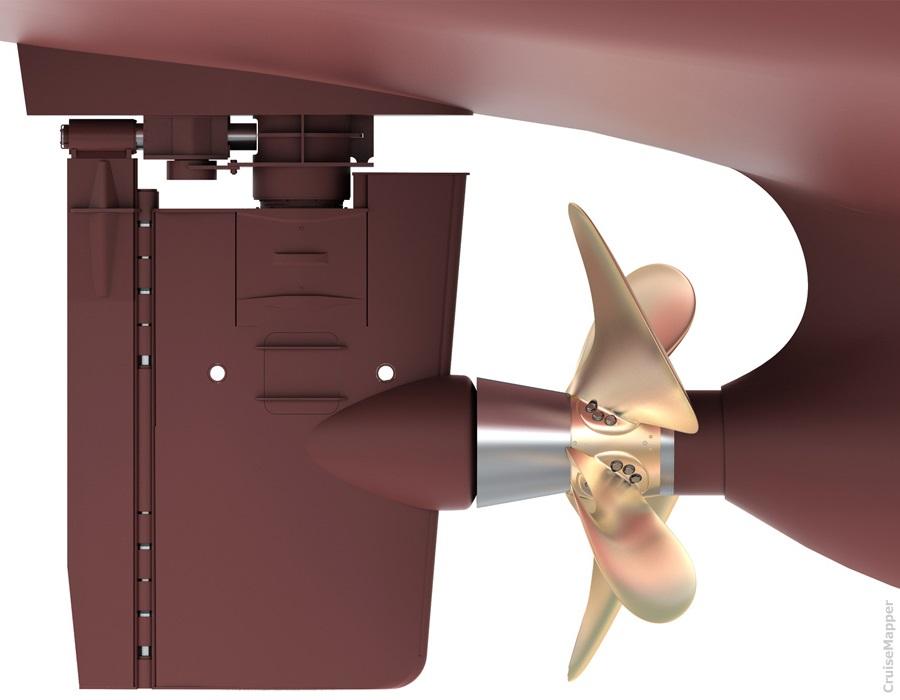
Hurtigruten was compensated with ~80% of its total investment in Promas Lite marine propulsion upgrades as the Norwegian Government has this NOx fund encouraging shipowners and operators to upgrade their vessels and invest in new marine technologies that reduce NOx emissions. The Promas Lite propulsion future clients, besides passenger ships, are marine vessels like fishing and freighter ships.
After Norwegian Spirit (the first ship in NCL fleet with installed Promas Lite in 2011), in May 2014 the Star Cruises ship SuperStar Virgo became Southeast Asia's first passenger liner with RR's Promas Lite propulsion. Fincantieri used Promas Lite propulsion for all Viking Ocean liners.
Cruise Ship Power
The cruise ship engine power is responsible for driving propellers, and the other possibility is producing electricity that is used subsequently to drive propellers. The engine's effectiveness depends not only on the design but also the ship's shape, weight, and size. Power is measured in horsepower traditionally - one horsepower equals 746 watts. The next photo shows the world's largest passenger ships' engine that powers each of the Royal Caribbean Oasis-class vessels.
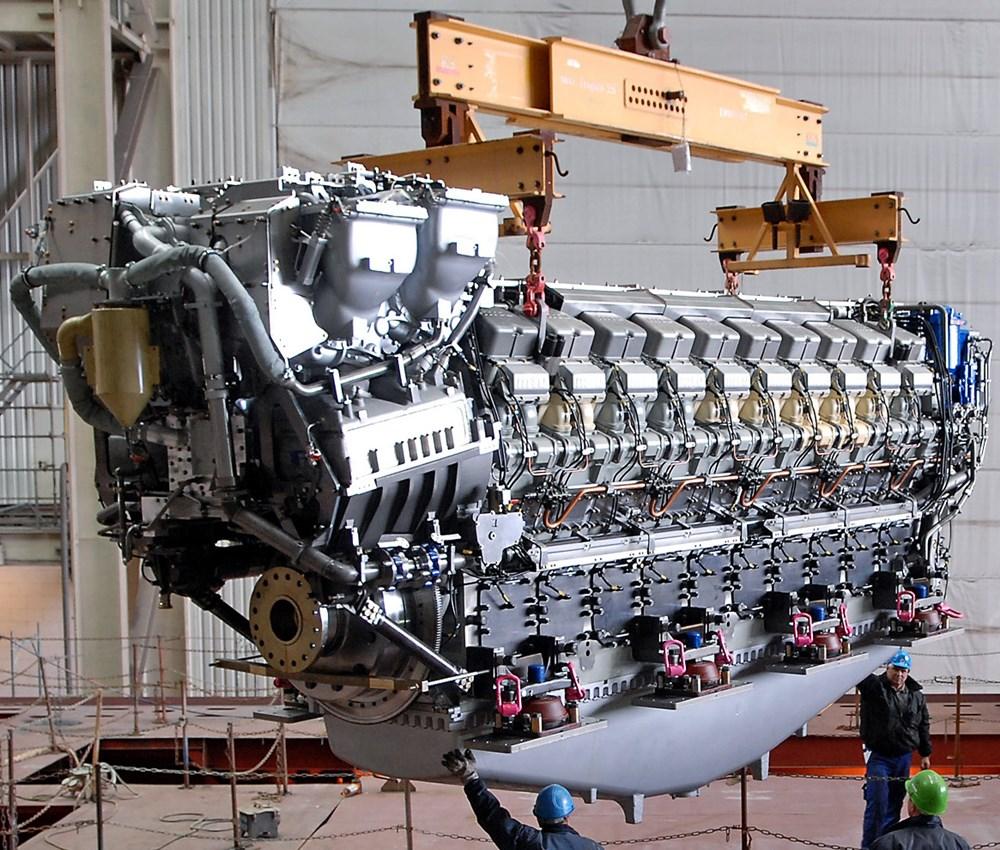
Marine steam engines
The cruise industry began in 1844, when ships were propelled by steam engines, performing the driving of propellers by using steam as working fluid. The largest passenger steamship (before hitting an iceberg on April 14, 1912) was the Titanic, powered by both reciprocating engines and turbines, able to generate 50,000 horsepower (37 megawatts).
Marine diesel engines
Usually, ships are powered by four or five generator sets (medium-speed, 500 revolutions per minute), fueled by diesel and creating 8-10 MW energy each. The power density of marine diesel medium-speed engine is 80 kilowatts per cubic meter. Ships that use diesel engines are required to carry exhaust-treatment systems and catalytic-reduction equipment to reduce the environmental impact.
Marine nuclear power engines
The building of the US first and only merchant nuclear-powered ship was commissioned in the 1950s by President Eisenhower. Of total cost $46.9 million, on the fuel core and nuclear reactor was spent more than $28 million. The ship operated only for five years (1965-1970) but due to the high running costs, its service was terminated.
Marine gas turbines
The first company that fitted cruise vessels with gas turbines, was Royal Caribbean. Gas turbines are greener than diesel engines and allow ships to sail with reduced inventory and smaller maintenance crew. Gas turbines drive generators which in turn provide electricity to propeller motors. They recover heat from gas turbines' exhaust, which then is used to produce the electricity needed for onboard services (air conditioning, water heating).
Rolls Royce is the manufacturer of the world's largest GAS marine turbine "Rolls-Royce MT30". The turbine will provide the immense 109 MW of power for the 2 propellers, all the weaponry, radars, command sys, etc. of the new generation UK aircraft carriers of the Queen Elizabeth class. To this class belong HMS Queen Elizabeth (2017-commissioned) and HMS Prince of Wales (2019-commissioned), each of them with a total power consumption of 80 MW.
Gas-turbine cruise ship power system
The first large vessel to use a new gas-turbine cruise ship propulsion system was Celebrity Millennium . This system will be more frequently used in new cruise ship buildings . It's innovative and, besides new activities available, the economy of scale, marketing, represents an important element of ship design. System's advantages include:
- lower vibrations and noise level, better comfort, lower probability of failure;
- lower exploitation costs because of the easier maintenance;
- nocive emissions reduction, which is partially owed to gas oil instead of fuel (-90% oxide of sulfur, -80% oxide of azote).
- considerable gain of weight and volume, especially when with Azipod marine propulsion system (900 tons, 70 cabins added).
Gas turbines at this time are only interesting in the building of high-speed ships (warships, and especially aircraft carriers, or fast passenger vessels - Millennium max speed is 25kn), because of the better diesel output in lower speeds and higher price of gasoil instead of fuel for diesel engines.
Gas turbine cruise ship propulsion systems are able to avoid pre-heating systems needed for fuel in classic installations (risk of fire!), as they use gasoil, Celebrity's Millenium-class and RCI's Radiance-class use such turbine powerplants. The next photo shows Celebrity's Solstice-class ship propulsion (the 4 aft azipods, and the underwater hull shape).
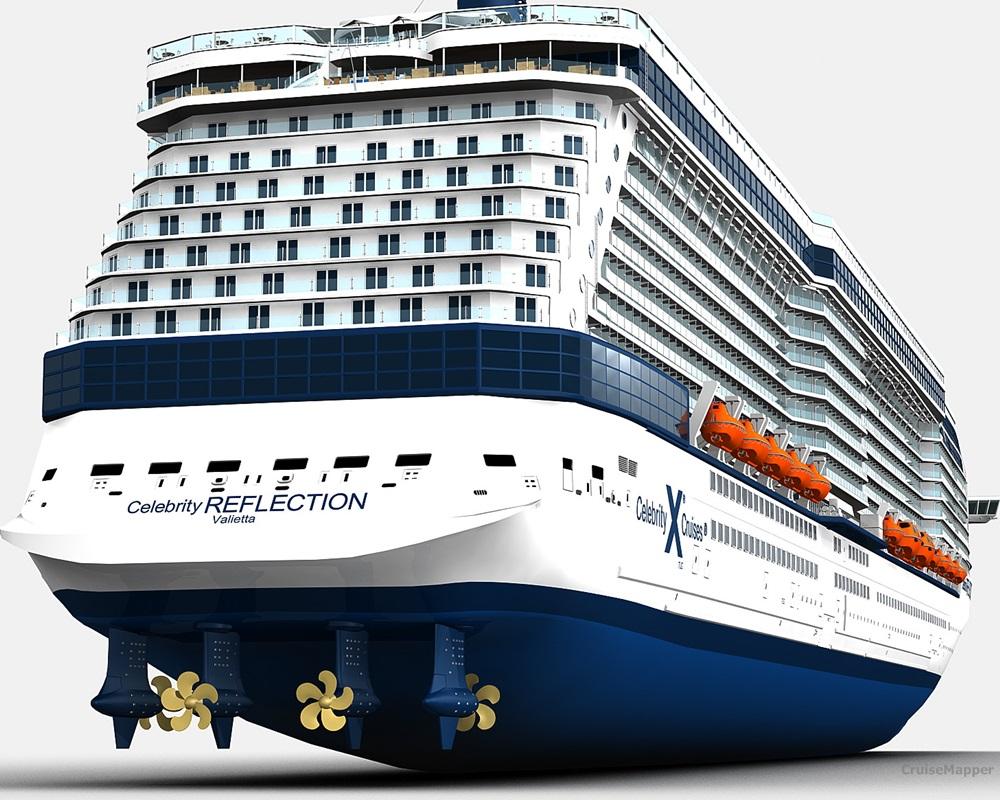
LNG-powered cruise ships
In June 2015, Carnival Corporation announced the company's contract with Fincantieri to build four LNG-powered vessels with the industry's largest passenger capacity. This was part of the order with Meyer Werft and Fincantieri for a total of 9x units to be built in the period 2019-2022.
The four newbuilds became the industry's first LNG (Liquefied Natural Gas) powered vessels using LNG in their hybrid engines. The gas is stored in the ship and used to generate all needed power at sea. The engines are not exclusively LNG, but "dual fuel" (capable of burring both liquid marine fuel and natural gas). This design is for saving onboard space (reducing fuel storage space required).
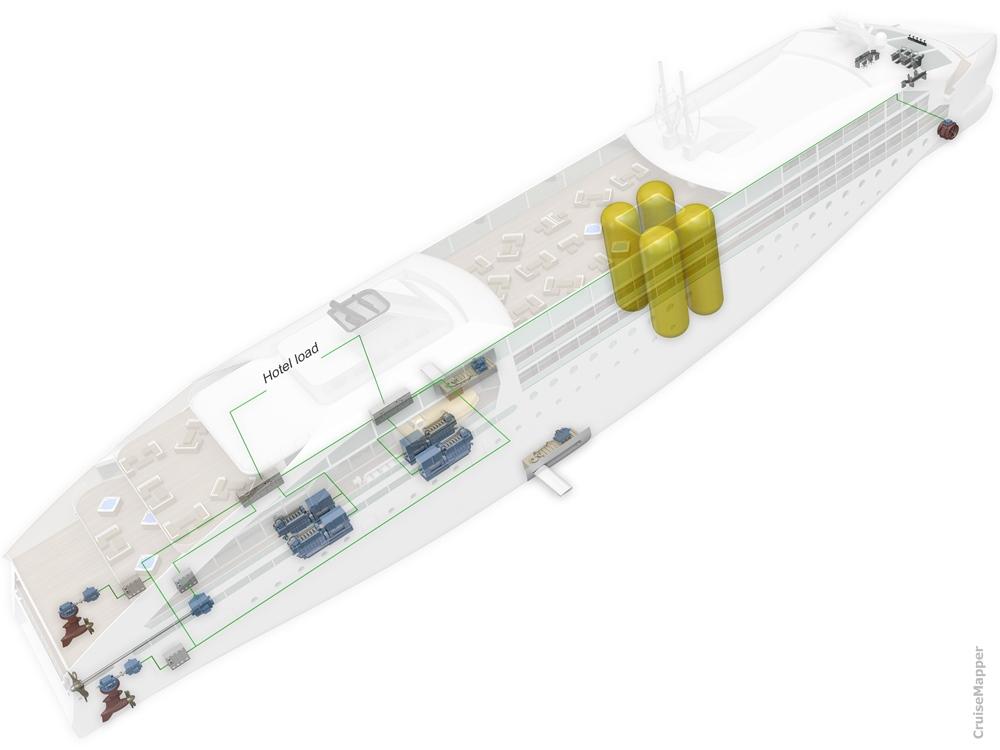
LNG is natural gas, which consists of 90% methane and 10% ethane. When cooled to -160 C, it passes from gas to liquid, and its volume decreases over 600 times, making it very efficient for distribution. Long-distance LNG transportation is via dual-hull gas carriers. Short-distance LNG transportation is via trucks or smaller vessels (also barges) fitted with high-pressure tanks.
Gas fuel eliminates all the bad emissions - soot and sulfur oxides. In April 2016 MSC Cruises announced its contract with STX France for up to four LNG-powered ships with GT over 200,000 tons each. For comparison, the Oasis of the Seas is 225,000 GT tons. The new MSC ships have 5400 passengers capacity at double occupancy each. The first one is scheduled for delivery in 2022. Its power plant will be based on a new prototype engine.
Using LNG to power large cruise ships is a relatively new (2016) concept. Due to LNG tanks' large sizes, this fuel is used usually on smaller passenger shipping vessels ( ferries ) operating on short crossing itineraries. LNG bunkering facilities available in ports are very few. Compared to other fuels (including MGO / marine gas oil), LNG is purer (no unburned residues, fewer greenhouse gases), more efficient, stable and cheaper (reduces fuel costs). LNG technology also advances due to IMO's future maritime emissions regulations, especially in ports and while operating in environmentally sensitive destinations.
In comparison to pipeline gas, LNG is superior in quality - purer, with more methane and other energy content. Its chemical structure also has a stable composition that doesn't generate unburned residues, soot or any particulates. In addition, because the fuel is so clean, on LNG-powered ships maintenance intervals are doubled (over 25,000 hours / ~10140 days), as opposed to the standard MDO-powered 12,500 hours (520 days).
- All the world's major environmental organizations and the marine shipping industry joined for an explicit prohibition on the carriage of non-compliant fuels when the 0,5% sulfur cap takes effect in 2020.
- In January 2018, IMO announced that starting January 1, 2020, the marine fuels' max allowed sulfur content (outside Emission Control Areas) is reduced from the previous 3,5% to 0,5%. Unless marine vessels are using approved equivalent compliance methods, after Jan 2020 there is no reason for ships to use non-compliant diesel fuels.
- IMO's new sulfur cap's goal is to provide substantial health benefits by reducing marine fuels' sulfur content (SOx gases). At the same time, IMO's lowered cap significantly increases ships' operating costs.
The LNG cruise ship concept was first introduced by Wartsila (Finnish manufacturing company) and is based on drive shaft propulsion instead of azipods. The LNG tanks' location is in the upper deck area (right below the funnels). The Rolls Royce concept is based on azipods.
AIDAprima (2016) is one of the world's most technologically advanced cruise vessels. The ship rides on a cushion of air, thus reducing frictions and fuel consumption, The new technology is called MALS ("Mitsubishi Air Lubrication System"), allowing the liner to glide on an air bubbles carpet.
The ship's 4 main engines are dual-fuel (heavy oil and LNG gas oil) thus reducing fuel consumption. The ship has an advanced filtering system that reduces stack emissions (greenhouse gases). The ship's propulsion features 1 pair of stabilizers and 2x ABB-pod drives (new XO-Pod series, power output per unit: is 3 MW). The total power output is 48 MW. AIDAprima is also the world's first-ever "LNG cruise ship" as it uses LNG fuel supply while berthed in ports.
For its LNG-bunkering operations in Florida (at homeports PortMiami and Port Canaveral ), CCL-Carnival partnered with Royal Dutch Shell plc as fuel supplier for the liners Mardi Gras (2021) and Celebration (2022).
AIDA's LNG-powered cruise ships
The AIDAprima ship's first successful test run for LNG supply was in Hamburg Germany on May 7, 2016. While berthed, the ship was successfully provided with LNG at all the itinerary's ports of call (Hamburg, Rotterdam, Le Havre, Southampton, Zeebrugge).
- The company's statistics show that the AIDA ship spends about 40% of its operating time in ports. Compared to using conventional marine diesel (0,1% sulfur content), by using LNG, the vessel's emissions were considerably reduced even further. Sulfur oxides and soot particles were prevented completely (while in port), nitrogen oxide emission was reduced by up to 80%, CO2 emissions were lowered by 20%.
- AIDA ships (produced by Shipyard Papenburg ) are 100% LNG-powered. AIDA invested in research and testing of LNG cruise ship technologies since 2015. In 2013, AIDA collaborated on LNG hybrid barges with Becker Marine Systems. The innovative and flexible solution is used on ships moored in Port Hamburg.
- Since May 30, 2015, AIDAsol is regularly supplied with low-emission LNG power at Hamburg's Hafencity Cruise Terminal.
- AIDA ships use just 3 liters (0,8 US gallons) of fuel on average per person on board for a 100 km (62 ml) trip. This was confirmed by an independent expert study in 2012. Following the implementation of new technologies and economical handling of resources, the company's statistics for 2016 (over 2012) showed reduced energy consumption (9% per person onboard), reduced water consumption (7,2% pp) and reduced CO2 emissions (7,7% pp).
Hurtigruten ships
In April 2018, the Norwegian cruise and ferry company Hurtigruten announced a USD 150 million fleet renovation project. Almost all vessels will be upgraded with new hybrid powerplants that combine LNG-engines and batteries.
For the project was contracted Rolls-Royce Marine, initially for 6 ships plus optional another 3. The program's completion was scheduled before January 1, 2021. The project also includes all vessels to be upgraded with shore power capabilities.
Dual-engine ferries (LNG-MDO)
The next scheme shows the dual-engine powerplant (Wartsila) and propulsion (Azipod) of the cruise ferry Tallink Megastar . This ship is the biggest "floating superstore" on the Baltic Sea, featuring a 2-deck retail shopping complex and the unique self-service option called "Q-shopping". The RoPax vessel uses LNG as prime fuel and MDO (marine diesel oil) as secondary fuel.
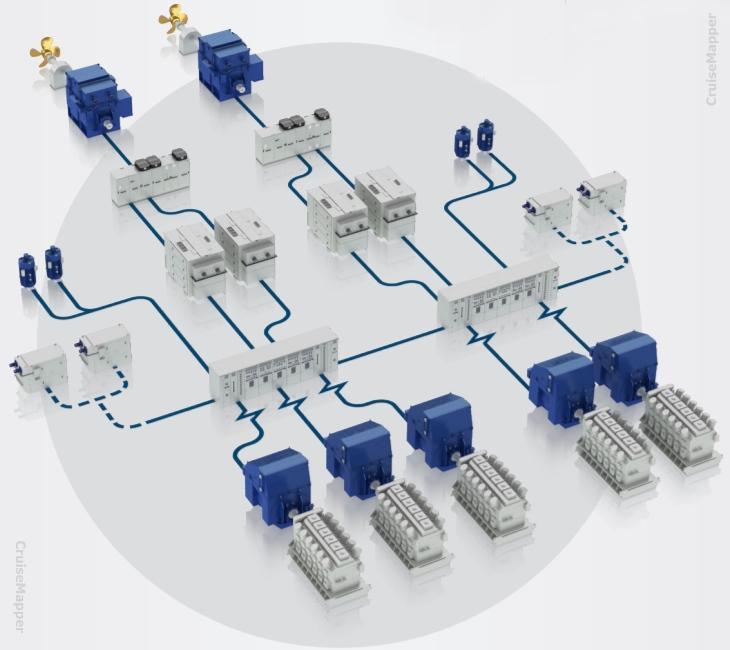
The ship is powered by a total of five Wartsila dual-fuel engines - three 12-cylinder (model 12V50DF, combined output 34,2 MW) plus two 6-cylinder (model 6L50DF, combined output 11,4 MW). Ferryboat's total power output is 45,6 MW. Its propulsion system includes two Wartsila fixed-pitch propellers with twin propeller shafts. Navigation systems are also Wartsila-made, including NACOS Platinum (integrated vessel control system).
The power generated by the main engines/powerplant produces electricity that is used from the propulsion motors, as well as all auxiliary systems and hotel functions. This innovative maritime technology allows the engines to be started and stopped depending on the onboard electricity demand, which additionally improves fuel efficiency.
Vessel's hull is ice-strengthened (class 1A). Rudders are from Becker Marine Systems. When compared to traditional marine engines, in gas mode, the ship's engines produce 1/4 less COx, 2/3 less NOx, zero SOx and no soot particles.
The onboard LNG system consists of 2 bunker stations, 2 horizontal LNG storage tanks by Linde (cryogenic, vacuum-insulated, stainless steel, total gas volume 600 m3), double-walled bunkering lines, pipelines (acid-proof stainless steel), special pipe fittings, gas distribution system, steam boilers. All the ship's electrical equipment is certified "explosion-proof". The LNG is stored at temperatures -160 Celsius (-256 Fahrenheit) and under pressure 4-6 bars.
ABB supplied the vessel's power and electric propulsion systems, as well as the Octopus (smart energy management system). While mechanical propulsion is optimized for a single-speed, electric propulsion is based on rotating speed control resulting in energy efficiency at all speeds. ABB's propulsion also improves passenger comfort as the ship runs much more quietly and smoothly. ABB's Octopus marine technology allows real-time monitoring of the vessel's energy (and fuel) consumption. Based on the collected data, the software suggests optimal performance recommendations.
Spain's first LNG-powered cruiseferry was Hypatia de Alejandria (2019) owned by BALEARIA .
Wind-assisted propulsion
On April 12, 2018, the VIKING LINE -owned ferry Viking Grace became the world's first-ever passenger ship equipped with a rotor sail utilizing wind power. This also made it the world's first hybrid vessel that uses both wind power and dual-fuel (diesel-gas) engines.
"Rotor Sail Solution" is an innovative technology developed by the company Norsepower Ltd (Finland) in 5 years. It reduces fuel consumption and also COx emissions up to 900 tons per year (depending on wind conditions).
The cylindrical rotor sail has a height of 24 m (79 ft) and a diameter of 4 m (13 ft). The technology is based on the "Flettner rotor" (patented by Anton Flettner in 1922) and uses the so-called "Magnus effect" - the spinning rotor (rotating cylinder) drags airflow faster around one side. This creates pressure/speed difference that moves it in the direction of the opposite (lower-pressure) side, creating a force at a right angle to the direction of the wind. This wind-assisted propulsion power drives the ship forward. Unlike traditional cloth sails, the rotor needs no furling (stowing), reefing (reducing sail's area) or line-tending. The rotor sail system is automated and shuts down when unfavorable changes in wind force or direction occur.
Added to the dual-fuel engines, the new technology makes Viking Grace one of the world's most environmentally-friendly passenger ships, operating with very low levels of emissions and noise. Norsepower's wind propulsion system was also installed on VIKING LINE's newest vessel (still unnamed) scheduled for delivery in 2020. The China-built ferryboat is equipped with two Norsepower-produced rotor sails, doubling its wind power potential.
Ship's powerplant includes 4x Wartsila engines (model 8L50DF, total power output 30,4 MW). Propulsion is diesel-electric (2x shafts with fixed-pitch propellers) and wind-assisted (with 1x rotor sail). Engines are dual-fuel (MDO-LNG). As gas tanks are larger than marine fuel tanks. they need 6 times more space. To save hull space, LNG tanks are located on an open deck. LNG tanks are two (type C / vacuum insulated), each with capacity 200 m3 and weight 140 tons (LNG weight 85 tons per tank).
MS Viking Grace is also the world's first ship with the energy recycling system "Ocean Marine" (developed by Climeon AB / Stockholm-based company). The system converts the excess heat (generated by engines and exhausts) into clean (emission-free) electricity with an annual capacity of 700,000 kWh. This electricity is primarily used on cabin decks (including for heating, hot water, lighting). The technology uses heat exchangers that evaporate a carrier fluid circulating in a closed system. This gas (at 2-bar pressure) drives a turbine, then a 100 kW generator produces electricity. After that, the gas is cooled (in a vacuum chamber) and liquefied. Cooling is rapid, as the cold fluid is sprayed out. Then Heat exchangers cool the carrier fluid to temperatures around 20 C / 68 F.
Cruise Ship Fuel Consumption
How much fuel do cruise ships use.
Cruise ship fuel consumption depends on the ship's size. For most vessels, the average consumption is 30-50 miles on a fuel gallon. This will be also determined by other factors using fuel. Ships' gas mileage varies depending on the type and size of ship, the number of passengers on board, and other factors. Larger ships need more fuel to move through the water.
RMS Queen Mary uses 6 tons of marine fuel per hour. Celebrity Eclipse gets 56 feet to the gallon. MS Zuiderdam - .0130 miles per gallon (0.34 tons fuel per mile). This may not seem very good mileage at first glance, however, cruise ships are moving at once thousands of people whereas a car is moving a few.
Nearly all contemporary cruise ships are powered by electricity (motors turn propellers). It powers the air conditioning systems, lights and all other appliances aboard the ship. Most vessels produce the electricity they need by using diesel engines. Some use gas turbine engines. Others use a combination of the two. HFO (heavy fuel oil) is used by diesel engines, while MGO (marine gas oil) is used by gas turbine engines. The MGO is similar to the jet airplanes' fuel.
Speed affects cruise ship fuel consumption because to go faster, vessels must increase the electricity flow to motors. Thus more engines are employed, and it, in turn, increases fuel consumption. For example, Queen Mary 2 consumes 237 tons MGO and 261 tons HFO a day when at full speed. After a certain point, the rate of return decreases from adding engines, because if a ship can manage 17 knots by two engines, it doesn't mean that four engines are going to produce 34 knots.
Cruise companies employ new technologies in order to reduce fuel consumption. Ship's hull, for example, can be applied by silicon coating in order to reduce friction as the ship goes through the water. Friction reduction on Celebrity Eclipse is 5%. Another experiment is LED lighting, using less energy and producing less heat (thus is reduced the demand for electricity and air conditioning). Celebrity Solstice-class vessels have solar panels' field over the AquaSpa pool area. This not only provides shade for the pool area but produced by solar panels electricity is used to decrease the electricity demand from the engines.
RMS Queen Mary 2 is equipped with exhaust gas economizers, using waste heat from engines to produce steam. Then steam is used to heat fuel and QM2 hotel accommodations, laundry, galleys. This reduces the energy amount that has to be produced by ship's engines. The Promas Lite system (mentioned above) generates cruise ship fuel savings in the range of 5-15% depending on the operation type and the actual performance of the ship's existing propeller.
How marine ships fuel consumption increases at higher speeds? Next infographic shows the speed-fuel consumption relation on container ships (their sizes are measured in TEU-containers/20 ft equivalent units), which are similar by speeds and even gross tonnage to cruise passenger ships.
Cruise Ship Pollution
Today cruising is one of the most popular vacations, but there are significant environmental downsides. Mega-ships burn the dirtiest fuel in the world, even if they are sitting in port. Asthma, cancer, respiratory illness, heart disease, are the results of burned in ports nasty bunker fuel.
Shore-to-Ship Power Supply
Those who support the cruise industry point out that cruising has never been more popular. However, more ships generate more pollution. A solution is to have docked vessels plug into the port's shore power grid. Most of the world's largest cruise ports have such dockside electrical hookups, reducing bad emissions by up to 95%.
Aka "cold ironing" and "shore-to-ship power", shore power capability allows berthed cruise ships to shut down their diesel engines (main and auxiliary) and plug into city's electrical grid, using locally-produced electricity for all shipboard equipment and services - including cooling, heating, lighting, emergency, etc. The technology greatly reduces exhaust emissions in seaports. Next video animation reviews this technology.
TUI Cruises Ships Environmental Report
TUI published the company's environmental impact report (first of its kind) including environmental objectives and TUI strategy for a 5-years period. TUI said it planned to issue reports every 2 years. According to it, in 2012 TUI reduced by 3.7% per nautical mile its fuel consumption, and expects further 5% reduction, reducing CO2 emission at the same time by 0.5 kg to 0.55 kg per traveler.
Energy efficiencies are the key to reduce fuel consumption, CO2, and other emissions, and contribute to climate protection. Mein Schiff 3, for example, is expected to feature special energy management systems that help to consume 30% less energy than comparable size ships. TUI is focused on reducing recycling and waste, too. In 2012, TUI reduced the waste amount to 10,7 L (per passenger day), which is 27,8% less (over 2011). In 2012, TUI used 54,463 tons of fuel, including 9,732 tons LSFO (low sulfur fuel oil), 40,880 tons HFO (heavy fuel oil) and 3,851 tons MDO (marine diesel oil). Fuel consumption was 0,367 tons per nautical mile.
All new TUI ships are built to the latest standards with environmentally-friendly marine technologies. These vessels, both as design (hull and superstructure) and implemented technologies, are highly energy-efficient. Each consumes 1/3 less energy compared to most cruise liners. The advanced exhaust cleaning system uses a catalytic and scrubber converter. This technology allows sulfur emissions to be reduced by 99%, and NOx emissions - by 75%.
All-electric passenger ships
In May 2019, the US company "Maid of the Mist" ordered ABB two new all-electric vessels for the company's Niagara Falls tours. Both catamarans are 100% emission-free being powered by high-capacity batteries. Each ship is fitted with two battery packs (combined capacity 316 kWh / 563 HP output). The electricity is provided by 2 fully-independent power systems and split evenly between the 2 hulls.
Shoreside battery charging takes just 7 min (per ship). The powerplant is controlled by ABB's PEMS (Power and Energy Management System), which also optimizes the onboard energy use. Ships' batteries are charged using hydropower (water-generated electricity), which as of 2019 accounts for ~7% of the USA's total electricity production. In addition to the shoreside charging connection, ABB supplied the newbuilds with switchboards, motors, integrated control systems and ABB Ability's Marine Remote Diagnostic System (24-hour equipment monitoring and predictive maintenance).
Battery power is used during turnaround navigation in ports when the onboard diesel-electric generators are switched off. For ferry batteries (fabrication, delivery, and installation) is often contracted the Canadian company Corvus Energy (Richmond BC) - one of the world's largest manufacturers and suppliers of energy storage solutions (ESS) for the maritime industry. The company provides ESS to hybrid and all-electric ferries. As of 2019, Corvus Energy delivered its innovative product line "Orca ESS" to 200+ vessel conversion/upgrade projects, totaling 200+ MWh.
At the following tag-link can be found listed all CruiseMapper's news related to propulsion-power accidents .
This cruise vessel technology-related survey is integrated with our articles on passenger ships building and safety , and the statistical ones about registry/flag-states , cost to build , speed , passenger capacity . All ship links redirect to the vessel's "itinerary-schedule-current position" page.
Cruise Tips For Families & Single Cruisers
Things to Know Before You Cruise
Cruise Ship Propellers: Size, Speed, And Sustainability
As a cruise ship enthusiast and a lover of the open sea, I have always been fascinated by the sheer size and power of cruise ship propellers. These mammoth vessels require propellers that can withstand the harsh marine environment, while also providing the necessary thrust to navigate through the water.
In this article, we will delve into the world of cruise ship propellers, exploring their design, materials, and safety considerations, as well as the latest technological advancements that are improving their efficiency and sustainability.
From the traditional fixed-pitch propellers to the modern azipods, cruise ship propellers have come a long way in terms of design and functionality. These propellers must be strong enough to withstand the forces of the sea, while also being flexible enough to provide the necessary maneuverability for the ship.
In addition, the sustainability of cruise ship propellers is becoming increasingly important, as the industry strives to reduce its environmental impact and promote a more sustainable future.
Join me as we explore the fascinating world of cruise ship propellers, and discover how these powerful machines are shaping the future of ocean travel.
- Cruise ship propellers can vary in size and are made from an alloy of stainless steel and aluminium to withstand corrosion and degradation.
- Modern cruise ships use azipods, which have the propeller at the front of the pod and can spin 360 degrees to help with steering, and typically have three propellers for balance between fuel consumption, thrust, and manoeuvrability.
- The number of propellers a ship has determines its speed, fuel consumption, and ease of turning, and the biggest propellers belong to container ships, with the MSC Oscar having propellers that are approximately 35 feet in diameter.
- Changes are being made to cruise ship engines and fuel types to make ships more sustainable, and while the odds of falling overboard on a cruise ship are low, it’s not safe to swim over to a cruise ship in a dock due to sudden current shifts.
Propeller Design and Materials
I learned that cruise ship propellers are a crucial component of these mammoth vessels, designed to withstand the harsh conditions of the open sea. These propellers are made from an alloy of stainless steel and aluminium, chosen for their durability and corrosion resistance.
To ensure the safety of passengers, propeller design is carefully considered to minimize the risk of accidents. Propeller maintenance is also essential to ensure that the ship continues to operate smoothly and efficiently.
The manufacturing process involves precision engineering, with each propeller tailored to the specific needs of the ship. With modern advances in technology, propellers are becoming more efficient and eco-friendly, helping to reduce the environmental impact of these massive ships.
Overall, the design and construction of cruise ship propellers are critical to the safe and efficient operation of these vessels.
Propeller Function and Safety
Ensuring the proper maintenance of these underwater giants is crucial to keep them running smoothly and minimize the chances of any potential mishaps hitting the fan.
Cruise ship propellers are the workhorses of the ship, responsible for propelling these mammoth vessels through the water. They are designed to withstand the corrosive effects of saltwater and other forms of degradation. Any damage to the propeller can cause significant problems for the ship, including reduced speed, increased fuel consumption, and even accidents.
Propeller maintenance is an ongoing process that involves regular inspections, cleaning, and repairs. The blades must be checked for cracks, erosion, and other forms of damage. The propeller shaft must also be inspected for wear and tear. Any damage found must be repaired promptly to prevent further damage.
Propeller accidents can be catastrophic, causing damage to the ship and putting the lives of passengers and crew at risk. Proper maintenance is essential to prevent accidents and ensure that the ship operates safely and efficiently.
Modern Technology and Efficiency
Implementing new technology and more efficient systems has become a top priority for the maritime industry. Cruise ship companies are investing in modern technology to reduce their carbon footprint and improve their efficiency.
Here are some of the efficiency improvements and future developments in cruise ship propellers:
Electric propulsion systems – Some cruise ships are replacing their traditional diesel engines with electric propulsion systems. These systems have fewer moving parts and are more efficient than their diesel counterparts. They also produce fewer emissions, making them more environmentally friendly.
Advanced propeller designs – Cruise ship propellers are becoming more advanced, with designs that reduce drag and improve efficiency. These new designs use materials that are lighter and stronger than traditional stainless steel and aluminum alloys.
Azipod technology – Azipod technology, which allows the ship to turn in any direction without the use of a rudder, is becoming more popular in the cruise industry. These systems use less fuel and are more maneuverable than traditional propulsion systems.
Alternative fuels – Cruise ships are exploring alternative fuels such as LNG (liquefied natural gas) and hydrogen fuel cells. These fuels produce fewer emissions than traditional diesel and are more sustainable in the long run.
Efficiency improvements and future developments in cruise ship propellers are essential for the maritime industry to reduce its environmental impact and improve its efficiency. As technology continues to evolve, we can expect to see more advanced propulsion systems and designs in the future. The use of alternative fuels and electric propulsion systems will also become more prevalent, making cruise ships more sustainable and environmentally friendly.
Environmental Impact and Sustainability
Reducing the environmental impact of maritime transportation is crucial for the future of our planet. As the world becomes more aware of the impact of carbon emissions on our environment, the cruise industry is looking to alternative fuel sources to power their ships and reduce their carbon footprint.
One such fuel is liquefied natural gas (LNG), which has lower emissions than traditional fuels such as diesel. In fact, some new ships are being designed to run entirely on LNG, which will significantly reduce their carbon emissions.
In addition to alternative fuels, cruise companies are also investing in technology to reduce their environmental impact. One area of focus is the use of azipod propellers, which are more efficient than traditional propellers and require less power to operate. This means that ships using azipods can travel further and faster while using less fuel, resulting in fewer carbon emissions.
Overall, the cruise industry is working to find sustainable solutions to reduce its impact on the environment and protect the planet for future generations.
How often do cruise ship propellers need to be replaced?
The lifespan of cruise ship propellers varies depending on usage and maintenance frequency. Generally, they can last between 5-10 years before needing replacement. Regular inspections and repairs can extend their lifespan and ensure safe operation.
How do cruise ship propellers affect marine life?
Cruise ship propellers act as the beating heart of a ship, but their impact extends beyond. They disrupt the marine ecosystem, causing environmental damage. The underwater noise can harm marine life, affecting their communication and migration patterns.
Can cruise ship propellers be recycled?
Unfortunately, cruise ship propellers cannot be easily recycled due to their complex materials and design. This contributes to their environmental impact, but efforts are being made to improve sustainability through more efficient propeller technology.
How do propellers impact the noise level on a cruise ship?
As I stand on the deck of the cruise ship, I can’t help but notice the smoothness of the ride. The propeller design plays a crucial role in reducing vibrations and noise levels. Modern advances in technology have made it possible to create more efficient and quieter propellers.
Are there any alternative propulsion systems being developed for cruise ships?
I’ve been researching alternative solutions for cruise ship propulsion, and future prospects are looking promising. New technologies like fuel cells, wind power, and hybrid systems are being developed to reduce emissions and increase efficiency, offering a greener future for the industry.
- The Best VPN Services in 2024 (+Bonus Software)
- Square: The Best All-in-one Payment Processing Solution for Small Businesses
- Surfshark: Secure Online VPN Service & More
- Shopify: Start and Grow Your E-commerce Business Right Now
- DocHub: Easily Edit, Fill & Sign PDF Files On the Go
- How To Avoid Being Overcharged By An Airline For Travel Visa
- 4 Best Practices for Airport Wi-Fi Networks
- 5 Best Practices To Make Your Internet Faster
Propulsion of Cruise Liners and Other Ships – How These Floating Sea Mammoths Move
Welcome aboard, maritime enthusiasts! Ever gazed at a massive cruise liner cutting a majestic path through the ocean and wondered, “Just how does that behemoth keep moving?” You’re not alone. In this blog post, we dive into the fascinating world of ship propulsion – the force that keeps these sea leviathans afloat and moving. The importance of propulsion systems in the movement of cruise liners and other ships can’t be overstated. In this journey, we’ll navigate through the history of ship propulsion, swing by the various types of propulsion systems, and explore how they work. We’ll also take a look at the innovating strides in modern ship propulsion, and discuss the environmental considerations that are steering the future of this technology. Strap in, and let’s set sail on this enlightening voyage!
Propulsion, in the simplest terms, refers to the action or process of pushing or driving an object forward. In the context of ships and cruise liners, propulsion is the mechanism that enables these massive structures to move across bodies of water. It involves harnessing various forms of energy to create a force that propels the ship forward, overcoming factors such as water resistance and ship weight. Thus, propulsion is a vital element in maritime travel, acting as the ‘engine’ that powers the movement of ships.
The importance of propulsion in cruise liners and other ships cannot be overstated. Primarily, it enables these enormous structures to navigate across vast oceans, carrying passengers or cargo from one point to another. Without it, ships would be static objects, incapable of serving their primary functions. But it’s not just about movement, propulsion systems also play a crucial role in ship maneuverability. They allow ships to adjust their course, avoid obstacles, dock, and navigate through narrow passageways. Moreover, the type of propulsion system can also significantly impact a ship’s fuel efficiency, operational costs, and environmental footprint, making it a critical factor in the overall performance and sustainability of maritime operations.
Ships have been in use as a means of transport since early times. Ships are believed to have originated from rafts. Earlier ships used oars and were moved using sheer manpower. Later they were powered by wind with the help of sails. Then steam, diesel, and now even nuclear power are being used. Ships have undergone tremendous change over the years. The basic structure and parts of a modern cruise liner are shown in the figure.
Various parts of a modern ship. 1. Funnel 2. Stern 3. Propeller and rudder 4. Portside (right side is starboard side) 5. Anchor 6. Bulbous bow 7. Bow 8. Deck 9. Superstructure
Motions of ships require heavy power generation and an effective propulsion system. Without suitable means of propulsion, ships will be just floating iron mountains and nothing more. What causes a ship to move through the water? Propellers have this responsibility.
The propulsion of ships normally occurs with the assistance of a propeller. It has three or four (or sometimes even more in the case of propellers aimed at working under low noise conditions) blades. These blades are twisted and poking out at angles from a central hub (a rounded region on which the blades are attached). The hub is connected to a shaft which is connected to the ship’s engine. Usually, there will be two propellers and sometimes even more, and they are provided at the rear end of the ship. Propellers of ships and cruise liners are comparatively very large in size and require heavy torque for rotation.
How does a Propeller Work?
Sir Isaac Newton stated in one of his works “Actio est reactio”. This sounds very familiar. This is Newton’s third law. Propellers work based on Newton’s third law which states that for every action there is an equal and opposite reaction. When the propeller is made to rotate, it draws water from the front of the ship and accelerates it towards the rear or backside of the ship. Because of the momentum imparted by the propeller to water, it experiences an equal backward momentum. In other words, water exerts a force on the propeller in the opposite direction. This force is called thrust. The thrust developed on the propellers is transferred to the ship’s structure through the main shaft which ends in a thrust bearing. In this way, propellers generate sufficient thrust to move the ship forward. Explanation of propulsive force generated by a propeller is very complex and is beyond the scope of our present topic. Earlier ships used rudders to help them steer. A rudder is basically a large flap provided at the back of the propeller. For steering, the rudder is inclined at an angle which changes the direction of expelled water. This results in a change in the direction of reactive force (sideways). This in turn helps the ship to turn.
Engine: The Heart of the Ship
Many engines were developed over the course of time to make ships faster and more efficient. Out of the many proposed theories steam engines and later diesel engines were put into practice. Turbines are also used sometimes in combination to generate sufficient power (also electricity for the ship). The workings of steam and diesel engines are explained below.
1. Triple-expansion steam engines
Earlier steam engines were of single expansion type (steam is made to expand only in one stage) but they were later modified to triple expansion types. Triple-expansion steam engines were the most common and advanced engines used in the early days. The chemical energy of coal is converted to thermal energy by burning coal to generate steam. This is done in very large boilers. Steam at high pressure from the boiler is supplied to the engine.
The engine basically consists of three cylinders. High-pressure steam
is supplied to the first cylinder. Steam expands pushing the piston down. The steam from the first high-pressure cylinder then goes to an intermediate cylinder where it again expands. The resulting low-pressure steam then goes to the last cylinder where it undergoes the final expansion. Steam is made to expand in three successive stages hence the name triple expansion engine. Triple expansion engines provided greater speed as well as better heat conversion (to mechanical energy). The pistons of the three cylinders are connected to the main propeller shaft and they work together to rotate the shaft as shown in the animation shown alongside.
ALSO CHECK OUT OUR OTHER ARTICLES
- Top 20 Engineering Websites
- How To Convert Load To Gcash (Step-by-step Guide in 2023)
- How to Increase tweets impression using Useviral
- Step-by-step Guide on How to Transfer Google Drive to Another Account
- Complete Guide on How to Cash-in in GCash – 2023
2. Diesel Engines
Diesel engines are nowadays widely used to power cruise liners and other ships. Diesel engines became increasingly popular because of their high output power, better efficiency and reduced fuel consumption. But the diesel engines used in ships are different from the ones used in other automobiles. As seen earlier the propellers are very large and hence rotating them requires very high power (or torque). So ships diesel engines are very large in size weighing up to 2000 tons! The working speed of these engines varies from 60 to 200 rpm and they use low-grade heavy fuel (Bunker C fuel). A typical diesel engine consists of a piston fitted in a cylinder arrangement. The number of cylinders varies depending on the power output required.
Working of Diesel Engines
Diesel engines used for ship propulsion are essentially 4 stroke engines. Their working involves the following sequence of processes, which are illustrated in the animation given alongside.
1. Air is sucked inside the cylinder during the downward motion of the piston because of the partial vacuum created within the cylinder.
2. This air is then compressed to very high pressure during the next upward stroke of the piston (here “stroke” means the motion of the piston within the cylinder).
3. At this instant diesel is sprayed in the form of fine droplets. Due to the high pressure inside the cylinder, diesel gets ignited. The air-fuel mixture undergoes combustion, expanding the gases which in turn push the piston down.
4. During the next upward stroke, the burnt-out gases are expelled out.
This cycle is repeated. Since there is a power stroke for every four strokes of the piston, the engine is called a four-stroke engine. The reciprocating motion of the piston is converted to rotational motion by means of a connecting rod attached to a crank (the rotating metal disc shown in the animation). The crank rotates the shaft which in turn drives the propeller. A number of pistons are connected to the shaft and they all work together to turn the shaft. The manner in which the pistons are connected is made clear with the animation shown alongside.
RMS Titanic: The Unsinkable Ship
RMS Titanic, the world’s largest, fastest, and most luxurious cruise liner at that time still comes to everyone’s mind when you first hear the term cruise liners. It was an engineering marvel at that time. In those days steam engines were used to run the ship. Diesel engines were not yet in use. She had two reciprocating engines and a turbine. The reciprocating engines were triple expansion type engines which have been explained above.
Steam generated in massive boilers and is fed to the engine. Exhaust steam from the engine is fed to a turbine. Steam is expanded within the turbine which causes the turbine to rotate. This rotating turbine drives a 4-blade propeller (17 feet diameter) situated at the center line of the ship. Each engine drove a three-bladed propeller (23.5 feet diameter) on the starboard and port side of Titanic. The reciprocating engines can be seen clearly in James Cameroon’s movie.
As we all know, the Titanic hit an iceberg and sank into the icy waters of the Atlantic during her maiden voyage. Immediately after sighting the iceberg the engines were put at full astern (made to work in reverse to create a breaking effect), but she couldn’t maneuver away for the ship was too close.
Advanced Propulsion Systems in Modern Cruise Liners and Ships:
Although propellers are still in use, they have undergone many technical changes. Nowadays, modern cruise liners are equipped with azimuth thrusters. Azimuth thrusters are simply the propellers attached to pods, but they are capable of rotating through 360 degrees. Hence they help ships to steer more quickly and effectively. The entire propeller is made to rotate at the desired angle in order to steer the ship. Azimuth thrusters removed the use of rudders in modern ships. This type of propeller system is used in Oasis of the Seas – the largest, most luxurious, and fastest cruise liner in the present world. The ship is capable of turning 360 degrees without any change in its position!! Had RMS Titanic been equipped with one of these, her story would have been quite different.
The evolution of ship propulsion systems over the years has been nothing short of remarkable. From the rudimentary reciprocating engines of the Titanic era to the innovative azimuth thrusters in modern cruise liners like Oasis of the Seas, these advancements have significantly enhanced navigational precision and efficiency. It’s intriguing to speculate how different the fate of Titanic might have been with today’s technology. As we continue to push the boundaries of marine engineering, who knows what the future of sea transportation might hold? We can only anticipate even more incredible breakthroughs and improvements in this field.
Click here for more!
Related Posts

Functions of Fuel Injection Pumps
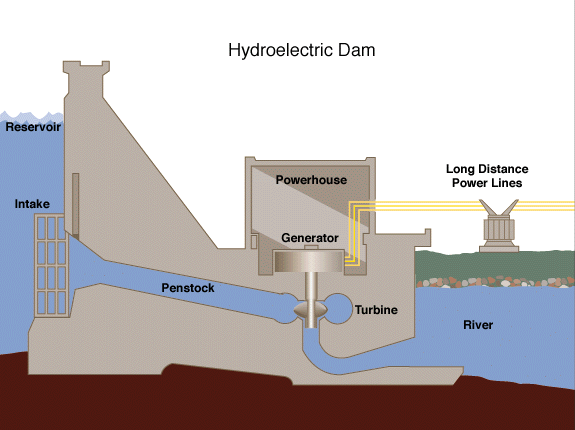
Hydraulic Turbines: Hydroelectric Power Generation & Working

Differences between WCDMA & CDMA2000
Leave a reply cancel reply.
Save my name, email, and website in this browser for the next time I comment.
Notify me of follow-up comments by email.
Notify me of new posts by email.
- Fri 2024-04-12
- Advertising
- Wind and Wave

- Login / Register

- News Home Page
- Bookmarked News
- WorldWide News
- Technology News
- Miscellaneous News
- Articles Home Page
- Bookmarked Articles
- Fire & Safety Articles
- Regulations Articles
- Navigational Articles
- Machinery Articles
- Oil & Gas Articles
- Structural Articles
- Management Articles
- Our Services
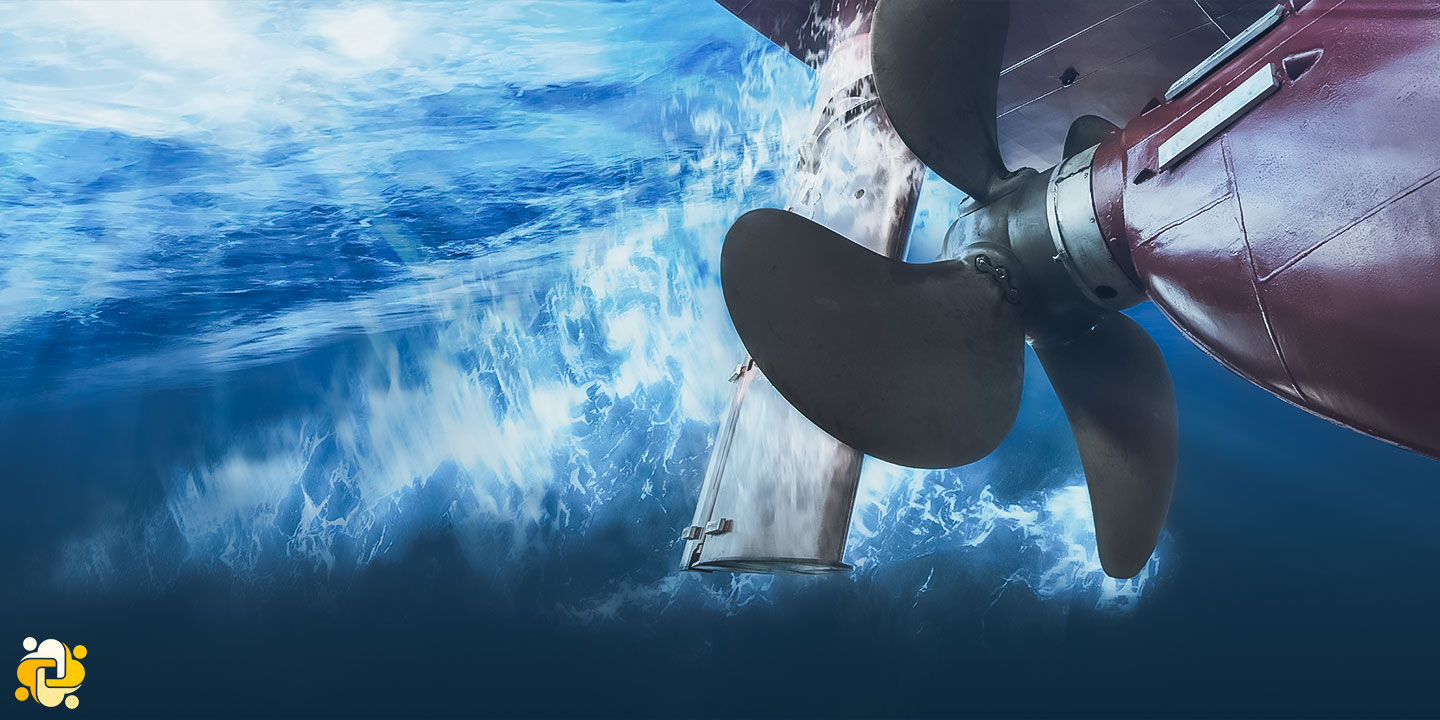
The Science of Ship Propellers: From Basics to Future Innovations

Introduction
In the world of maritime engineering, propellers play a pivotal role in propelling vessels through water, making them a cornerstone of ship propulsion. This technical article explores the fundamental principles of propellers, delves into various types of propellers, their materials and construction, and provides insights into future innovations in ship propulsion technology.
John Ericsson, hailing from the Swedish province of Vermland, can be credited as the inventor of the ship propeller. This groundbreaking invention found its way into the design of the iconic Civil War ironclad vessel, the Monitor.
Ericsson's journey into the realm of engineering began when he initially contributed to the planning of a Swedish canal. During his involvement with this project, he received tutelage in mathematics and the sciences, further fueling his passion for innovation. His dedication led him to enlist in the Swedish Army at the tender age of 17, where he engaged in topographical surveying.
In 1826, Ericsson embarked on a transformative chapter in London, showcasing the breadth of his engineering prowess. His achievements included advancements in power transmission through compressed air, pioneering new steam boiler designs, introducing condensers to enhance the range of marine steam engines, and developing engines for warships positioned below the waterline, offering protection against shellfire. His contributions extended to creating the steam fire-engine, a steam locomotive, and a device capable of extracting salt from brine, and pioneering superheated steam engines and the "caloric" engine.
Among his myriad inventions, Ericsson's most enduring legacy remains the screw propeller, a propulsion system that remains a cornerstone of maritime engineering. In 1839, he introduced propellers to vessels navigating canals and inland waterways, marking a significant milestone in marine technology.
Notably, Ericsson's innovative spirit extended to the construction of a formidable "big frigate" for the U.S. Navy, underscoring his dedication to advancing naval technology. His crowning achievement in naval engineering came with the design and construction of the Monitor, a vessel that played a pivotal role in the Union Navy during the Civil War. Impressively, he accomplished this feat within a mere 100 working days, solidifying his status as a pioneering figure in the annals of maritime history.
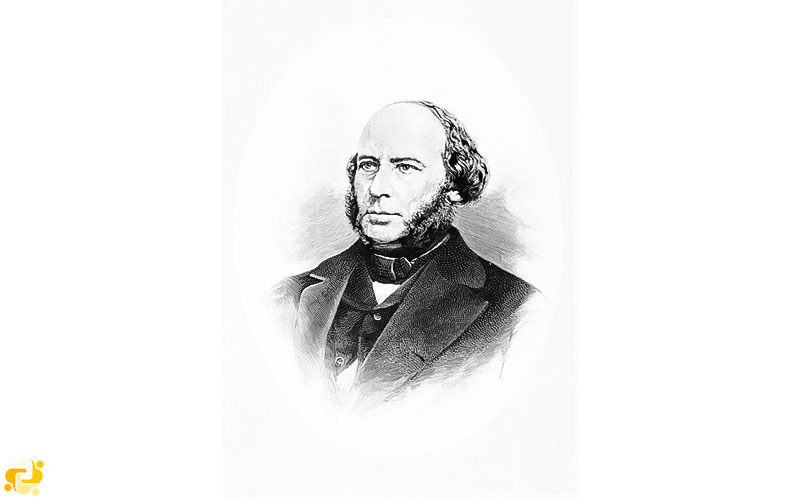
Figure 1 - John Ericsson
What is a propeller?
A ship propeller, often simply referred to as a propeller, is a crucial component of a ship's propulsion system. It is a rotating device with a set of blades that are strategically designed to generate thrust and propel the ship through water. Ship propellers are typically located at the stern (back) of the vessel and are immersed in the water.
The primary function of a ship propeller is to convert the mechanical power generated by the ship's engines into a forward or backward motion by pushing or pulling water. This action creates a reaction force in the opposite direction, adhering to Newton's third law of motion, which states that for every action, there is an equal and opposite reaction.
Material and Construction of Propeller
Marine propellers are made from corrosion-resistant materials as they are made operational directly in seawater which is a corrosion accelerator. The materials used for making marine propellers are an alloy of aluminum and stainless steel. Other popular materials used are alloys of nickel, aluminum, copper alloy castings and bronze which are 10-15 % lighter than other materials and have higher strength.
Propeller castings are classified as specified in below:
- High strength brass casting, Grade 1, CU 1
- High strength brass casting, Grade 2, CU 2
- Aluminum bronze casting, Grade 3, CU 3
- Aluminum bronze casting, Grade 4, CU 4

Table 1 – Chemical Composition of propeller castings, Classification rules
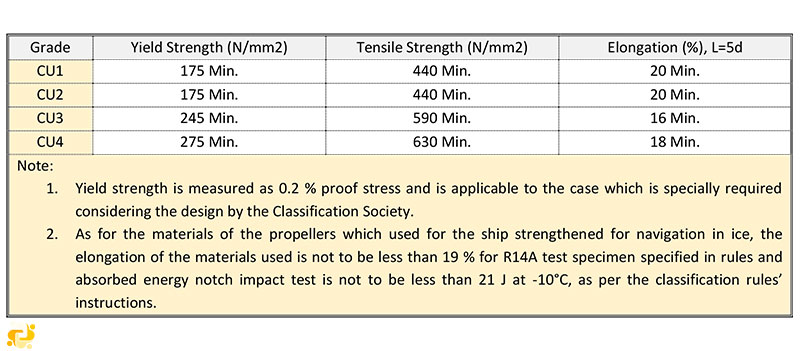
Table 2 – Mechanical Properties of Propeller Castings, Classification Rules
Types of Propellers
Propellers are be classified on the basis of several factors. The classification of different types of propellers is shown below:
Classification by Number of Blades Attached
Propeller blades come in various configurations, ranging from three blades to four blades, and sometimes even five blades. However, the most commonly used options are three-blade and four-blade propellers.
A three-blade propeller exhibits the following characteristics:
- It boasts a lower manufacturing cost compared to other types.
- Typically, it is constructed from aluminum alloy materials.
- Offers excellent high-speed performance.
- Provides superior acceleration when compared to other designs.
- However, it may not be as efficient for low-speed handling.
A four-blade propeller, on the other hand, demonstrates the following features:
- Its manufacturing cost is generally higher than that of three-blade propellers.
- Typically crafted from stainless steel alloys for enhanced strength and durability.
- Delivers commendable low-speed handling and overall performance.
- Exhibits better holding power in rough seas.
- Offers improved fuel economy compared to other propeller types.
In the case of a five-blade propeller, these characteristics are notable:
- The manufacturing cost is higher than all other propeller types.
- It tends to produce minimal vibrations compared to other configurations.
- Five-blade propellers excel in providing substantial holding power in rough sea conditions.
Finally, the six-blade propeller possesses the following attributes:
- It is associated with a high manufacturing cost.
- Similar to the five-blade design, it generates minimal vibrations.
- Six-blade propellers are known for their remarkable holding power in rough seas.
- They exhibit a reduced induced pressure field over the propeller.
- Large container ships are often equipped with five or six-bladed propellers for their enhanced performance in challenging maritime conditions.
Classification By pitch of the blade
Pitch of a propeller can be defined as the displacement that a propeller makes for every full revolution of 360 ̊. The classification of the propellers on the basis of pitch is as follows:
Fixed Pitch Propeller
The blades in the fixed pitch propeller are permanently attached to the hub. The fixed pitch type propellers are cast and the position of the blades and hence the position of the pitch is permanently fixed and cannot be changed during the operation. They are normally made from copper alloy.
Fixed pitch propellers are robust and reliable as the system doesn’t incorporate any mechanical and hydraulic connection as in Controlled Pitch Propeller (CPP). The manufacturing, installation and operational costs are lower than the controlled pitch propeller (CPP) type. The maneuverability of the fixed-pitch propeller is also not as good as CPP.
These types of propellers are fitted in a ship that does not have good maneuverability requirements.
Controllable Pitch Propeller
In a Controlled Pitch type propeller, it is possible to alter the pitch by rotating the blade about its vertical axis by means of mechanical and hydraulic arrangement. This helps in driving the propulsion machinery at constant load with no reversing mechanism required as the pitch can be altered to match the required operating condition. Thus the maneuverability improves and the engine efficiency also increases.
This drawback includes the possibility of oil pollution as the hydraulic oil in the boss which is used for controlling the pitch may leak out. It is a complex and expensive system from both installation and operational points. Moreover, the pitch can get stuck in one position, making it difficult to maneuver the engine.
However, the propeller efficiency for the CP propeller is slightly lower than the same size FP propeller due to the larger hub to accommodate the blade pitch mechanism and piping.
Installation tests of new ships’ propellers
When it comes to the installation of new ship propellers, a series of rigorous tests and inspections are essential to ensure their optimal performance and safety. Here, we delve into these crucial installation tests in more detail:
Balancing Tests
One of the fundamental aspects of propeller installation is the meticulous examination of its balance. Propellers must undergo both static and dynamic balancing tests to ascertain their stability and precision.
Static Balancing Tests: These tests are conducted to evaluate the propeller's balance while it remains stationary. Ensuring that the propeller is perfectly balanced when not in motion is critical for avoiding vibrations and undue stress on the propulsion system. Any imbalances discovered during static balancing tests are addressed promptly to prevent issues during operation.
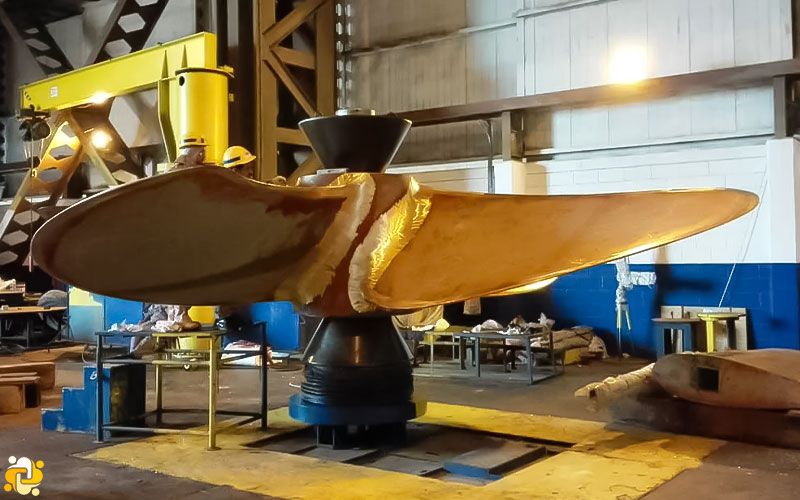
Figure 2 - Static Balancing Test
- Dynamic Balancing Tests: Dynamic balancing tests are particularly vital for propellers that will operate at speeds exceeding 500 revolutions per minute (rpm). These tests assess the propeller's balance while it is in motion, mimicking real-world conditions. They help identify any dynamic imbalances that might occur during operation, which can lead to vibrations and potential damage to the vessel. If issues are detected, corrective measures are taken to rectify them.
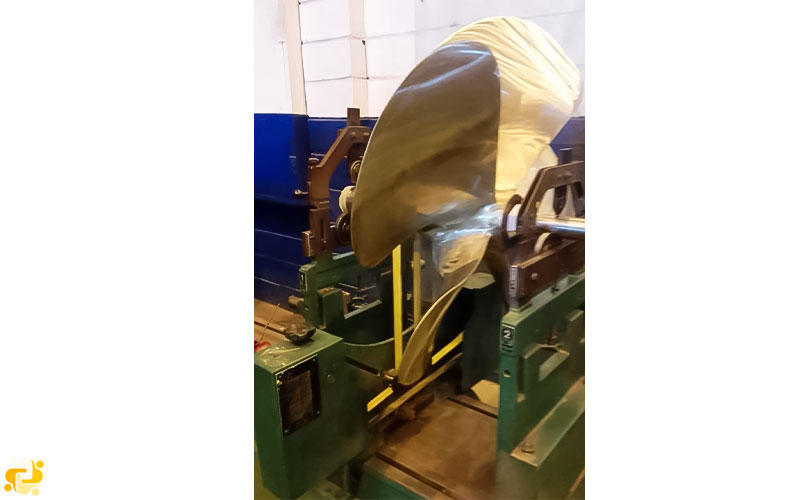
Figure 3 - Dynamic Balancing Test
Contact Tests
In cases where the propeller is force-fitted onto the taper of the propeller shaft cone, it is imperative to conduct contact tests. These tests focus on verifying the precise alignment and contact points between the propeller and the mating surfaces, such as the shaft cone. This meticulous examination ensures that the propeller is securely attached, minimizing the risk of slippage or misalignment during operation. Various methods, including contact-facing tests and other suitable means, are employed to assess the contact between these critical components.
Confirmation of Push-Up Length
For propellers that are force-fitted onto the propeller shaft without the use of a key, it is essential to confirm and record the push-up length. This parameter indicates the depth to which the propeller is fitted onto the shaft. Ensuring the correct push-up length is crucial for maintaining the propeller's optimal position and alignment. Any deviations from the specified push-up length can lead to inefficiencies, vibrations, or even damage to the propulsion system. Therefore, accurate measurement and documentation of this parameter are integral to the installation process.
A look to the future
By 2030, the marine industry is expected to see significant advancements in ship propulsion technology. One area of focus will be on reducing emissions and improving fuel efficiency. This will likely lead to the development of hybrid propulsion systems that combine traditional propellers with electric motors or alternative fuels.
Another area of focus will be on improving the maneuverability and speed of vessels. This could lead to the development of new types of propulsion systems, such as magneto hydrodynamic propulsion or air lubrication systems.
Additionally, there may be advancements in materials science that allow for the creation of more efficient and durable propellers. This could include the use of composite materials or 3D printing technology.
Overall, the future of ship propellers will likely see a combination of traditional and innovative technologies that prioritize efficiency, sustainability, and performance.
Three Innovative Propeller Types
Sharrow Propeller
The Sharrow Propeller is an innovative marine propulsion technology designed to enhance efficiency and reduce fuel consumption. Invented by Dr. James Sharrow and developed by Sharrow Marine over seven years, it features a unique blade design that reduces drag, increases thrust, and can lower fuel consumption by up to 15% compared to traditional propellers. This groundbreaking technology also offers improved vessel performance, quieter operation, and reduced emissions, making it environmentally sustainable. However, potential drawbacks include its initial cost, limited availability, ongoing testing for long-term durability, and compatibility concerns with certain vessels and engines. Despite these challenges, the Sharrow Propeller represents a significant advancement in marine propulsion technology and is likely to gain popularity in various marine applications.
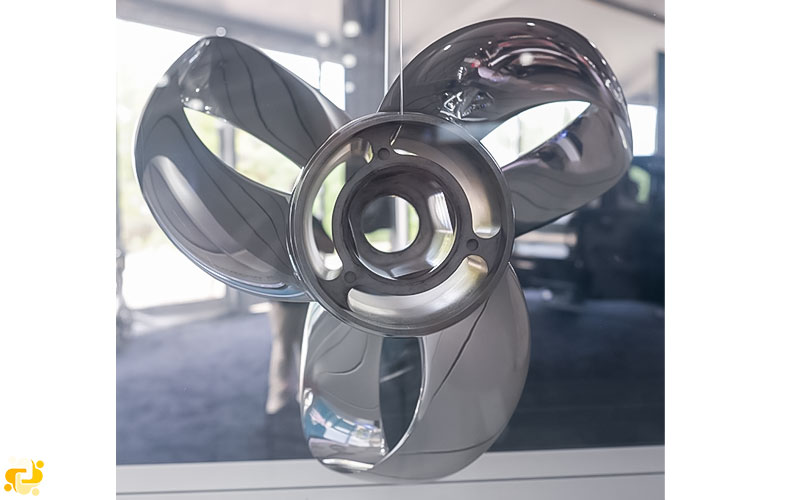
Figure 4 - The Sharrow Propeller
How it works?
The Sharrow Propeller represents a groundbreaking advancement in marine propulsion technology. Unlike a standard propeller, which generates a concentrated tip vortex leading to energy loss and the risk of cavitation, the Sharrow Propeller eliminates this problem entirely by design. The key innovation lies in the absence of a traditional propeller tip, which means there is no corresponding tip vortex. This distinctive feature has been empirically validated through underwater video footage comparing the performance of a conventional propeller to that of the Sharrow Propeller.
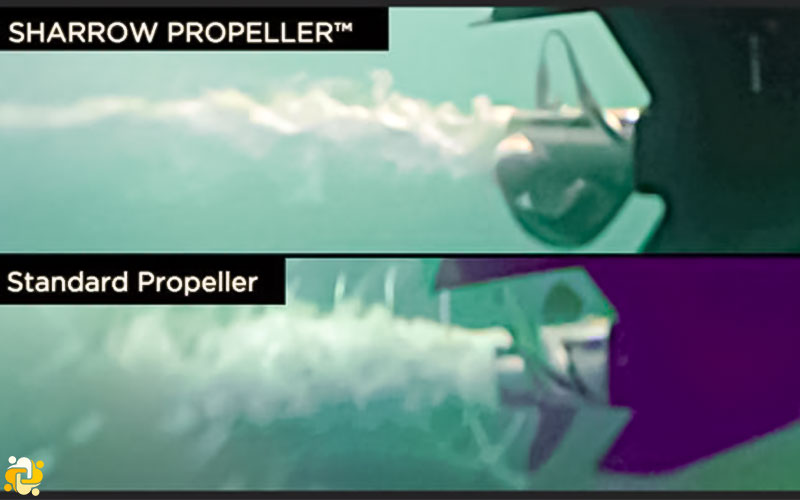
Figure 5 - Sharrow Propeller VS. Standard Propeller
In these captivating underwater visuals, the contrast between the two propeller types becomes strikingly apparent. When observing the conventional propeller in action, it becomes evident that the "bubbles" emanating from each blade converge into the familiar helical patterns, unmistakably indicating the presence of the tip vortex. It is noteworthy that the occurrence of tip vortex cavitation (TVC) is not solely a function of tip speed but is more intricately related to blade loading.
In stark contrast, the Sharrow Propeller™ showcases a mesmerizing absence of tip vortex cavitation when viewed through the lens of the underwater video. This remarkable outcome underscores the Sharrow Propeller's unparalleled ability to mitigate energy loss and cavitation, setting a new standard in marine propulsion technology. Its innovative design, characterized by the elimination of the traditional propeller tip and its consequential eradication of the tip vortex, represents a transformative leap forward in the world of marine engineering.
Electromagnetic thrusters
Electromagnetic forces potentially provide a means of propulsion for a ship without the aid of propellers or oars. The laws governing the electromagnetic force were known in the 19th century, apart from a few isolated experiments such as Faraday's attempt to measure the voltage along the River Thames caused by Its movement through the Earth's magnetic field and Hartmann's work on electromagnetic pumps in Measured in 1918, the subject largely awaited engineering development until the 1960s.
The idea of electromagnetic thrusters was first patented in the United States by Rice during 1961. After this invention, the United States took an important role in theoretical and experimental studies, which led to the Westinghouse Research Laboratory report in 1966. The report suggests that higher magnetic field densities are needed before this option can provide a real alternative to ship propulsion. In the 1970s, superconducting coils allowed for further advances in this concept.
The basic principle of electromagnetic propulsion is based on the interaction of the magnetic field B, which is placed by a fixed coil inside the ship, and the electric current passed through the seawater from the electrodes on the bottom of the ship or through a conduit, as shown diagrammatically is shown, is created. In the figure below, since the magnetic field and the current are in orthogonal directions, the resulting Lorentz force provides the necessary pumping action. The Lorentz force is J × B, where J is the induced current density.
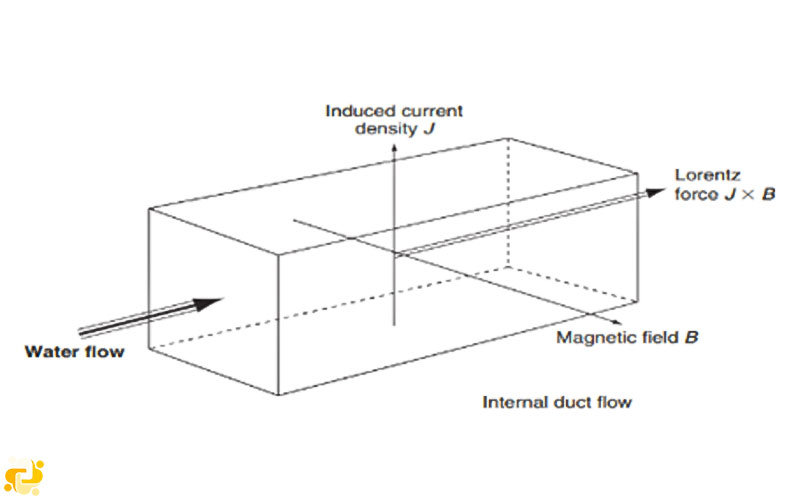
In this case, the electric field can be created internally or externally by placing a system of electrodes on the bottom of the ship. However, this method is relatively inefficient for ship propulsion. Most work has focused on systems using internal magnetic fields, and the principle of this type of system is shown in Figure a, where a channel, through which seawater flows, is surrounded by superconducting magnetic coils immersed in a cryostat. . Inside the tube there are two electrodes that create the electric field necessary to interact with the magnetic field in order to create the Lorentz force necessary for propulsion. This issue is due to the low conductivity of sea water, which is one of the losses on this unit. The efficiency in terms of load speed is proportional to the square of the magnetic flux intensity and the current speed ratio, which is a function of the float speed.
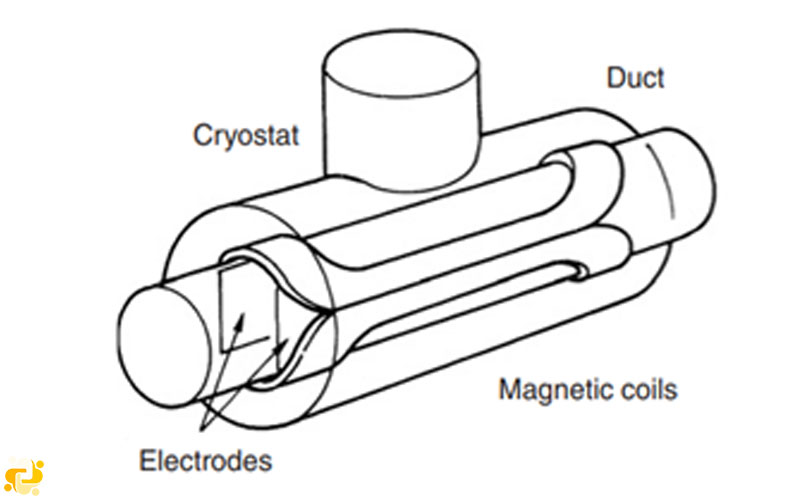
Electromagnetic propulsion has certain potential advantages in terms of providing a basis for noise- and vibration-free hydrodynamic propulsion.
However, a major obstacle to the development of electromagnetic force until the last few years was that the superconducting coil, in order to maintain its zero resistance property, must be kept at the temperature of liquid helium, 4.2 K (-268°). This clearly requires the use of thermally insulated vessels in which the superconducting coil can be placed to maintain these conditions. The criticality of this thermal condition can be seen from the figure below, which shows how the resistance of a superconductor changes with temperature and eventually reaches a critical temperature. Superconductors are also sensitive to current and magnetic fields, which if too high, the superconductor it will be ruined.
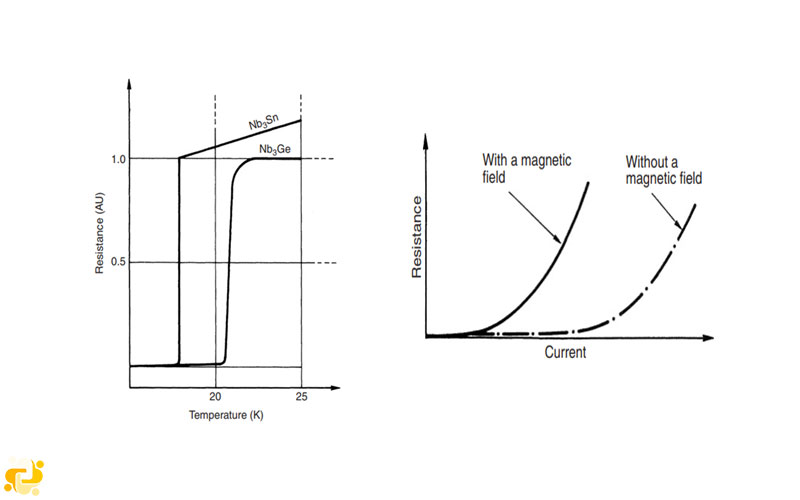
Superconductivity began with the work of Kamerlingh Onnes at Leiden University in 1911, when he discovered the superconductivity of mercury in liquid helium. For this he won the Nobel Prize. Work on superconductivity continued, however, progress was slow in finding metals that would function at the high temperature of liquid nitrogen, -196°C. Until 1973, the best achievable temperature was 23 degrees Kelvin. However, in 1986 Müller and Bednorz in Zurich turned their attention to ceramic oxides, which until now were considered insulators. The result of this change was an immediate increase of the critical temperature to 35 degrees Kelvin using a combination of lanthanum, barium, and copper oxide. This discovery made Muller and Bednors also receive the Nobel Prize for their work. As a result of this discovery, work intensified in the United States of America, China, India and Japan.
While these developments are clearly encouraging because they make it easier to use superconducting coils in terms of thermal insulation, many ceramic oxides are relatively difficult to manufacture. Firstly, the process by which the superconductor is made is very important if we want to get the correct molecular structure, and secondly, ceramics are fragile. Consequently, while this form of propulsion clearly has potential and significant progress has been made in both basic research and application, much work remains to be done before this type of propulsion can be implemented on a commercial or even conceptual scale.
Related Articles
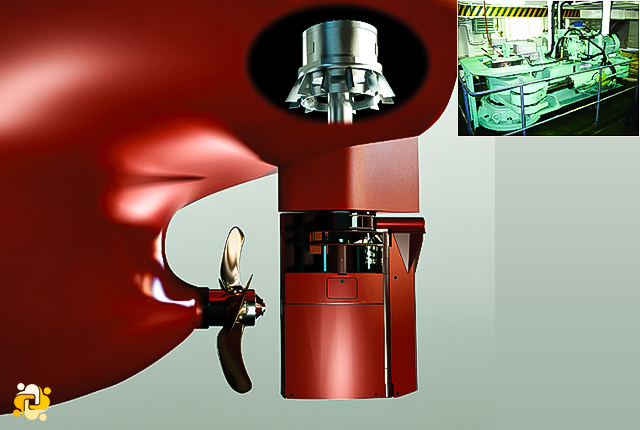
Common Problems in Steering Gear System
Accidents because of steering gear failure are common in the maritime industry. such incidents have led to some serious accidents in the part, causing heavy damage to ship, its crew and the environment. periodic maintenance and checks are extremely important for smooth functioning of ship’s steering gear. however, there are a few common issues which tend to occur in spite of taking all necessary precautions..
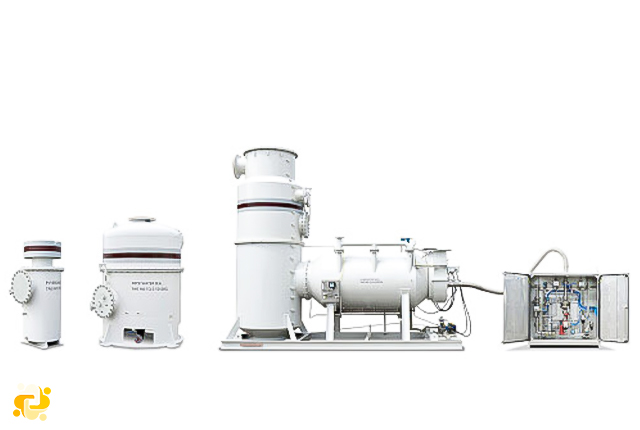
Introduction to Inert Gas Systems (IGS)
Inert gas system is the most important integrated system for oil tankers for safe operation of the ship. inert gas is the gas which contains insufficient oxygen (normally less than 8 %) to suppress combustion of flammable hydrocarbon gases..
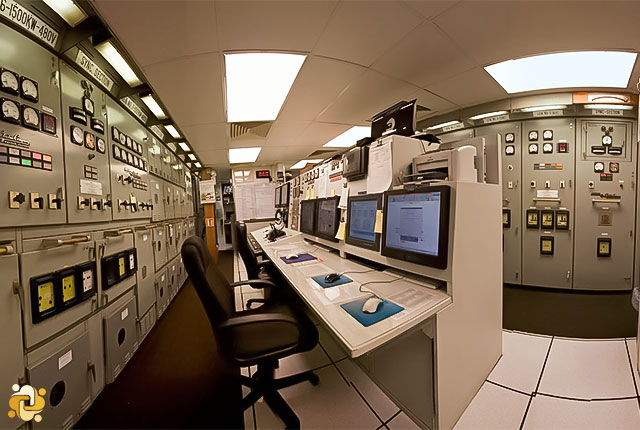
Understanding UMA (UMS) Ships and Their Operational Requirements
Uma (unattended machinery area) ships, sometimes referred to as ums, are designed for machinery and equipment operation without constant watch-keeping personnel. this article outlines the specific machinery included, stringent safety requirements, and the need for meticulous ship design. it emphasizes fire safety measures, prevention of flooding, alarm systems, and communication means, all crucial for ensuring safe and continuous operation..
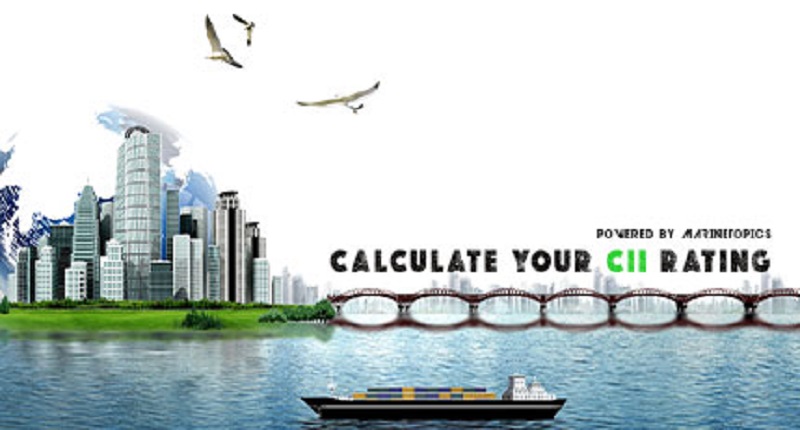
Follow Us on:
+98 21 2842 2755
©2023 All Rights Reserved
How ships float, avoid icebergs, & other questions from our not-so-scientifically-inclined writers.
As a Sailor on one of our cruises, there’s some stuff we don’t want you to worry about. Cooking for yourself, for example. Stressing about work. And we certainly don’t want our Sailors to be preoccupied wondering, “how do cruise ships work?” or “no seriously, how do they stay afloat like that?” Our engineers worry about these things so you don’t have to. But even if you’re not contemplating the Archimedes Principle of positive buoyancy while you’re soaking up rays on the pool deck, you might have always wanted to know how cruise ships stay afloat, or how they avoid obstacles at night. These are interesting questions, even for the non-mechanically inclined.
Since we’re in the cruising business, we find this stuff fascinating, too. That’s why we interviewed Chief Engineer Rhea Wilson and her team to get the inside scoop on everything related to ship mechanics and operations. They break down how cruise engines work, where the water you’re drinking comes from, how cruise ships detect icebergs, how they avoid icebergs, and — yeah, a lot of other iceberg-related questions. If you knew nothing about ship mechanics before, that’s about to change. This one’s for all the nerds out there.
How cruise ships work: An interview with our Chief Engineer
Maybe a stupid question, but how does such a massive boat stay afloat, anyway?
Engineers : Science. Archimedes Principle to be exact, positive buoyancy. Basically the bit of the ship in the water weighs less than the weight of water it replaces (lots of tanks to create buoyancy). Why a tree trunk will float but a brick will sink despite the tree trunk weighing more.
Where is the engine located, and how are cruise ships powered?
Engineers : Cruise ship engines are located near the bottom of the ship as they are heavy, and they are usually towards the aft of the ship. Cruise ships use Diesel-Electric propulsion systems. The main engines are generators which produce electricity which then powers the azipods. VV ships have 4 engines and 2 azipods. There are 3 bow thrusters to provide maneuverability when arriving/departing a port.
Azipods are a motor with a built in propeller and rudder. The electrical power created by the engines drives this big azipod motor which turns the propellers, and pulls the ship forward. Basically think of how a jet engine pushes air across a plane wing — that's how an azipod and propeller pushes water across the rudder and drive/steer the ship. They can turn 360 degrees for maneuverability, and the rpm of the propeller varies depending on the required ship speed.
People tend to imagine engine rooms looking like the one on Titanic, with sweaty laborers shoveling coal into the engine. What does a cruise ship engine room actually look like?
Engineers : Well it can be a hot working environment, there is a lot of heat generating machinery in the engine rooms. However a modern engine room is bright and clean and nothing like Titanic. The engines are a large part of the engine room, but the whole lower part of the ship is the engine rooms and compartments with auxiliary equipment used to supply a whole ship. So fresh water generators, a wastewater treatment plant, stabilizers for minimizing ship movement etc, not only the engines like you see in the movies.
Speaking of Titanic, what technology is in place to keep cruise ships from hitting icebergs?
Engineers : Much better equipment for detecting objects in the water. Be it small craft, other large ships, or icebergs. That and proper binoculars for the lookouts.
Cruise ships are pretty huge. How quickly could it change direction and navigate around an iceberg, if one was detected?
Engineers : As above, the azipods make a large ship really maneuverable for it's size, much more so than a ship with conventional propellers and rudders.
If the ship did hit an iceberg, and started taking on water, what would happen?
Engineers : There are 5 main vertical zones along the ship, and split further into compartments. Every one of these compartments are capable of being fully isolated in case water came in and the ship would still be operational. There are regulations in place for essential services to stay functional in case certain sections were lost to fire or flooding.
Okay, enough about icebergs. We don’t even sail near them. People are more aware now than ever of their carbon footprint. What are cruise ships doing to reduce emissions ?
Engineers : There are stringent rules and regulations on emissions globally and locally to the ports the ships visit. There are advanced gas cleaning systems always in use to comply with these rules.
If someone fell overboard and the ship needed to stop, how long would that take? No one will, but I just have to ask.
Engineers : The requirement for a complete stop from full speed is 15 ship lengths, but the Virgin Voyages ships take less than half that for a stop from full speed.
Where do the ship engineers (and other essential ship operating staff) sleep when they’re not working?
Engineers : The majority of ship engineers/essential staff have accommodations close to the Engine Control Room, so they are close to their workplace. Most engine officers have an alarm fitted in their cabins which is activated from the ECR in case of technical emergency. Usually the deck below the main passenger decks, so with a porthole for daylight :)
Is there a giant 12,000,000,000 lb anchor like you see in movies?
Engineers : Not so much. There are two anchors by the bow, but they're not comically large. An anchor's “weight” to keep a ship in place is in the chain, not the anchor itself.
Where does the drinking water come from on a cruise ship (please tell us it’s not toilet water)?
Engineers : There are large Reverse Osmosis plants which take in heavily filtered sea water, and then after many processes produce fresh water. This fresh water is then treated to public health requirements and standards. So no, it's not from the toilet water. That water never goes anywhere near the potable fresh water.
Sometimes I’ll see the ship captain dining in a restaurant, or wandering around the boat. When he’s gone, who’s keeping the ship away from icebergs?
Engineers : Well there is a whole team for deck and engine departments, and the Captain can't be navigating the whole time. There is a watchkeeping team – consisting of deck officers on the bridge and technical officers in the ECR – 24/7 keeping the ship away from icebergs and the lights on while the Captain is out having dinner.
Wow, we certainly learned a lot about cruise ships!
Take that curiosity a step further and check out our Ships page to see more about our lady ships.
Related Articles
Come aboard our adults-only cruises for a kids-free getaway at sea., we’re all about the best “ships,” from friendship to partnerships, to cruise ships and beyond., cruises vs. all inclusive resorts: why one is the clear victor….
Winter is here! Check out the winter wonderlands at these 5 amazing winter destinations in Montana
- Plan Your Trip
How Big Is A Cruise Ship Propeller
Published: December 16, 2023
Modified: December 28, 2023
by Fianna Donofrio
- Sustainability
Introduction
Welcome aboard the world of cruising, where colossal ships traverse vast oceans, carrying thousands of passengers to their dream destinations. These magnificent vessels are not only equipped with luxurious amenities and state-of-the-art facilities but also with massive propellers that propel them through the water with remarkable power and efficiency.
Intrigued by the engineering marvel that is a cruise ship propeller? Look no further, as we delve into the world of these hefty metal blades that play a pivotal role in the navigation and propulsion of a cruise ship.
Cruise ship propellers, often referred to as marine propellers, are bar-like structures connected to the ship’s propulsion system. These propellers are responsible for generating the necessary thrust and pushing the ship forward, overcoming the resistance of the water. As a vital component of a cruise ship’s machinery, propellers contribute significantly to the vessel’s speed, maneuverability, and overall performance.
Understanding the size and mechanics of cruise ship propellers can provide valuable insights into the impressive capabilities of these maritime giants.
So, what exactly determines the size of a cruise ship propeller? Let’s explore the factors that influence their dimensions, the different types of propellers found on cruise ships, and the manufacturing process behind these colossal metal blades.
But first, let’s take a moment to appreciate the intricate mechanics and functionality of these immense propellers before delving further into their size and construction.
Understanding Cruise Ship Propellers
Cruise ship propellers are not your average run-of-the-mill boat propellers. They are specifically designed to meet the unique requirements of these mammoth vessels. The size, shape, and construction of cruise ship propellers are carefully optimized to ensure maximum efficiency and performance.
One of the key aspects to understand about cruise ship propellers is the concept of pitch. Pitch refers to the angle at which the propeller blades are set. It determines the distance the propeller moves forward with each rotation. Cruise ship propellers typically have a fixed pitch, meaning that the angle of the blades remains constant. This design helps maintain stability and efficiency, as the ship’s engine can operate at a consistent speed.
Another important factor is the number of blades. Cruise ship propellers usually have four to six blades, although some larger vessels may have more. The number of blades directly affects the propeller’s efficiency, stability, and noise level. More blades generally result in improved efficiency and reduced noise, but at the expense of increased weight and complexity.
Furthermore, cruise ship propellers are carefully designed to minimize cavitation. Cavitation occurs when the pressure around the propeller drops significantly, causing bubbles to form and collapse. This phenomenon can lead to erosion and damage to the propeller blades. To counteract cavitation, the surface of the propeller blades is often coated with a special material that helps reduce bubble formation and prevent erosion.
It’s also important to mention the material used in constructing cruise ship propellers. Most propellers are made of high-strength stainless steel alloys that are resistant to corrosion and wear. These alloys provide the necessary strength to withstand the immense forces exerted on the propeller during operation.
Overall, cruise ship propellers are engineered with precision and attention to detail, taking into account factors such as pitch, blade number, cavitation, and material composition. The goal is to create a propeller that balances efficiency, durability, and performance to ensure smooth and reliable navigation of these colossal vessels.
Factors Affecting Propeller Size
The size of a cruise ship propeller is influenced by a variety of factors, all of which are carefully considered during the design and construction process. These factors ensure that the propeller is properly sized to provide the necessary thrust and maneuverability for the specific vessel.
The first factor to consider is the ship’s power and speed requirements. The propeller must be able to generate enough thrust to propel the ship through the water at the desired speed. Larger ships with higher power requirements will typically have larger propellers to generate the necessary thrust.
The ship’s hull design is another significant factor in determining propeller size. The propeller must be optimized to work together with the hull to achieve maximum efficiency. The shape and size of the hull can affect factors such as drag and flow patterns, which in turn influence the size and design of the propeller.
Water conditions and operating environment also play a crucial role in propeller size selection. Cruise ships operate in a variety of conditions, including calm seas, rough seas, and varying water depths. The propeller must be sized to ensure optimal performance in these different environments. Additionally, the propeller should be designed to minimize noise and vibration, providing a comfortable and enjoyable experience for passengers.
Efficiency is another significant consideration when determining propeller size. The propeller must be designed to deliver the required thrust while minimizing fuel consumption. By optimizing the size, shape, and blade angles, propeller manufacturers strive to achieve the best balance between power output and fuel efficiency.
Lastly, space constraints within the ship’s machinery room also influence propeller size. The propeller must fit within the designated space, allowing for proper installation, maintenance, and access to other equipment. This consideration becomes increasingly important as ships grow in size and complexity.
Overall, a combination of factors including power requirements, hull design, operating conditions, efficiency, and space constraints all have an impact on determining the size of a cruise ship propeller. By carefully considering these factors, manufacturers strive to create propellers that meet the specific needs of each vessel, ensuring optimal performance, maneuverability, and fuel efficiency.
Types of Cruise Ship Propellers
Cruise ship propellers come in different types, each designed to meet specific requirements and operating conditions. These propeller types vary in their design, configuration, and performance characteristics. Let’s take a closer look at some of the common types of propellers found on cruise ships.
- Fixed-Pitch Propellers: Fixed-pitch propellers have a constant blade angle and are the most common type found on cruise ships. They offer simplicity and reliability, making them well-suited for a wide range of operating conditions. Fixed-pitch propellers are typically made of high-strength stainless steel and can have various numbers of blades.
- Controllable-Pitch Propellers (CPP): Controllable-pitch propellers allow for the adjustment of blade angle during operation. This flexibility allows cruise ships to optimize performance at different speeds and operating conditions. CPP technology offers better maneuverability, fuel efficiency, and vibration reduction compared to fixed-pitch propellers.
- Podded Propulsion Systems: Podded propulsion systems are a relatively new and innovative technology employed in some modern cruise ships. These systems consist of azimuthing pods that house both the propellers and electric motors, providing direct propulsion without the need for traditional shafts and rudders. Podded propulsion systems offer exceptional maneuverability, improved fuel efficiency, and reduced vibration and noise levels.
- Ducted Propellers: Ducted propellers, also known as Kort nozzles, feature a cylindrical nozzle surrounding the propeller. This design enhances propeller efficiency by guiding and accelerating the water flow, resulting in increased thrust. Ducted propellers are commonly used in situations where maneuverability and efficiency are important, such as in ice-filled waters or areas with strong currents.
These are just a few examples of the different types of cruise ship propellers available. Each type has its own advantages and is selected based on the specific needs and requirements of the ship. The choice of propeller type can greatly impact a cruise ship’s performance, efficiency, and maneuverability, making it an important factor in vessel design and operation.
The Mechanics of a Cruise Ship Propeller
Cruise ship propellers are marvels of engineering, designed to harness the power of the ship’s engines and convert it into forward thrust. Understanding the mechanics behind these impressive machines can provide valuable insights into their functioning.
The basic principle behind a cruise ship propeller is Newton’s third law of motion: for every action, there is an equal and opposite reaction. As the propeller blades rotate, they push against the water, creating a force that propels the ship forward.
Propellers consist of multiple curved blades, shaped like airfoil profiles, attached to a central hub. The shape and angle of these blades are carefully designed to maximize efficiency and minimize drag. When the ship’s engines rotate the propeller shaft, the blades slice through the water, creating a pressure difference on either side of the blade. This pressure difference, known as lift, generates the thrust required to move the ship forward.
As the propeller starts rotating, water is drawn in towards the blades due to the pressure difference created by the blade’s curvature. The water flows over the blades, accelerating as it moves from the leading edge to the trailing edge. This acceleration increases the pressure on the concave side of the blade and decreases it on the convex side, effectively creating lift.
The efficiency and performance of a cruise ship propeller are influenced by several factors. Blade pitch, which refers to the angle of the blades, determines the amount of lift generated and the forward speed of the ship. The number of blades can also affect propeller efficiency, with more blades typically leading to increased thrust and reduced vibration.
Cavitation, a phenomenon mentioned earlier, can also impact propeller performance. When the pressure around the blades drops too low, bubbles can form and collapse, causing erosion and decreasing thrust. Propeller design and operating conditions are carefully calibrated to prevent or minimize cavitation.
In addition to providing forward thrust, cruise ship propellers also contribute to the ship’s maneuverability. By adjusting the pitch of the blades or changing their rotation direction, the ship’s captain can control the ship’s turning radius and maneuver in tight spaces.
The mechanics of cruise ship propellers are a fascinating blend of physics, hydrodynamics, and engineering. Through precision design and careful calibration, these propellers efficiently convert engine power into forward motion, allowing cruise ships to glide through the water with grace and power.
Propeller Manufacturing Process
The manufacturing of cruise ship propellers is a complex and precise process that involves several stages of design, manufacturing, and quality control. Here is an overview of the typical propeller manufacturing process:
- Design and Engineering: The first step in the manufacturing process is the design and engineering phase. Propeller designers utilize advanced computer-aided design (CAD) software to create the propeller’s shape, size, and blade configuration. Factors such as ship speed requirements, power output, and hydrodynamic efficiency are taken into consideration during this phase.
- Casting: Once the design is finalized, the propeller is cast using a specialized foundry process. High-strength stainless steel alloy or other suitable materials are melted and poured into a mold that is shaped based on the propeller’s design. After the molten metal cools and solidifies, the mold is removed, leaving behind a rough cast propeller.
- Machining and Finishing: The rough cast propeller undergoes extensive machining and finishing processes to refine its shape and surface. Highly skilled technicians use computer numerical control (CNC) machines to precisely shape the blade profiles and achieve the desired dimensions and tolerances. The propeller is also meticulously polished to minimize surface imperfections.
- Balancing: Balancing is a critical step to ensure the propeller operates smoothly and without excessive vibration. The propeller is carefully balanced by adding or removing weight from specific locations on the blades or hub. This process helps eliminate any imbalances that could lead to operational issues or damage to the ship’s machinery.
- Quality Control: Once the propeller is machined, finished, and balanced, it undergoes rigorous quality control checks. Specialists inspect the propeller for any defects, dimensional accuracy, and adherence to design specifications. Non-destructive testing techniques, such as X-ray or ultrasonic inspection, may be used to detect hidden flaws or cracks.
- Installation and Testing: After passing quality control, the propeller is ready for installation on the ship. Highly skilled technicians carefully mount the propeller onto the propeller shaft and ensure its proper alignment. Before the ship sets sail, the propeller undergoes sea trials and testing to verify its performance, efficiency, and balance under real-world conditions.
The propeller manufacturing process requires a combination of advanced technology, skilled craftsmanship, and meticulous attention to detail. By following these carefully defined steps, manufacturers can produce high-quality cruise ship propellers that meet stringent performance standards and provide reliable propulsion for these majestic vessels.
The Size Range of Cruise Ship Propellers
Cruise ship propellers come in a wide range of sizes, varying depending on the vessel’s size, power requirements, and operating conditions. The size of a propeller is determined by factors such as ship displacement, desired speed, and the specific design criteria. Let’s explore the typical size range of cruise ship propellers:
For smaller cruise ships, such as those accommodating a few hundred passengers, propellers can range in diameter from around 3 to 6 meters (10 to 20 feet). These ships typically have lower power requirements and operate at lower speeds, allowing for more compact propellers.
As we move to larger ships, such as those carrying thousands of passengers, the size of the propellers grows significantly. These ships may have propeller diameters ranging from 6 to 9 meters (20 to 30 feet) or even larger. With higher power requirements and the need to move larger masses through the water, larger propellers are necessary to generate the required thrust.
Propeller diameter is not the sole determinant of propeller size. The number of blades, blade shape, and propeller pitch also play a significant role in sizing. A higher propeller diameter, combined with an appropriate blade design, allows for more efficient thrust generation and reduces the risk of cavitation.
It is worth noting that the size of cruise ship propellers can vary significantly based on the purpose of the vessel. Different types of cruise ships, such as those designed for expedition cruises or icebreaking, may have unique propeller requirements. Expeditions ships, for example, often require propellers capable of operating in shallow waters and navigating through challenging environments, while icebreaking ships may require propellers with specialized designs to break through ice.
Ultimately, the size of a cruise ship’s propellers is carefully chosen to ensure optimal performance, maneuverability, and fuel efficiency. Extensive engineering analysis and simulation are conducted to select the most suitable propeller size for a specific vessel, taking into account various factors such as ship size, power requirements, operating conditions, and desired performance parameters.
With advances in design, materials, and manufacturing techniques, cruise ship propellers continue to become more efficient and powerful, contributing to the smooth navigation and comfort of these magnificent vessels.
The Largest Cruise Ship Propellers in the World
Cruise ships are constantly pushing the boundaries of size and scale, and this includes their propellers. The largest cruise ship propellers in the world can be found on some of the most massive and powerful vessels currently sailing the oceans. Let’s take a look at these extraordinary propellers:
Royal Caribbean’s Oasis-class ships, known for their colossal size, feature some of the largest propellers in the industry. Each ship in this class is equipped with two fixed-pitch propellers that measure approximately 7.6 meters (25 feet) in diameter. These massive propellers are designed to provide the required thrust to move these immense vessels through the water at speeds of up to 22 knots.
Not to be outdone, MSC Cruises’ Meraviglia and Seaview classes also boast gigantic propellers. These ships are equipped with two fixed-pitch propellers that measure approximately 7.7 meters (25.3 feet) in diameter. These impressive propellers contribute to the powerful propulsion system that allows these vessels to smoothly navigate the seas.
Additionally, Carnival Cruise Line’s Vista-class ships showcase massive propellers. These vessels feature two fixed-pitch propellers with a diameter of approximately 7.3 meters (24 feet). These robust propellers help propel these large ships and allow them to reach their desired speeds.
The largest cruise ship propellers are selected based on a combination of factors, including the ship’s size, power requirements, and desired performance characteristics. These massive propellers are carefully engineered to provide the necessary thrust to move these colossal vessels through the water, ensuring smooth and efficient navigation.
It’s important to note that the size of a propeller is not the sole indicator of performance. Proper blade design, pitch optimization, and material selection also play crucial roles in achieving optimal propeller efficiency and overall vessel performance.
As cruise ship technology continues to evolve, we can expect even larger and more advanced propellers to be developed. These propellers will further enhance the speed, maneuverability, and fuel efficiency of these magnificent floating cities.
The world of cruise ship propellers is a fascinating one, where engineering prowess meets the challenge of propelling massive vessels through the vast oceans. From the understanding of their mechanics to the factors influencing their size, we have explored various aspects of these impressive maritime components.
Cruise ship propellers are carefully designed and manufactured to meet the specific needs of each vessel. Factors such as power requirements, hull design, water conditions, and efficiency considerations all influence the size and type of propellers chosen.
With their immense size and power, cruise ship propellers play a crucial role in the navigation, maneuverability, and overall performance of these magnificent vessels. Whether it’s the reliable fixed-pitch propellers or the innovative podded propulsion systems, each type of propeller is meticulously designed and engineered to provide optimal thrust, efficiency, and comfort for passengers.
The manufacturing process of cruise ship propellers involves a combination of advanced technology, craftsmanship, and quality control measures. From design and casting to machining and balancing, manufacturers ensure that each propeller meets strict standards of performance and durability.
With the continuous advancement of technology, we can expect to see even larger and more efficient propellers in the future. These propellers will continue to contribute to the smooth sailing and unforgettable experiences on board the world’s largest cruise ships.
As we conclude our exploration of cruise ship propellers, we can appreciate the intricate engineering and design that goes into these remarkable components. Their size, mechanics, and manufacturing process create a synergy that enables these giants of the sea to navigate the oceans with grace, power, and efficiency.

- Privacy Overview
- Strictly Necessary Cookies
This website uses cookies so that we can provide you with the best user experience possible. Cookie information is stored in your browser and performs functions such as recognising you when you return to our website and helping our team to understand which sections of the website you find most interesting and useful.
Strictly Necessary Cookie should be enabled at all times so that we can save your preferences for cookie settings.
If you disable this cookie, we will not be able to save your preferences. This means that every time you visit this website you will need to enable or disable cookies again.

Cruise Ship Propeller Size – How Big Are They?
Without a power source and propellers, cruise ships would drift aimlessly at sea. These mega-ships require engines, fuel, and massive propellers just to move through the water and keep all activities on board the ship running. We describe not only the cruise ship propeller size, but also how it integrates with the rest of the engine.
Older cruise ships use diesel engines for propulsion. The power generated from the engine goes through a transmission and into the propeller shafts.
The transmission determines propeller revolution like the transmission in an engine transfers RPM to a manageable speed to power the rear wheels in a car.
Meanwhile, modern cruise ships use diesel-electric engines or gas turbines to propel the ship through water. The ship’s systems are also used to guide and move the ship through the ocean.
The larger the ship, the higher the demand for electrical power. There are cruise ships that rely on two different sources of power. One is dedicated to electrical power, while the other is for propulsion.
In This Article…
Cruise ship propeller size.
Propellers can be up to 20 feet in height. Often referred to as ABB Azipods XO , modern cruise ships tend to have three of them to properly maneuver the ship and propel it forward in water. They are efficient on fuel compared to a traditional system.
As mentioned, they allow for improved maneuverability, allow the ship to maximize speed, reduce bad emissions, and optimize the overall performance of the cruise ship.
An ABB Azipod system has a large impact on the operating efficiency of a cruise ship. It effectively reduces bad emissions and energy consumption by 20%. This propulsion system resides in the ship’s aft outside of the hull. They can rotate by 360° using a rudder, which provides thrust in any direction. This is not possible with a conventional system.
This type of propeller contains three main components:
- Frequency Controller – This is designed to change the supplied power’s frequency, so the rotating motor speed is more easily controlled.
- Supply Transformer – The power, which is produced by a generator, is 6,600 KV. This is stepped down to the required voltage used by a supply transformer. Then, it is transferred to the motor located in the pod.
- Propulsion Motor – Designed to drive or produce thrust, its rotation is generated using an electric motor.
How Do Propellers Work?
Propellers are required to push a cruise ship through water. Commonly referred to as “screws,” they slice through the water. They also provide a reverse and forward motion. Cruise ship propellers do not need to turn quickly since they rely on brute power or torque instead of high speeds or RPM. This is what causes a ship to move slowly, as these vessels rarely reach 30 knots.

Cruise ships that are newer and more cutting edge may use azimuth thrusters. These are pods housing propellers, which rotate 360° and provide optimal maneuverability. They were designed to replace rudders and are touted as more beneficial compared to screw-type propeller systems. Benefits include improved fuel efficiency and shorter stopping distance.
These types of propellers allow cruise ships to turn quickly in water when necessary to avoid collisions, which is why more vessels are being equipped with this technology.
How Do Azipods Work Compared to Traditional Propulsion Systems?
The term “Azipod” combines the words “azimuthing” and “pod.” The phrase “Azipod” is a registered trademark of ABB Oy. They work by having the propeller located on the front of its pod. This allows the cruise ship to be pulled through the water rather than being pushed as in a traditional shaft and propeller system.
With a traditional system, its propeller is rotating in water that has been disturbed by the moving of the propeller shaft, brackets, and framing. With the pod system where the propeller is found in the front of its pod, it is turning in water that has been undisturbed. This allows the pod to be 5%-6% more efficient due to improved water flow.

Traditional systems are noisier when maneuvering due to the cavitations of its propellers. This doesn’t occur with pods since they are tractor pods. Tractor pods comparatively pull a ship through surrounding water. Clean, smooth water moves into the blades, thereby decreasing noise.
Pod systems free up additional space in the hull. Traditional systems meant the motors and propeller shafts had to be placed in the hull. Modern cruise ships not containing pods require stern thrusters to maneuver the cruise ship while undocking and docking.
On the other hand, pod systems use the equivalent of a drive motor and propeller shaft, which are found in the pod as opposed to the hull. There is also no need to use stern thrusters.
Many cruise ships contain two pods. Allure of the Seas and Oasis of the Seas contain three pods. Several may be designed using a combination of azimuthing pods and pods which don’t rotate (fixipods) for forward/backward motion.
What Is Propeller Cavitation?
This is the formation and dissolving of vapor bubbles (vapor filled voids) found in liquid mediums. Since the propeller rotates through water at an angle, a suction and pressure side exist on each of the propeller blades. The faster a blade slices through water, the lower the pressure becomes with the suction side.
At a certain speed, the pressure found on the suction side will become so decreased that water running over it will evaporate. When this occurs, voids or vapor bubbles form. It occurs at a normal air pressure (1013.24 hPa) with the water evaporating at 100°C. At higher pressures, evaporation temperature also increases. The opposite happens at lower pressures.

When local pressure goes down below vapor pressure, the water will evaporate. Then, a cavitation bubble forms, becomes bigger, and is transported by flowing to an area with higher pressure. The bubble then ceases to grow any further. When local pressure exceeds vapor pressure, the vapor will condense, beginning from the bubble’s wall.
Eventually, the surface breaks down, beginning with the weakest location, thereby causing the bubble to implode. While it is imploding, water fills the space where the void is, causing a pressure surge. This creates pressure waves along with high-pressure peaks.
Should the vapor bubbles be close to or directly on a solid wall surface like the blade of a propeller, the implosion generates a liquid microjet exerting high stress on the surface. This sudden energy release creates pressure loads found on the surface, generating crate-shaped erosion of material in a propeller blade.
The bubble layer pack on a surface of a blade will also make them thicker, thereby increasing resistance moving through water. This impacts the propeller’s performance. Cavitation also generates vibrations and popping noises. This, in turn, affects guests and ships.
What Causes Cavitation?
The primary cause of cavitation is an unevenness in the blade’s leading edge, too much sharpness of the edge, increased curvature of the propeller blade, or poor finishing of the surface of the blade.
Effects of Cavitation on a Cruise Ship’s Propellers
The effects on the propellers are:
- Eroding of the blades
- Decreased performance
As cavities collapse, they generate noise and high-frequency vibrations. This can be unpleasant to crew and passengers if they are located at the aft of a cruise ship.
Vibration is generated from the unsteady characteristics of cavitation. It is the periodic deflections of the propeller in a horizontal, vertical, or torsional manner.
Vibrations are further reduced by using Schneekluth or Mewis ducts. These are fitted on the hull of the ship, or before the propeller. This provides a uniform wake flow into the propeller thus reducing vibrations.
This can be a serious effect. Cavitation bubbles once formed are unable to persist if they move into an area where net pressure goes back to a value which exceeds the water’s vapor pressure. It can happen toward the blade’s trailing edge or as it moves from top to bottom of its circle, thereby gaining hydrostatic pressure.

The way they collapse creates a new phenomenon. Bubbles will then contract to minute sizes prior to disappearing. This causes the entire energy to collapse, causing a change of state to be concentrated into a tiny location.
At the beginning, the damage looks like it has been hit with a tiny hammer, leaving small, circular indentations. If the damage is prolonged, the result is serious pitting in the metal. This looks like a definite crater on the blade’s surface. Continual pitting can erode the entire thickness of the propeller blade, creating a hole.
Performance
When it comes to performance, the impact can be considerable. Cavitation begins at the tips of the blades and gradually consumes the remainder of the blade as propeller loading increases. As cavitation extends to .75 of the radius, there is significant loss in the thrust plus a reduction in torque. There will be a significant increase in revolutions with a given power.
Thrust breakdown will begin quicker than a change in the torque. This can result in a loss of efficiency.
How Is Cavitation Prevented?
The hull of a cruise ship influences the flow going around the propellers since they fully work in a cruise ship’s wake. To avoid this, the follow measures are undertaken:
- Reducing revolutions per minute. Since the thrust varies, reducing revolutions decreases cavitation. However, the downside is a loss of speed.
- Generate a maximum immersion.
- Reduce the blade’s thickness. This is done by utilizing stronger materials, which are resistant to cavitation.
- Avoid suction peaks close to the leading edge. This is done by utilizing a suitable amount of camber and a good shape for the entrance.
- Design the stern so that it achieves a uniform wakefield.
- Avoid high sections on the blade’s backside. This is achieved by using section shapes providing a uniform pressure distribution.
- Pitch can be varied over the blade’s length. This diminishes loading in important areas.
- Decrease angles of incidence and blade angles by creating a slightly bigger diameter.
- Make the total blade area larger. This is done by increasing the propeller’s diameter with a reduction of revolutions or your blade area ratio with a constant diameter.
Which Cruise Ships Have the Largest Propellers?
Royal caribbean’s oasis class.
These cruise ships tend to be the largest in the world. Their propellers are designed to have a diameter of six meters. The ship’s propulsion contains three 26,800-horsepower Azipods, which is an electric azimuth thruster.

How Fast do Propellers Spin?
Since a cruise ship’s engines turn their crankshaft at extremely high rates of speed – hundreds or thousands of revolutions per minute – the engine connects to the ship’s propellers using gears. The propellers themselves are created to turn slower , which tends to be around 250 revolutions per minute or less.
Carnival Cruise Line Fantasy Class
This cruise line’s service speed is 22.3 knots. It was the first to use a unique electric azimuth Azipod system for propulsion. This means that the ship is pulled as opposed to pushed by its propeller. The Carnival Elation contains two 14 MW Azipod units.

When it comes to a cruise ship propeller size, they can be as large as 20 feet high. This is no surprise when you consider the size of the engines and everything that is necessary to move a ship. Thanks to the introduction of Azipods, cruise ships are better able to navigate around any obstacles they may encounter in the water.
Read Also: How Big is a Cruise Ship?
Not only are they better equipped to move around potential hazards, but this improvement in technology also allows them to better move into ports, work more efficiently, and save on fuel costs. With constant pressures to become more environmentally friendly, this may be a good thing for cruise lines.
While they aren’t great for the environment, they aren’t emitting as much pollution as fuel is being conserved. It also makes this natural resource stretch for a longer duration. Ideally, LNG-powered cruise ships can be used to prevent harmful emissions. This is the best method to protect the environment.
However, with the drawbacks of using this fuel type, changing the propulsion technology may be the next-best thing.
Related Posts
Leave a reply cancel reply.
Your email address will not be published. Required fields are marked *

How Many Propellers Does a Cruise Ship Have: You Won’t Believe?
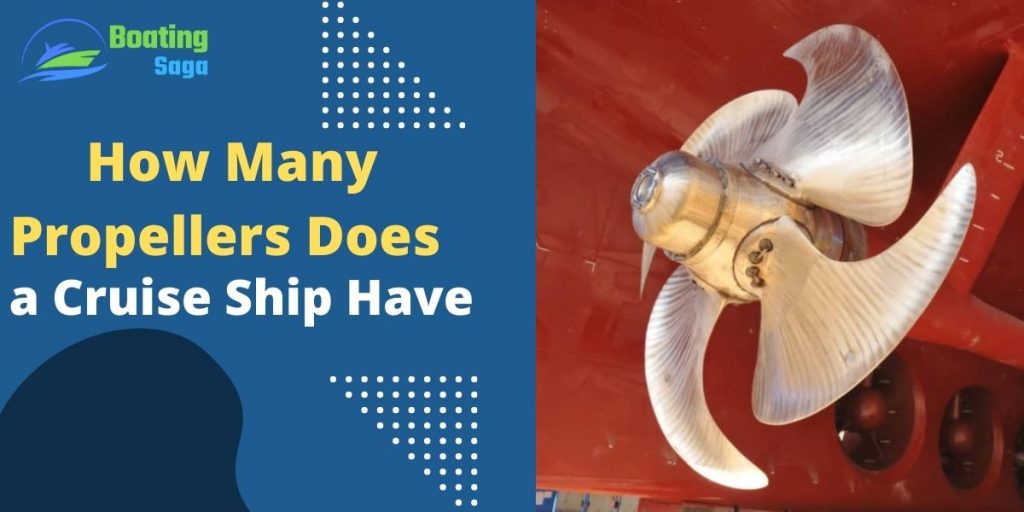
When it comes to cruising, the size of the vessel is an important consideration. Just like with air travel, the larger the plane or cruise ship, the more passenger cabins and amenities it will have.
How Many Propellers does a Cruise Ship Have
A cruise ship typically has four propellers. Propellers are placed at the back of the ship and work to move it through the water. The more propellers a cruise ship has, the more power it has to move and steer. In addition, multiple propellers create a more stable ride for passengers.
The size and number of propellers on a cruise ship can vary depending on the model and make. Some newer ships have six propellers – two on either side of the ship near the front and back.
Propulsion systems also include jet engines which help create a cushion of air under the hull, providing lift and reducing drag.
How big is a cruise ship propeller in diameter?
The diameter of a cruise ship propeller can be anywhere from 9 to 23 feet (7 meters). The size of the propeller is important because it dictates how much power the engine can produce. Larger propellers require more power, but they also create more drag on the ship. For this reason, cruise ships usually have several different-sized propellers so they can choose the best option for each situation.
What are Cruise Ship Propellers Made of?
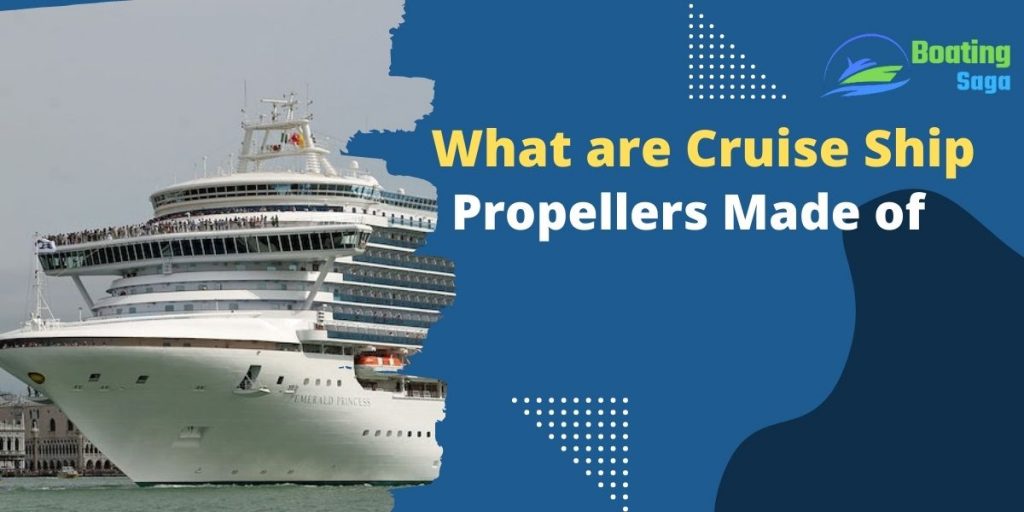
Most cruise ship propellers are made of bronze. However, some larger and more expensive ships have propellers made of stainless steel or titanium. Bronze propellers are typically cast in a mold and have a very smooth finish.
This finish helps to reduce drag and increase efficiency. Stainless steel and titanium propellers are machined from a solid piece of metal, which makes them stronger and less likely to corrode.
Why Do Cruise Ships Need So Many Propellers and what are the dangers of it?
When it comes to cruising, the engines and propellers are what make the ship move. Each cruise ship has at least three large propellers that help it push through the water. But why do these ships need so many propellers?
The more propellers a ship has, the more thrust it can create. This is important because it allows the ship to move faster and navigate through rougher waters. Additionally, having more than one propeller helps to create stability for the ship. If one propeller were to fail, the other two would still be able to keep the ship moving.
One issue with multiple propellers is that they can create turbulence in the water around the ship. This can cause the ship to rock back and forth and make it difficult for passengers to walk around on deck. It can also cause problems for the crew, who have to work in close proximity to the moving propellers.
Another concern is that multiple propellers can create a lot of noise. This can be especially problematic near ports where people are trying to sleep or relax.
How do you know if your cruise ship has four or five propellers?
There is not one definitive answer to this question. However, there are some things that you can look for to help you determine if your cruise ship has four or five propellers. One indicator is the number of blades on the prop. Most ships with four propellers have three blades, while those with five propellers often have four blades.
Another way to tell is by the sound the ship makes. Four-propeller ships make a distinct “thumping” noise, while five-propeller ships make a more subtle “whirring” sound.
Additionally,One way to tell is to look at the ship’s stern. If you see two larger propellers in the middle with two smaller ones on either side, then it has four propellers. If you see three larger props in the middle with two smaller ones on either side, then it has five props.
How much power do cruise ship propellers generate?
When it comes to cruise ships, the propellers are one of the most important components. They are responsible for generating the power that moves the ship through the water. Most cruise ships have three or four propellers, which are each about 20 feet in diameter.
The amount of power that these propellers generate can vary depending on a number of factors, including the type of ship, the speed at which it is traveling and the weight and size of the passengers and crew.
Generally speaking, a cruise ship with four propellers can generate between 80,000 and 190,000 horsepower. This is enough power to move a ship that weighs more than 100,000 tons and travel at speeds up to 25 knots.
How fast do cruise ship propellers spin?
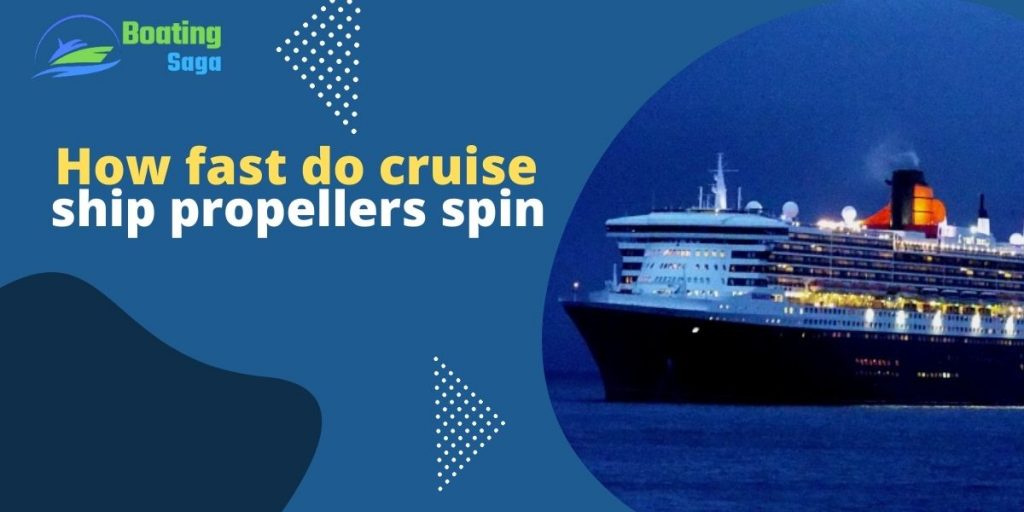
Cruise ship propellers are one of the largest and most important pieces of machinery on a vessel. They play a major role in the overall speed and performance of the ship. How fast do they spin?
Most cruise ship propellers spin at around 200-300 revolutions per minute (RPM). However, larger propellers can reach speeds of up to 1000 RPM. This is important to keep in mind when considering how fast a cruise ship can travel.
The faster the propeller spins, the more thrust it produces. This means that the ship can travel faster and smoother through the water. It also helps create more lift, which is necessary for taking off and landing.
For this reason, cruise ships typically operate at speeds between 20 and 25 knots (about 23-29 mph).

What Happens if the Propeller System Fails on a Cruise Ship?
A propeller system is an important component of a cruise ship. It helps the ship move through the water and provides power for the vessel. If this system fails, the cruise ship can be stranded and unable to move.
This could lead to a number of problems for the passengers and crew on board. The ship may not be able to reach its final destination, or it may have to be towed back to shore. There could also be safety concerns if the ship is unable to move quickly in an emergency situation.
Passengers could find themselves in dangerous situations if the ship is stuck in a storm or if there is a fire on board. It is important for cruise ships to have backup systems in place in case of a propeller failure.
How do cruise ships avoid hitting things with all those propellers?
Every cruise ship has at least one propeller to help it move through the water. Propellers are huge and can cause a lot of damage if they hit something. So how do cruise ships avoid hitting things with all those propellers?
One way is to use a special type of sonar called a prop scanner. This scanner helps the captain know where the ship’s propellers are in relation to other objects in the water. If there is danger of hitting something, the captain can slow down or change course.
Another way cruise ships avoid hitting things is by having a crew that scans the water ahead for obstacles. They keep watch for things like rocks, buoys, and other boats. If they see something that could be dangerous, they will report it to the captain.
Cruise ship propeller myths busted

Cruise ship propellers are a vital part of the ship and its operation. However, there are many myths and misconceptions about these devices. In this article, we will bust some of the most common myths about cruise ship props.
Myth 1: Cruise ship propellers can suck people overboard.
This is one of the most common myths about cruise ship propellers. People often think that the blades on these devices can suck people overboard and into the water. However, this is not true. The blades on a cruise ship propeller are not sharp enough to cause injury to a person. In fact, they are actually quite blunt.
Myth 2: Cruise ship propellers can create giant waves.
Another popular myth about cruise ship propellers is that they can create giant waves that can swamp and damage boats nearby. This is also not true.
Myth 3: You can’t swim near a cruise ship propeller because it will pull you under.
This is another myth that is just not true.
Myth 4: Cruise ship propellers can chop you up into little pieces.
Again, this is not true. Cruise ship propellers are very powerful but they are also very smooth. They would never be able to chop someone up into little pieces.
Myth 4: Cruise ship propellers can only move the ship in one direction.
Fact: Cruise ship propellers can actually rotate 360 degrees, allowing the ship to move in any direction.
Myth 5: Cruise ship propellers can only be used in calm weather conditions.
Fact: Cruise ship propellers can be used in any type of weather condition, including high winds and rough seas.
Myth 6: Cruise ship propellers can easily capsize a boat.
FACT: Cruise ship propellers are incredibly powerful, but they are also designed to be extremely stable.
Myth 7: Cruise ship propellers can cause cavitation.
This is not true. Cavitation is a phenomenon that occurs when a fluid (liquid or gas) flows over a surface and the pressure of the fluid drops below the vapor pressure of the fluid. This causes tiny bubbles to form in the fluid.
When these bubbles collapse, they create a shock wave that can damage the surface of the object that they are flowing over. Cruise ship propellers do not cause cavitation because the pressure of the water never drops below the vapor pressure of water.
Why do ships’ propellers look frightening underwater?

When looking at the underside of a ship, its propellers can look quite frightening. This is because the blades appear to be spinning very quickly and the tips can sometimes seem sharp. However, there is no need to be afraid of them – they are actually very safe.
The propellers are located beneath the waterline so they can push the ship forwards through the water. The blades rotate incredibly fast in order to create enough force to move the vessel. This means that they can sometimes be seen spinning rapidly from above the surface.
Despite their appearance, propellers are not dangerous and are perfectly safe to be around. In fact, they play an important role in helping ships to move safely through the water.
Some Interesting fun facts about Cruise Ship propellers
1. Cruise Ship propellers are massive and can be seen churning the water as the ship moves through the sea.
2. Propellers are essential to cruise ships – they provide the power needed to move the mammoth vessels through the water.
3. Each cruise ship propeller is made up of three blades, which can measure up to 50 feet in length.
4. The blades on a cruise ship propeller are designed to move a lot of water and create a lot of thrust.
5. In order to ensure that passengers have a smooth ride, cruise ship propellers are carefully balanced before they are installed on the ship.
6. Cruise ship propellers can spin at speeds of up to 350 revolutions per minute.
7. In order to prevent the propellers from hitting rocks or other objects in the water, captains will often steer their ships in a zigzag pattern.
Cruise ship propellers help the ship move forward, backward, and side to side. They are an important part of the ship and help it navigate through the water.
Related Posts
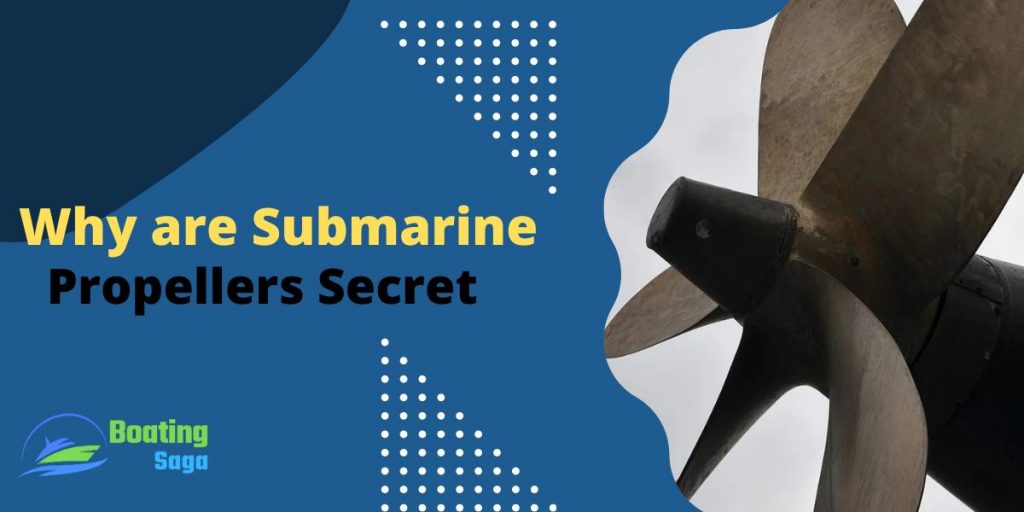
Why are Submarine Propellers Secret: Let’s Find Out
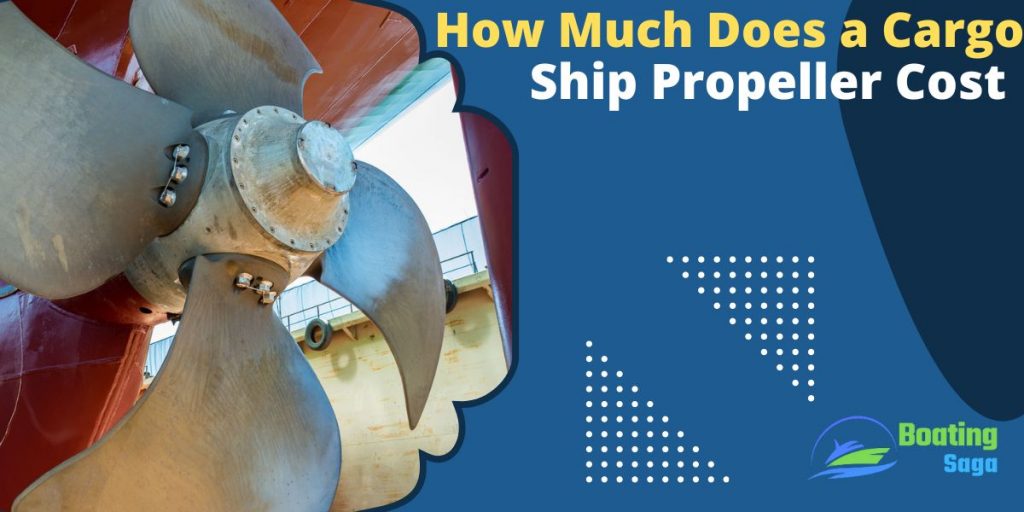
How Much Does a Cargo Ship Propeller Cost?
Leave a comment cancel reply.
Your email address will not be published. Required fields are marked *
Save my name, email, and website in this browser for the next time I comment.

Cruise FAQs
How big is a cruise ship propeller.
Have you ever wondered about the size of a cruise ship’s propeller? If so, allow me to shed some light on this – they are far from small. In fact, cruise ship propellers are massive and play a crucial role in keeping these colossal ships moving.
As a ship enthusiast and engineer, I am fascinated by the intricate design and construction of these propellers. Not only do they need to be large enough to propel a massive ship through the water, but they also need to be efficient and powerful.
In this article, we will explore the size and dimensions of cruise ship propellers, the materials used in their construction, and their impact on fuel consumption. We will also delve into the advancements in propeller technology and some interesting facts about these impressive pieces of equipment.
So, let’s dive in and unravel the secrets behind the size and power of cruise ship propellers.
Table of Contents
Key Takeaways
- Cruise ship propellers can be as large as a two-story building.
- Propeller design impacts fuel consumption and maneuverability.
- Advanced propeller technology contributes to fuel savings and environmental sustainability.
- Innovations in cruise ship propellers have improved efficiency, performance, and fuel consumption.
The Importance of Cruise Ship Propellers
Do you ever wonder just how important those massive cruise ship propellers are to the ship’s overall performance? Well, let me tell you, they play a crucial role in not only propelling the ship forward but also in ensuring its environmental sustainability.
The impact of propeller design on the environment cannot be overstated. By optimizing the shape, size, and number of blades, cruise ship propellers can significantly reduce fuel consumption and emissions.
As we move towards a greener future, the development of cruise ship propulsion technology becomes even more important. Researchers are constantly exploring new materials and designs to maximize efficiency and minimize environmental impact.
Now, let’s dive into the basics of cruise ship propeller design and understand how these impressive machines work.
The Basics of Cruise Ship Propeller Design
Crafting the perfect design, engineers carefully construct cruise ship propellers to efficiently power these floating giants. Cruise ship propeller design is a complex process that takes into consideration various factors, including cruise ship propeller noise reduction and cruise ship propeller hydrodynamics.
Propeller noise reduction is crucial to ensure a comfortable and peaceful environment for passengers on board. Engineers use advanced techniques such as optimizing blade geometry and incorporating sound-dampening materials to minimize noise generated by the propeller.
Cruise ship propeller hydrodynamics is another important aspect of the design process. It involves studying the flow of water around the propeller blades and optimizing their shape to maximize thrust and efficiency. By understanding the intricate dynamics of water flow, engineers can create propellers that propel cruise ships through the water with minimal resistance and maximum power.
Transitioning into the subsequent section about the size and dimensions of cruise ship propellers, it is important to note that propeller design goes hand in hand with considerations of size and dimensions.
The Size and Dimensions of Cruise Ship Propellers
When it comes to cruise ship propellers, you’ll be amazed by the immense size and dimensions that play a crucial role in powering these floating giants. Cruise ship propellers are typically massive in size, with diameters ranging from 15 to 40 feet. These propellers can weigh anywhere from 30 to 80 tons, depending on the size of the ship. The dimensions of a cruise ship propeller are carefully calculated to ensure optimal performance and efficiency. The table below highlights the typical dimensions and weight of cruise ship propellers.
These specifications are necessary to propel the massive cruise ships through the water with ease. The size and weight of cruise ship propellers are designed to withstand the immense forces and pressures exerted on them during operation. As we delve into the materials used in cruise ship propeller construction, we will explore how these components are built to handle such demanding conditions.
The Materials Used in Cruise Ship Propeller Construction
Cruise ship propellers are typically made from high-strength alloys, such as stainless steel or bronze, due to the demanding conditions they face. These materials offer excellent resistance to corrosion, fatigue, and erosion, ensuring the longevity and performance of the propellers.
To further enhance their durability, propellers are often coated with specialized coatings that provide additional protection against seawater and marine organisms.
In terms of construction techniques, cruise ship propellers are usually cast or forged, allowing for precise shaping and optimal performance. The use of advanced manufacturing processes, such as computer-aided design and simulation, ensures that the propellers are meticulously crafted to minimize vibrations and maximize efficiency.
With these exceptional materials and construction techniques, cruise ship propellers are engineered to deliver unparalleled power and efficiency.
Transitioning into the subsequent section about the power and efficiency of cruise ship propellers…
The Power and Efficiency of Cruise Ship Propellers
The incredible force and efficiency of these spinning giants will leave you in awe. Cruise ship propellers are not only massive in size, but they also generate an immense amount of power. The propellers are designed to convert the rotational motion of the ship’s engines into thrust, propelling the ship forward through the water. This power generation is crucial for the ship to navigate through the vast oceans.
To ensure maximum efficiency, cruise ship propellers are carefully designed and constructed. Factors such as blade shape, pitch, and material composition are taken into consideration. The aim is to minimize energy losses and maximize thrust production. By optimizing these factors, cruise ship propellers can achieve high levels of efficiency, allowing the ship to travel long distances while consuming minimal fuel.
Incorporating a 2 column and 5 row table in markdown format:
The role of cruise ship propellers in maneuverability will be explored in the subsequent section, highlighting their contribution to the ship’s agility and control.
The Role of Cruise Ship Propellers in Maneuverability
Cruise ship propellers play a crucial role in maneuverability. They allow these massive vessels to navigate through tight turns and dock with precision. The size of the propeller directly impacts the ship’s speed, as larger propellers can move more water with each rotation, generating greater thrust.
Additionally, the shape of the propeller blades influences maneuverability. Propellers with a higher pitch angle allow for sharper turns, while propellers with a lower pitch angle excel at maintaining a steady course. These intricate mechanics work harmoniously to ensure the ship responds swiftly and accurately to the captain’s commands.
As we delve into the maintenance and care of cruise ship propellers, it becomes evident that their intricate design requires meticulous attention.
The Maintenance and Care of Cruise Ship Propellers
Maintaining and caring for cruise ship propellers is a meticulous task that requires attention to every intricate detail. To ensure optimal performance, various maintenance techniques are employed. Regular inspections are conducted to check for any signs of damage or wear, such as cracks or erosion. If any issues are detected, the propellers are carefully repaired or replaced. Additionally, propellers are cleaned regularly to remove any marine growth or debris that may affect their efficiency. A 3 column and 5 row table is shown below, summarizing common issues that can arise with cruise ship propellers:
These maintenance techniques and solutions help ensure the propellers operate at their maximum efficiency, minimizing common issues. Transitioning into the subsequent section about ‘the impact of propeller design on fuel consumption,’ it is important to consider the influence of maintenance on propeller performance.
The Impact of Propeller Design on Fuel Consumption
Maximizing fuel efficiency is crucial when it comes to propeller design. A well-designed propeller can be likened to a sleek and aerodynamic sports car effortlessly gliding through the water. The impact of propeller design on fuel consumption cannot be understated.
By optimizing the shape, size, and number of blades, cruise ship propellers can significantly reduce fuel consumption and improve overall performance. Advanced propulsion technology plays a vital role in achieving these goals. Innovations such as controllable pitch propellers and contra-rotating propellers further enhance fuel efficiency by allowing the ship to operate at optimal speeds and power levels.
Additionally, the use of composite materials and advanced manufacturing techniques ensures lightweight yet durable propellers, reducing resistance and increasing efficiency. These advancements in cruise ship propeller technology pave the way for even greater fuel savings and environmental sustainability.
Transitioning into the next section, let’s explore the exciting innovations and advancements in cruise ship propeller technology.
Innovations and Advancements in Cruise Ship Propeller Technology
In the previous section, we explored how propeller design can significantly impact fuel consumption on cruise ships. Now, let’s delve into the exciting world of innovations and advancements in cruise ship propeller technology.
Advancements in cruise ship propellers have been driven by the need for increased efficiency and reduced environmental impact. Engineers have been working on developing new propeller designs that minimize drag and improve overall performance. One notable advancement is the use of composite materials, which offer enhanced durability and reduced weight.
Additionally, researchers are exploring the potential of alternative propulsion systems, such as electric and hybrid technologies, which could revolutionize the industry in the future.
To pique your interest, here are some intriguing aspects of cruise ship propellers that you may find fascinating. Now, let’s dive into the realm of fun facts about cruise ship propellers.
Fun Facts About Cruise Ship Propellers
Did you know that cruise ship propellers can be as large as a two-story building? Cruise ship propeller history dates back to the early 20th century when steam-powered ships dominated the seas. Over the years, advancements in technology have led to interesting propeller designs. One such design is the controllable pitch propeller, which allows the angle of the blades to be adjusted for optimal performance in different conditions. Another design is the podded propulsion system, where the propeller is housed in a pod that can rotate 360 degrees, providing better maneuverability. These innovations have greatly improved the efficiency and performance of cruise ship propellers, allowing for smoother sailing and reduced fuel consumption. As cruise ships continue to grow in size, so too does the need for larger and more powerful propellers to propel them through the water.
Frequently Asked Questions
How much does a cruise ship propeller weigh.
The weight of a cruise ship propeller is distributed evenly throughout its structure. This distribution helps maintain balance and stability. However, the weight does have an impact on fuel efficiency, as heavier propellers require more power to rotate.
What are the different types of cruise ship propellers?
There are three main types of cruise ship propellers: fixed pitch, controllable pitch, and azimuth thrusters. Each type has its advantages, such as improved maneuverability, fuel efficiency, and reduced noise and vibration levels.
How are cruise ship propellers installed?
Installing a cruise ship propeller is like assembling a complex puzzle. It involves carefully aligning the blades and securing them to the propeller shaft. Regular maintenance is crucial to ensure optimal performance and prevent any potential damage.
Can cruise ship propellers be repaired or replaced?
Yes, cruise ship propellers can be repaired or replaced. Cruise ship propeller maintenance involves inspecting and repairing any damage or wear. The materials used for cruise ship propellers are typically high-strength alloys like bronze or stainless steel.
How does the size of a cruise ship propeller affect its performance?
The size of a cruise ship propeller significantly impacts its performance. Propeller design plays a crucial role in cruise ship fuel efficiency, while the choice of materials also affects performance.
In conclusion, the cruise ship propeller is an essential component that plays a significant role in the performance and efficiency of the vessel. Its size and dimensions, made from durable materials, allow it to navigate through the vast ocean waters.
With proper maintenance and care, these propellers ensure smooth sailing for passengers. Moreover, advancements in propeller technology continue to enhance fuel consumption and propel ships forward like a swift gust of wind, cutting through the waves effortlessly.
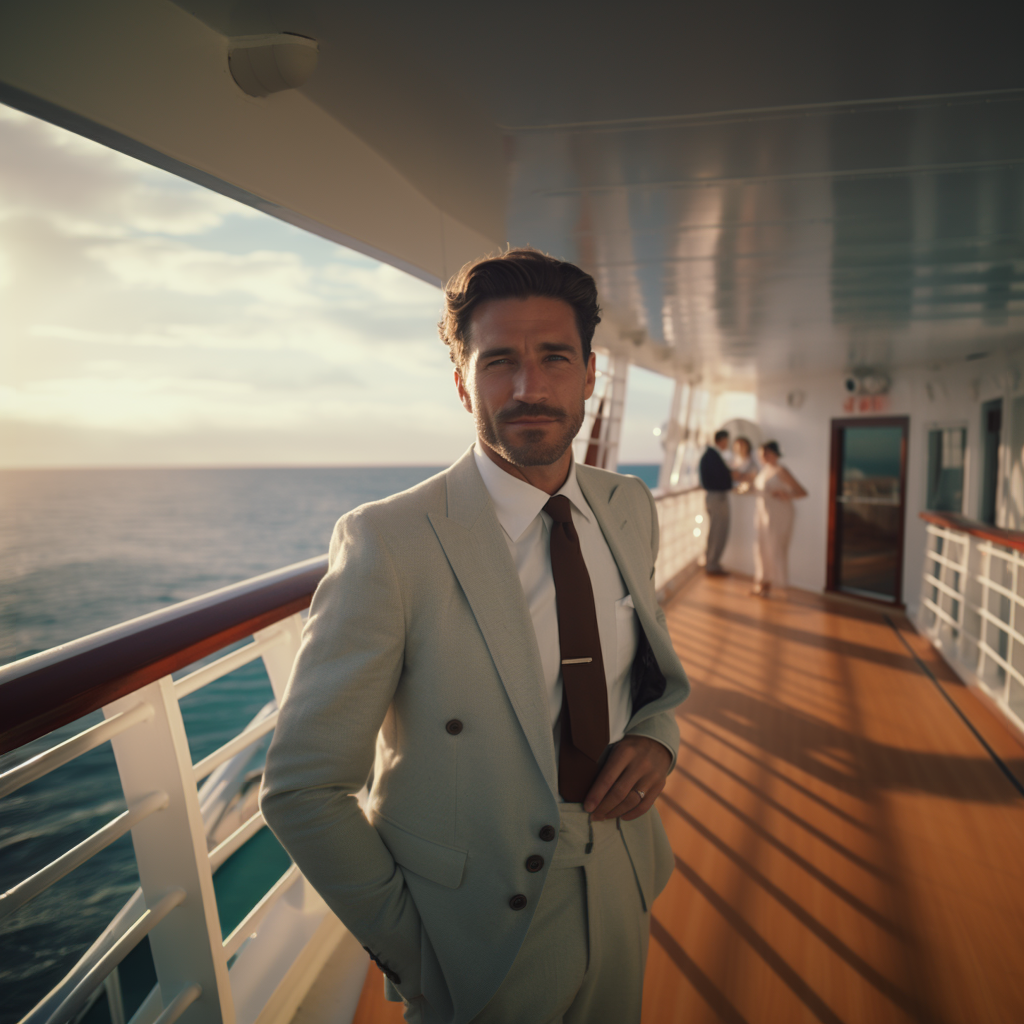
Alfons is the visionary leader and driving force behind Voyager Info’s success. As the Editor in Chief, he brings a wealth of experience and an unwavering passion for travel to the helm of our cruise-centric platform.
With a lifelong fascination for exploring new horizons, Alfons discovered his love for the ocean and cruising at a young age. From sailing across pristine Caribbean waters to embarking on daring expeditions to far-flung destinations, he has amassed a treasure trove of first-hand experiences in the world of cruising.
What Time To Book Flight After Cruise
What To Do In Belize Cruise

Alfons is the visionary leader and driving force behind Voyager Info’s success. As the Editor in Chief, he brings a wealth of experience and an unwavering passion for travel to the helm of our cruise-centric platform. With a lifelong fascination for exploring new horizons, Alfons discovered his love for the ocean and cruising at a young age. From sailing across pristine Caribbean waters to embarking on daring expeditions to far-flung destinations, he has amassed a treasure trove of first-hand experiences in the world of cruising.

You may like
Unveiling celebrity ascent: discover exciting destinations & experiences.
Nestle into the world of celebrity travel and uncover the tantalizing secrets that elevate their journeys beyond the ordinary.
Picture yourself walking onto the splendid deck of a lavish cruise ship, where the ocean air is filled with hints of mesmerizing places ready for discovery. As we delve into the realm of celebrity travel, revealing the charm of elite retreats and secluded treasures, one query remains: What really differentiates these sought-after locations from the usual holiday destinations?
Let's delve deeper into the realm of celebrity ascent and unravel the secrets behind these extraordinary journeys.
- Exclusive Celebrity Travel Experiences offer opulent adventures in Europe and the Caribbean.
- Luxury Celebrity Retreats provide private, tranquil havens in stunning locations.
- Celebrity Ascent Hidden Gems reveal curated itineraries for unique cultural immersion.
- Celebrity Cruise Destinations feature iconic ports and exclusive excursions for memorable journeys.
Celebrity Hotspots Around the Globe
Embarking on an unforgettable journey with Celebrity Ascent, we explore a myriad of celebrity hotspots around the globe, from the vibrant streets of Rome to the sun-kissed shores of Mykonos. Our adventure begins with the Best of Greece and Italy itinerary, where we soak in the rich history of Rome, the enchanting beauty of Naples, and the stunning vistas of Santorini.
For those craving a tropical escape, the 7-Night Eastern Caribbean Maiden Voyage awaits, promising to reveal iconic destinations that will leave us in awe.
As we sail towards the horizon, the allure of the Italian Riviera and the charm of France beckon us on a 9-Night journey during the summer season. We also have the opportunity to celebrate holidays in style on the 7-Night Bahamas, Mexico, and Grand Cayman Holiday Cruise, where luxury meets festivity in the most exquisite manner.
For those seeking shorter yet equally captivating experiences, our Destination Gateway excursions offer unique and unforgettable moments at every turn. Celebrity Ascent truly serves as our gateway to the world's most coveted celebrity hotspots.
Luxury Retreats Loved by Celebrities

Among the array of exclusive destinations cherished by celebrities, the French Riviera, Maldives, and private islands stand out as luxurious retreats that offer unparalleled privacy and bespoke experiences.
Picture yourself in the French Riviera, surrounded by the chic atmosphere of the Mediterranean coast, enjoying breathtaking ocean views from your private villa's panoramic terrace.
In the Maldives, be mesmerized by the crystal-clear waters and white sandy beaches, indulging in personalized spa treatments and world-class dining experiences in a serene setting.
Private islands offer a secluded paradise where celebrities can unwind in utmost privacy, with exclusive entertainment experiences, live music under the stars, and gourmet meals served in a lavish dining room.
Luxuriate in the tranquil spa area, taking in the beauty of the natural surroundings while basking in the luxury of these retreats loved by the stars.
Exclusive Travel Experiences Unveiled
Discover a world of exclusive travel experiences with Celebrity Ascent's inaugural 2023-2024 winter Caribbean and summer European itineraries. Embark on preview sailings like the 4-Night Western Caribbean voyage on November 22, 2023, or the grand 7-Night Eastern Caribbean Maiden Voyage on December 3, 2023. Opt for signature Caribbean sailings such as the 7-Night Bahamas, Mexico, and Grand Cayman itinerary, or immerse yourself in holiday cheer on the 7-Night Bahamas, Mexico, and Grand Cayman Holiday Cruise on December 24, 2023.
For a European adventure, kick off your summer with the 9-Night Italian Riviera and France itinerary, or delve into history on the 12-Night Best of Greece and Italy journey. Celebrity Ascent ensures a plethora of excursions to picturesque locales and a myriad of holiday-themed activities and events onboard. From exploring stunning Caribbean islands to wandering through ancient European landmarks, these exclusive travel experiences promise unforgettable moments and endless possibilities for those seeking a truly distinctive vacation.
Must-Visit Destinations for A-Listers
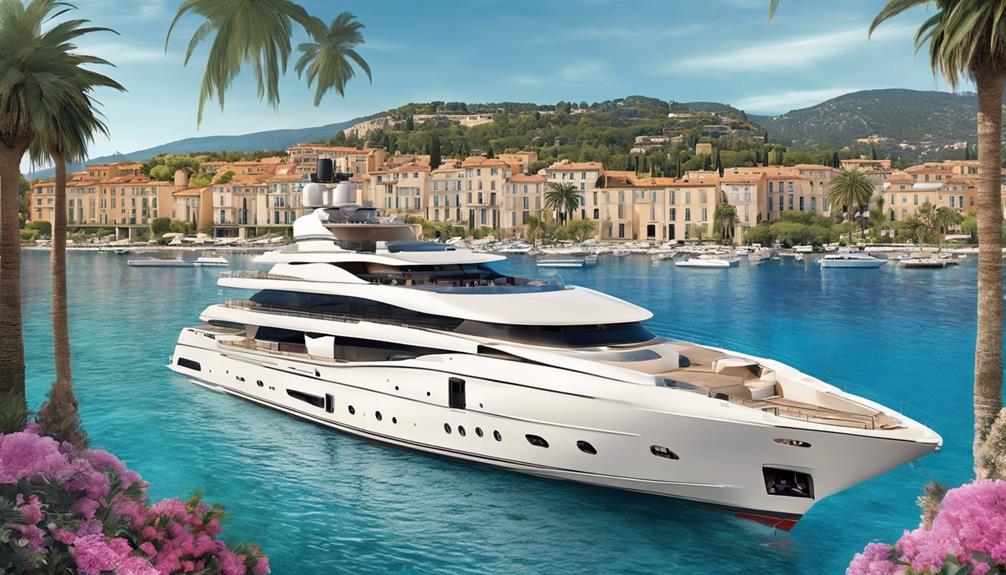
Indulge in the allure of luxury and sophistication at the must-visit destinations reserved for A-listers by Celebrity Ascent. Experience the opulence of Rome, Naples, Mykonos, and Santorini on the 12-Night Best of Greece and Italy itinerary.
Immerse yourself in the beauty of the Italian Riviera and France with a 9-Night itinerary that showcases picturesque locations and historical landmarks.
For a monumental celebration and exclusive access to stunning Caribbean destinations, set sail on the 7-Night Eastern Caribbean Maiden Voyage on December 3, 2023. Celebrate the holidays at sea with the 7-Night Bahamas, Mexico, and Grand Cayman Holiday Cruise on December 24, 2023, for a festive and luxurious experience.
Preview the luxurious sailing options with the 4-Night Western Caribbean voyage on November 22, 2023, offering a taste of the lavish Celebrity Ascent experience. Prepare to be pampered and enjoy unparalleled sophistication at these exclusive A-list destinations.
Hidden Gems for Celebrity Jetsetters
Uncover the allure of exclusive hidden gem destinations handpicked for Celebrity Jetsetters by Celebrity Ascent, offering a unique blend of luxury and authenticity.
- Curated Itineraries : Delve into off-the-beaten-path locations with meticulously planned schedules that showcase the hidden wonders of each destination.
- Local Culture Immersion : Immerse yourself in the heart of local traditions, from savoring authentic cuisine to engaging with indigenous communities for a truly enriching experience.
- Personalized Excursions : Tailored adventures await, providing insider access to exclusive sites and activities that cater to your discerning tastes and preferences.
- Unforgettable Travel Memories : Create lasting impressions as you wander through picturesque landscapes, connect with welcoming locals, and capture moments that define the essence of each hidden gem destination.
Embark on a journey unlike any other with Celebrity Ascent, where every corner of the world holds the promise of discovery and transformation. Let go of the ordinary and embrace the extraordinary as you uncover the hidden gems that await your exploration.
What Is Special About Celebrity Ascent?
Special about Celebrity Ascent? It's the innovative Magic Carpet offering breathtaking views, the immersive Eden venue with evolving experiences, the dynamic Grand Plaza for live performances, and the tranquil Rooftop Garden. Elevate your experience!
What Cabins to Avoid on Celebrity Ascent?
Avoid cabins near high-traffic areas for peace. Stay away from entertainment venues above or below for quiet. Skip engine rooms for less noise. Opt for midship cabins for stability. Avoid obstructed views for light.
What Are the Shows on Celebrity Ascent?
We love the diverse shows on Celebrity Ascent. From high-energy musicals to mesmerizing dance performances, there's something for everyone. The live entertainment onboard creates unforgettable memories, ensuring a vibrant and dynamic cruise experience.
What Are the Changes to the Celebrity Ascent?
We've revamped Celebrity Ascent with new immersive shows, sketch art classes, and tabletop games for mystery lovers. The Signature Resort Deck Party, Ascent After Dark: Shine the Night, offers vibrant nightlife and holiday fun.
As we bid farewell to the shimmering lights of Celebrity Ascent, we're left with a sense of awe and wonder. From the luxurious celebrity hotspots to the hidden gems cherished by A-listers, this journey has been a dazzling tapestry of excitement and elegance.
As we reflect on our unforgettable adventures, we're reminded of the magic that awaits us in every corner of the world. Celebrity Ascent has truly redefined the art of cruising, leaving us longing for more unforgettable experiences on the high seas.

Claire, a creative soul with an unquenchable thirst for storytelling, is an integral part of the Voyager Info team. As a dedicated writer, she weaves captivating narratives that transport readers to enchanting cruise destinations and beyond.
Claire’s love affair with writing began at an early age when she discovered the magic of words and their ability to craft worlds and emotions. Her innate curiosity led her to explore various literary genres, but it was travel writing that truly captured her heart. Drawing inspiration from her own globetrotting adventures and encounters with diverse cultures, Claire embarked on a journey to become a travel writer par excellence.
How To Iron On A Cruise Ship
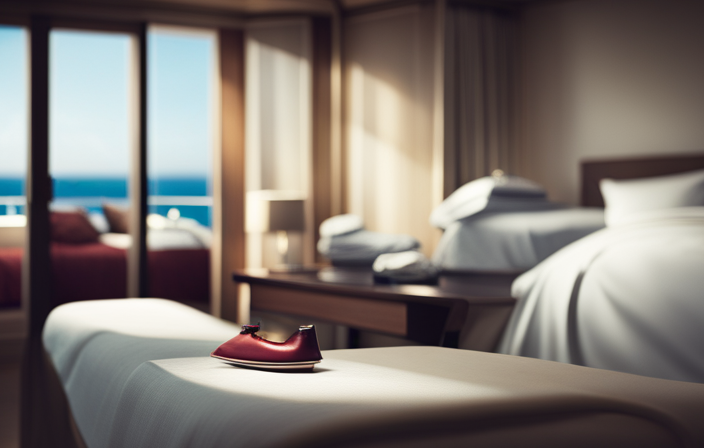
Hello! Prepare yourself to explore the ultimate manual for ironing aboard a cruise ship. As a seasoned traveler, I have gathered several techniques and strategies to keep my clothes wrinkle-free and looking sharp while enjoying the adventures across the ocean.
Picture yourself gliding through the ocean, with the sun gently caressing your skin and the wind tousling your hair. But wait, what’s that? Wrinkles on your favorite outfit? Fear not, for I am here to share my tried-and-true tips to ensure your garments are shipshape and ready for any occasion.
From navigating the cruise ship’s ironing policy to selecting the perfect tools and accessories, we’ll cover it all. Join me as we embark on this ironing adventure, exploring proper techniques, fabric care labels, time restrictions, and more.
So grab your iron and let’s set sail on a wrinkle-free voyage!
- Adjust the iron temperature according to the fabric type to avoid damaging delicate fabrics or not effectively removing wrinkles from sturdy materials.
- Respect designated ironing areas onboard and be mindful of others waiting to use the facilities. Maintain a respectful and efficient ironing routine, avoiding hogging the ironing facilities and cleaning up after yourself.
- Practice ironing safety by placing the iron on a stable surface, keeping it away from flammable materials, unplugging it when not in use, allowing it to cool down before storing, and using oven mitts or heat-resistant gloves when handling the iron.
- Avoid ironing clothes on the body to prevent accidental burns and injuries. Remove clothes before ironing and iron them separately. Be cautious of hot iron surfaces and avoid ironing near body parts.
Familiarize Yourself with the Cruise Ship’s Ironing Policy
Before you embark on your cruise, make sure you familiarize yourself with the ship’s ironing policy. This will help you understand the rules and regulations surrounding ironing on board. Research ironing alternatives and understand the consequences of violating the ironing policy.
Many cruise ships have strict regulations when it comes to ironing due to safety concerns. Open flames and hot irons can pose a risk in a confined space like a ship. As a result, most cruise lines do not allow guests to bring their own irons on board. However, they often provide self-service laundry facilities equipped with irons. Some ships even offer pressing services for a fee.
Understanding these alternatives will help you better plan your wardrobe and ensure your clothes stay wrinkle-free throughout your cruise.
Speaking of wardrobe, the next step is to pack wrinkle-resistant clothing to minimize the need for ironing.
Pack Wrinkle-Resistant Clothing
When you’re getting ready for your cruise, make sure to pack plenty of wrinkle-resistant clothing.
Did you know that 80% of travelers prefer clothing that doesn’t require ironing?
This travel hack of choosing the best wrinkle-resistant fabrics for your vacation wardrobe will save you time and effort on your cruise.
Opt for fabrics like polyester, nylon, and spandex, as they are known for their wrinkle-resistant properties.
These materials are not only easy to pack, but also quick to dry, making them perfect for your cruise.
Additionally, consider packing clothes in dark colors or patterns, as they tend to hide wrinkles better.
By following these tips, you can ensure that your vacation wardrobe stays neat and wrinkle-free.
Now, let’s explore how to use the onboard laundry service to further simplify your cruise experience.
Use the Onboard Laundry Service
To make your life easier, don’t forget to take advantage of the onboard laundry service during your trip.
While some cruise ships charge a fee for this service, it is well worth it for the convenience it provides. Instead of worrying about wrinkled clothes, you can simply drop off your laundry and have it returned to you fresh and neatly pressed.
This is especially beneficial for those who have packed wrinkle-resistant clothing but still want that crisp, polished look. The laundry service fees vary depending on the cruise line, but they are generally reasonable considering the time and effort saved.
So, sit back, relax, and let the onboard laundry service take care of your laundry needs.
Now, let’s move on to choosing the right ironing tools and accessories for your ironing needs.
Choose the Right Ironing Tools and Accessories
Make your ironing experience a breeze by selecting the perfect ironing tools and accessories that will transform your clothes from drab to fab in no time. When it comes to ironing techniques, it’s important to consider the fabric care labels on your clothing to ensure you use the right heat setting and avoid damaging your garments. To help you choose the right ironing tools, take a look at the table below:
By selecting the appropriate ironing tools and accessories, you can achieve professional-looking results while taking care of your clothes. Now, let’s move on to setting up your ironing station in a safe and convenient area.
Set Up Your Ironing Station in a Safe and Convenient Area
Once you’ve found the perfect spot, you’ll be amazed at how effortlessly your ironing station transforms into a safe haven for wrinkle-free clothes. Here are three ironing tips and hacks that will make your ironing experience on a cruise ship a breeze:
Invest in a portable ironing board: A compact and lightweight ironing board is essential for setting up your ironing station. Look for one that can be easily stored and transported.
Use a heat-resistant mat or pad: Protect the surface you are ironing on by using a heat-resistant mat or pad. This will prevent any accidental damage to the cruise ship’s furniture or carpet.
Keep a spray bottle handy: Fill a small spray bottle with water to moisten stubborn wrinkles. Spritz the garment lightly before ironing to help smooth out the fabric.
With these ironing tips and hacks, you’ll be ready to tackle the next step: preparing your garments for ironing.
Prepare Your Garments for Ironing
To prepare your garments for ironing, follow these steps:
- Check the fabric care labels on your garments for ironing instructions.
- Sort your clothes based on fabric type, separating delicate items from sturdier ones.
- Ensure your garments are clean and dry before ironing.
- Remove any lint or loose threads using a lint roller or fabric brush.
- Lightly dampen the fabric with a spray bottle if needed to smooth out stubborn wrinkles.
Remember to always follow proper ironing techniques to prevent damage to your clothes.
Transitioning into the next section, let’s talk about how to master these techniques for a wrinkle-free wardrobe.
Follow Proper Ironing Techniques
Now that your garments are ready, it’s time to master the proper ironing techniques for a wrinkle-free wardrobe. Here are three essential ironing tips to ensure your clothes look their best on a cruise ship:
Set the iron temperature: Different fabrics require different heat settings. Consult the fabric care labels on your garments to determine the appropriate temperature. Adjust the iron accordingly to prevent damage or scorching.
Use steam wisely: Steam can help remove stubborn wrinkles. Fill the iron’s water reservoir and select the steam setting. Hold the iron above the garment and press the steam button, moving the iron in a downward motion. Avoid excessive steam on delicate fabrics.
Iron in the right order: Start with garments that require low heat and gradually increase the temperature for sturdier fabrics. Iron collars and cuffs first, then move to the body of the garment, using smooth and consistent strokes.
By following these proper ironing techniques, you can achieve a polished look for your cruise attire. Pay attention to fabric care labels and ironing temperatures to avoid any mishaps.
Pay Attention to Fabric Care Labels and Ironing Temperatures
Make sure to pay close attention to the fabric care labels and ironing temperatures to ensure your clothes look their best. Ironing techniques vary depending on the fabric, so it’s crucial to follow the instructions provided. To make it easier for you, I have created a table below that highlights the different fabric types, recommended ironing temperatures, and the corresponding ironing techniques. This will help you achieve the desired results without damaging your clothes. Remember to use the appropriate ironing tools, such as an ironing board and a steam iron, to ensure smooth and wrinkle-free garments. By following these guidelines, you can maintain a professional and polished appearance while on the cruise ship. Now, let’s move on to the next section, where we will discuss being mindful of time restrictions and considerate of other passengers.
Be Mindful of Time Restrictions and Considerate of Other Passengers
Being mindful of time restrictions and considerate of fellow travelers is crucial for a smooth and enjoyable experience onboard. Here are some tips to help you manage your time effectively and practice proper etiquette on a cruise ship:
Schedule your ironing time during non-peak hours to avoid inconveniencing other passengers.
Be efficient by ironing multiple items at once, using the appropriate temperature settings for each fabric.
Respect the designated ironing areas and be mindful of others waiting to use the facilities.
By following these guidelines, you can maintain a respectful and efficient ironing routine while onboard.
Once you have finished ironing, it’s important to practice safe ironing techniques and properly store your iron after use. [Transition sentence into the subsequent section about ‘practice safe ironing and properly store your iron after use.’]
Practice Safe Ironing and Properly Store Your Iron After Use
Remember to handle your iron with care and ensure it is safely stowed away after use, just like a delicate treasure in a hidden chest. When it comes to ironing on a cruise ship, safety should always be a top priority. To prevent accidents, it’s important to follow some ironing safety tips.
Firstly, make sure the iron is placed on a stable surface, away from any flammable materials. Always unplug the iron when not in use and allow it to cool down before storing it. When handling the iron, use oven mitts or a heat-resistant glove to protect your hands from burns. Additionally, avoid ironing clothes while they are still on your body to prevent accidental burns.
As for iron storage techniques, it’s crucial to wait for the iron to cool down completely before storing it. Use a heat-resistant iron storage bag or container to keep it safely tucked away, preventing any potential fire hazards.
By practicing safe ironing and properly storing your iron, you can enjoy wrinkle-free clothes on your cruise without compromising safety.
Can I bring my own iron on a cruise ship?
Yes, you can bring your own iron on a cruise ship. However, many cruise lines prohibit irons due to safety concerns. Ironing options onboard include using the ship’s laundry service or using wrinkle-release sprays and travel steamers as alternatives.
How much does the onboard laundry service cost?
The onboard laundry service on a cruise ship typically costs around $2-$3 per clothing item. To save money, consider packing enough clothes for the duration of the trip and utilizing the ship’s laundry facilities sparingly.
Is it possible to iron delicate fabrics on a cruise ship?
Ironing delicate fabrics on a cruise ship can be challenging. However, there are alternative ironing techniques available, such as using a steamer or hanging clothes in the bathroom while showering. These options ensure that your delicate fabrics stay wrinkle-free.
Are there any restrictions on using the ironing station?
The ironing station rules on a cruise ship can vary. However, there are usually restrictions on using the ironing equipment. It’s important to check with the cruise line for specific guidelines and availability.
What should I do if I accidentally burn my garment while ironing on a cruise ship?
If I accidentally burn my garment while ironing on a cruise ship and there is no ironing station available, I can try to fix it by using a fabric repair kit or seeking assistance from the ship’s laundry service.
In conclusion, ironing on a cruise ship can be a hassle-free experience if you follow the proper guidelines. Familiarize yourself with the ship’s ironing policy. Pack wrinkle-resistant clothing and utilize the onboard laundry service. Choose the right ironing tools and accessories. Set up your ironing station in a safe and convenient area. Follow proper ironing techniques. Pay attention to fabric care labels and ironing temperatures. Be mindful of time restrictions and considerate of other passengers.
With these tips, ironing on a cruise ship will be as smooth as sailing on the open seas, creating a rhythm of relaxation and elegance.
What Happens On A Disney Very Merrytime Cruise

The moment I step onto the Disney Very Merrytime Cruise’s deck, I’m instantly surrounded by an enchanting atmosphere brimming with holiday cheer and wonder. The air is infused with the scent of freshly baked cookies and resonates with the sound of joyful laughter.
The ship is adorned with festive decorations, twinkling lights, and a towering Christmas tree that fills the atrium. Everywhere I look, there are themed activities and special character meet and greets, bringing beloved Disney characters to life in their holiday attire.
The entertainment is spectacular, with holiday shows that leave me in awe and delicious dining options that satisfy both my taste buds and my festive spirit. From exciting onboard activities and amenities to fun-filled family activities and kids clubs, there is never a dull moment on this cruise.
With port of call excursions and adventures, as well as memorable photo opportunities, this is a journey that promises to create magical memories that will last a lifetime.
Festive Decorations and Themed Activities: The Disney Very Merrytime Cruise is adorned with twinkling lights, garlands, and wreaths, creating a magical holiday atmosphere. Families can participate in holiday crafts, enjoy live music performances, and meet beloved Disney characters. Themed activities are available to create unforgettable memories.
Special Character Meet and Greets: With over 70 unique interactions, guests have the opportunity to meet Mickey, Minnie, princesses, and classic Disney characters. This exclusive experience allows for capturing magical moments and creating memories that last a lifetime.
Holiday Entertainment and Shows: Guests can enjoy captivating performances and parades featuring Disney characters. Live musical performances fill the air with beautiful melodies, and enchanting holiday shows transport guests into a world of magic. Talented performers bring the holiday spirit to life.
Delicious Dining Options and Festive Treats: The cruise offers delectable culinary offerings and seasonal treats, including traditional roasted turkey, honey-glazed ham, gourmet hot chocolate, eggnog, and holiday-themed desserts. The dining experience is a feast for both the eyes and the palate.
Festive Decorations and Themed Activities
You’ll be amazed by the festive decorations and themed activities on a Disney Very Merrytime Cruise! From the moment you step on board, you’ll be surrounded by the holiday spirit.
The entire ship is beautifully adorned with twinkling lights, garlands, and wreaths, creating a magical atmosphere that will transport you to a winter wonderland.
But it’s not just the decorations that make this cruise special. There are also holiday crafts for the whole family to enjoy, where you can create your own ornaments and stockings to hang in your cabin.
And don’t forget about the live music performances! You’ll be treated to festive tunes played by talented musicians throughout the ship.
As you immerse yourself in these merry activities, you’ll also have the chance to meet and greet some of your favorite Disney characters, making this cruise truly unforgettable.
Special Character Meet and Greets
Don’t miss out on the chance to meet and greet special Disney characters during the festive season. With over 70 unique interactions possible, these character interactions are a highlight of the Disney Very Merrytime Cruise.
There are exclusive meet-ups with beloved characters that you won’t find anywhere else. From Mickey and Minnie dressed in their holiday best to princesses and classic Disney characters, there’s something for everyone.
Get your cameras ready for magical moments and create memories that will last a lifetime. These special character meet and greets are a perfect opportunity to get up close and personal with your favorite Disney friends.
Moving onto the next section about holiday entertainment and shows, you’ll be immersed in a world of enchantment and wonder.
Holiday Entertainment and Shows
Get ready to be captivated by the enchanting holiday entertainment and shows that will transport you into a world of magic and joy.
The Disney Very Merrytime Cruise offers a variety of festive performances and parades that are sure to bring a smile to your face. From the cheerful holiday parades featuring your favorite Disney characters in their holiday attire to the live musical performances that fill the air with beautiful melodies, there is something for everyone to enjoy.
Immerse yourself in the holiday spirit as you watch the talented performers bring these magical moments to life.
And when you’re ready to satisfy your taste buds, the delicious dining options and festive treats await you, ensuring a truly unforgettable holiday experience.
Delicious Dining Options and Festive Treats
Indulge in the delectable culinary offerings and delightful seasonal treats that will tantalize your taste buds during the Disney Very Merrytime Cruise. The ship’s restaurants and snack bars are brimming with festive cuisine, specially crafted to enhance the holiday spirit. From traditional roasted turkey and honey-glazed ham to gourmet hot chocolate and eggnog, there’s something for everyone to enjoy. But the true stars of the show are the holiday themed desserts. Imagine sinking your teeth into a gingerbread house-shaped cake or a snowman-inspired cupcake with a creamy peppermint frosting. It’s a feast for both the eyes and the palate. To give you a glimpse of the mouthwatering options available, here’s a table showcasing some of the treats you can expect:
After satisfying your taste buds, get ready for exciting onboard activities and amenities that will keep the holiday magic alive throughout your cruise.
Exciting Onboard Activities and Amenities
Immerse yourself in the holiday spirit with a wide array of exhilarating activities and luxurious amenities that will make your onboard experience truly unforgettable. Here are three exciting onboard entertainment options and festive activities that you can enjoy on a Disney Very Merrytime Cruise:
Deck the Deck Tropical Holiday Party: Get ready to groove to festive music, join in on a conga line, and dance with Disney characters during this lively celebration by the pool.
Mickey’s Tree Lighting Magic Ceremony: Witness the magical moment when Mickey illuminates the ship’s Christmas tree, filling the air with enchantment and holiday cheer.
Holiday-themed Movie Screenings: Snuggle up under the stars and enjoy classic holiday movies with loved ones on the top deck’s jumbo LED screen.
As you indulge in these exciting activities, don’t forget to take some time to unwind and pamper yourself with the relaxing spa and wellness options available onboard.
Relaxing Spa and Wellness Options
After enjoying all the exciting activities on a Disney Very Merrytime Cruise, it’s time to unwind and pamper yourself with the relaxing spa and wellness options onboard. Treat yourself to rejuvenating spa treatments, such as massages, facials, and body wraps, all designed to melt away stress and leave you feeling refreshed. You can also take advantage of the wellness classes offered, such as yoga and Pilates, to find inner balance and improve your overall well-being.
To give you a glimpse of the blissful experience that awaits you, take a look at this table depicting the various spa treatments available:
As you indulge in these luxurious treatments and take part in wellness classes, you’ll feel your worries melt away and your energy renewed. Now, let’s dive into the fun-filled family activities and kids clubs!
Fun-filled Family Activities and Kids Clubs
Get ready for a memorable family adventure as you explore the wide array of exciting activities and kids clubs available onboard!
Disney Very Merrytime Cruises offer a multitude of kids club activities and family-friendly entertainment options that will keep everyone entertained throughout the voyage.
From the Oceaneer Club, where kids can join in on interactive storytelling and character meet-and-greets, to the Edge, a club designed specifically for tweens, there is something for every age group.
The family can also come together for fun-filled activities like trivia contests, dance parties, and movie nights under the stars. With all of these options, boredom is simply not an option on a Disney Very Merrytime Cruise.
So get ready to make unforgettable memories with your loved ones as you embark on this magical journey.
As the ship sails towards the next exciting destination, let’s discover the adventures that await us during the port of call excursions!
Port of Call Excursions and Adventures
Explore the exciting adventures and experiences that await you during the port of call excursions on your Disney Very Merrytime Cruise. Here are four reasons why you won’t want to miss out on these incredible opportunities:
Port shopping: Discover unique souvenirs and treasures at the local shops and markets. From handmade crafts to gourmet treats, there’s something for everyone to enjoy.
Local culture exploration: Immerse yourself in the rich history and traditions of each port of call. Take part in cultural demonstrations, taste local cuisine, and learn about the customs and traditions of the region.
Exciting water activities: Dive into thrilling water adventures like snorkeling, kayaking, or even paddleboarding. Explore the vibrant marine life and stunning underwater landscapes.
Scenic tours and sightseeing: Embark on guided tours that showcase the beauty and landmarks of each destination. Capture breathtaking views, visit historical sites, and create lasting memories.
As you wrap up your port of call excursions, get ready to capture more unforgettable moments during the subsequent section about ‘memorable photo opportunities’.
Memorable Photo Opportunities
After enjoying the thrilling Port of Call excursions and adventures, there’s nothing quite like capturing picture perfect moments on a Disney Very Merrytime Cruise. From the moment you step on board, you’ll find countless opportunities to capture holiday joy and create lasting memories. Whether it’s posing with your favorite Disney characters dressed in their festive holiday attire, or snapping a photo in front of the beautifully decorated Christmas tree, there’s no shortage of photo-worthy spots. And don’t forget about the special holiday-themed photo sessions with professional photographers, where you can capture the magic of the season in a stunning backdrop. These memorable photo opportunities are the perfect way to document your time on the cruise and create keepsakes that will bring a smile to your face for years to come. As we move into the next section about creating magical memories, let’s delve into the enchanting activities that await you on board.
Creating Magical Memories
Immersing yourself in the enchanting activities on board will allow you to create unforgettable memories during your Disney Very Merrytime Cruise. It is the perfect opportunity for family bonding and creating new holiday traditions.
From the moment you step on the ship, you’ll be transported to a world of magic and wonder. Take part in the festive activities like gingerbread house decorating, holiday crafts, and cookie decorating with your loved ones.
Join Mickey and his pals for a special holiday-themed show and parade. Capture these precious moments with your family in the many photo opportunities available throughout the ship. Whether it’s posing with your favorite Disney characters or capturing the joy on your child’s face as they meet Santa Claus, these photos will be cherished for years to come.
Make the most of this magical experience and create memories that will last a lifetime.
Are there any age restrictions for the special character meet and greets?
Age restrictions for character meet and greets vary on a Disney Very Merrytime Cruise. However, most interactions are open to all ages, allowing everyone to create magical memories with their favorite characters.
Can I bring my own decorations to personalize my stateroom during the cruise?
Yes, you can bring your own decorations to personalize your stateroom during the cruise! It’s a great way to add a personal touch and make your space feel like home.
Are there any vegetarian or gluten-free dining options available on board?
As someone with dietary restrictions, I was thrilled to find an abundance of vegetarian and gluten-free dining options on board. From delicious plant-based dishes to gluten-free pastries, Disney Cruise Line truly caters to everyone’s needs.
Do I need to make reservations for the spa and wellness options in advance?
Yes, reservations for the spa and wellness options should be made in advance. This ensures availability and allows for a more relaxing experience. From massages to facials, there are various treatments to choose from onboard.
Are there any discounts or special promotions available for the port of call excursions?
There are often discounts and special promotions available for port of call excursions. Keep an eye out for deals and packages that can help you save money while enjoying the various activities and sights at your destination.
As I reflect on my Disney Very Merrytime cruise, I can’t help but feel like I’ve been transported to a winter wonderland. The festive decorations and themed activities made me feel like I was stepping into a magical holiday dream.
From special character meet and greets to incredible holiday entertainment, every moment was filled with joy and excitement.
And let’s not forget the delicious dining options and festive treats that tempted my taste buds.
It truly was a memorable experience, a picture-perfect scene straight out of a storybook.
Affiliate disclaimer
As an affiliate, we may earn a commission from qualifying purchases. We get commissions for purchases made through links on this website from Amazon and other third parties.
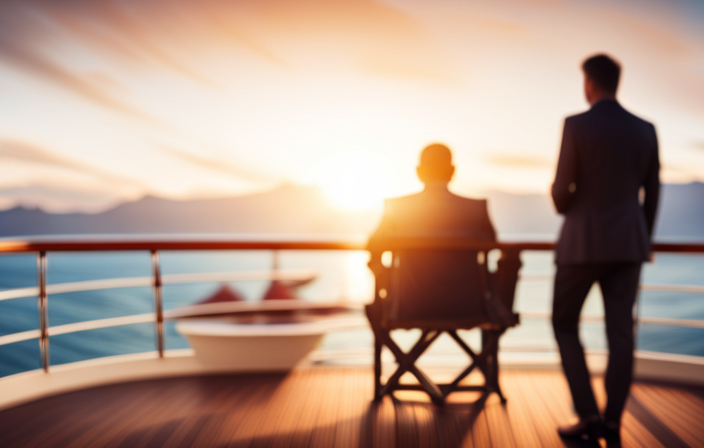
Expert Tips For A Smooth Cruise Experience

Culinary Collaborations, Family Fun, And Elegant Design: Msc Cruises’ Impressive Offerings
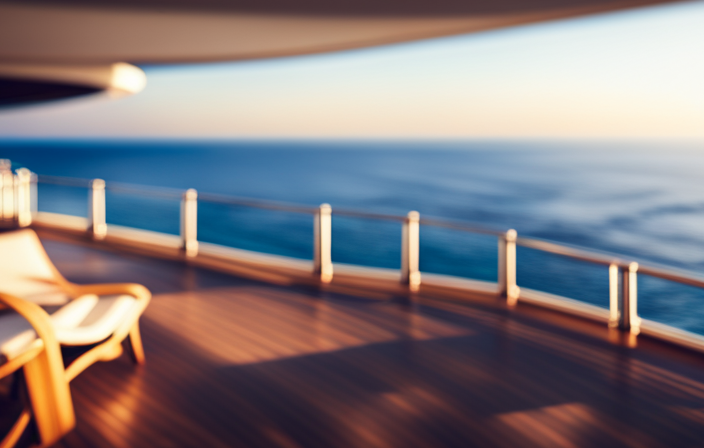
Lido Deck: Origins, Amenities, And Tips For Enjoying
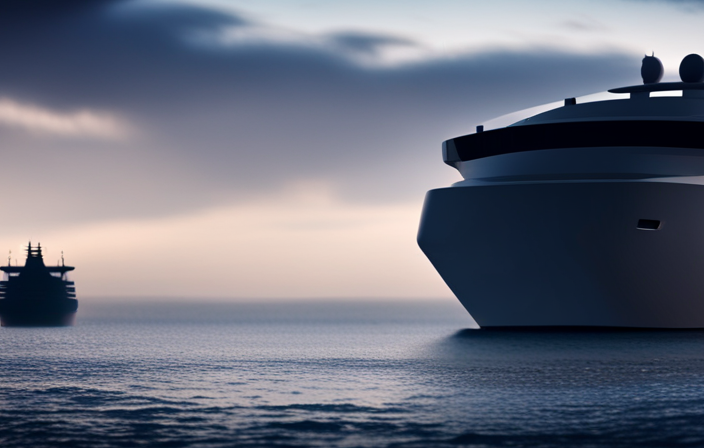
Cruise Ship Showdown: Solstice Class Vs. Edge Class On Celebrity Cruises

Cruise Ship Prohibited Items: What Not To Bring Onboard!
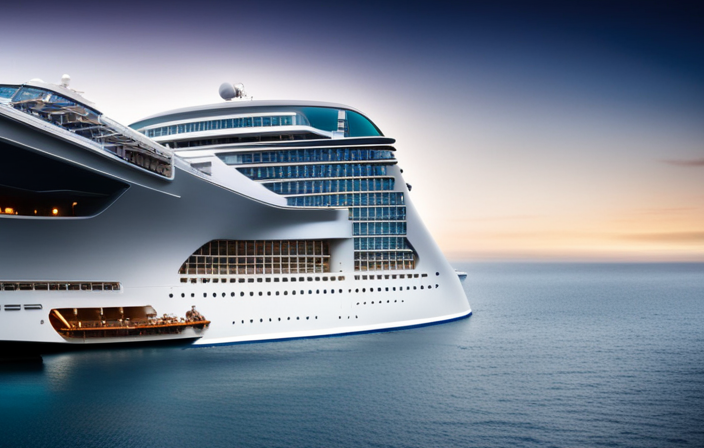
Which Celebrity Cruise Ships Have Been Refurbished

What Drinks Can You Bring On Princess Cruise

How To Turn On Cruise Control Tesla Model 3

What Is The Weather Like On A Transatlantic Cruise In April

How To Set Cruise Control Tesla Model Y

Azamara Onward: Origins, Renovation, and Future Plans
Anthony Bourdain: Unconventional Culinary Icon and Global Influencer

Arctic Adventure: Uncharted Destinations With Le Commandant Charcot
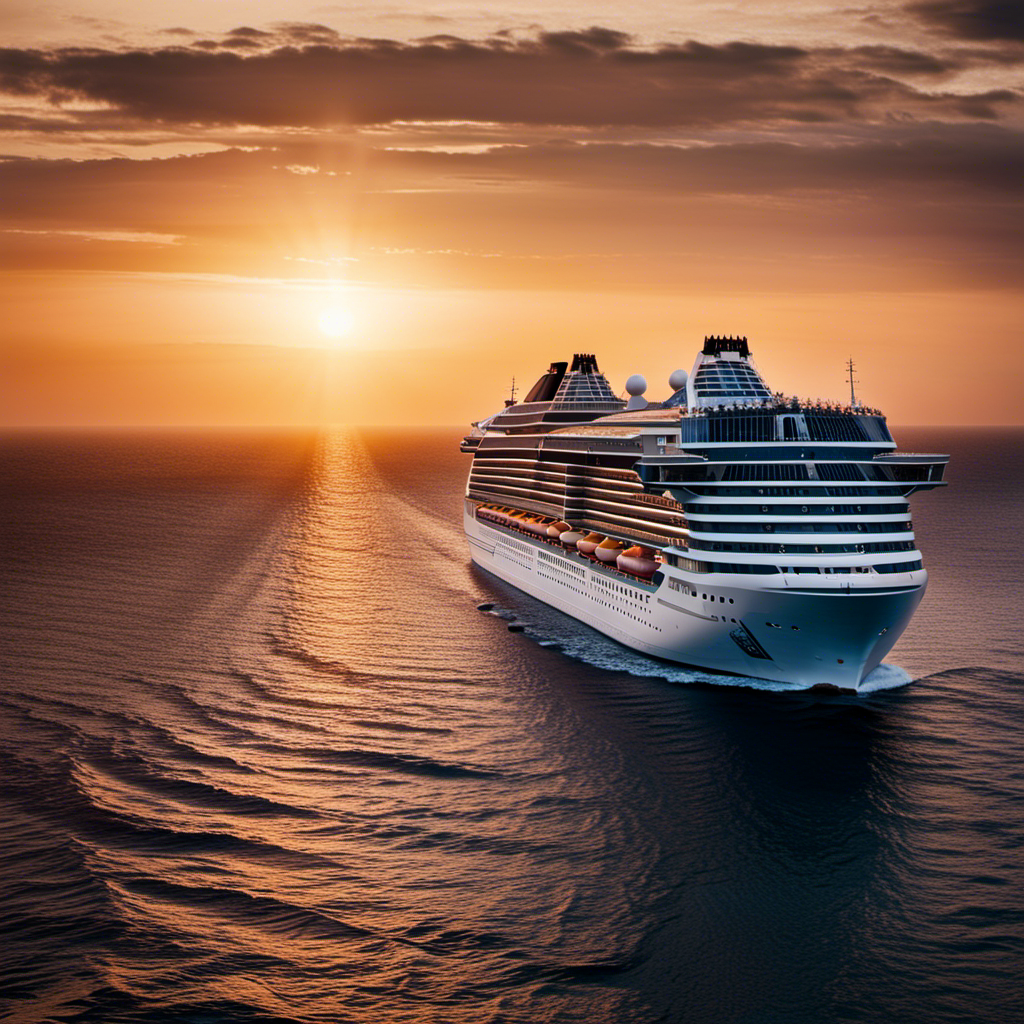
Atlas Ocean Voyages Welcomes World Traveller: A New Chapter Begins!
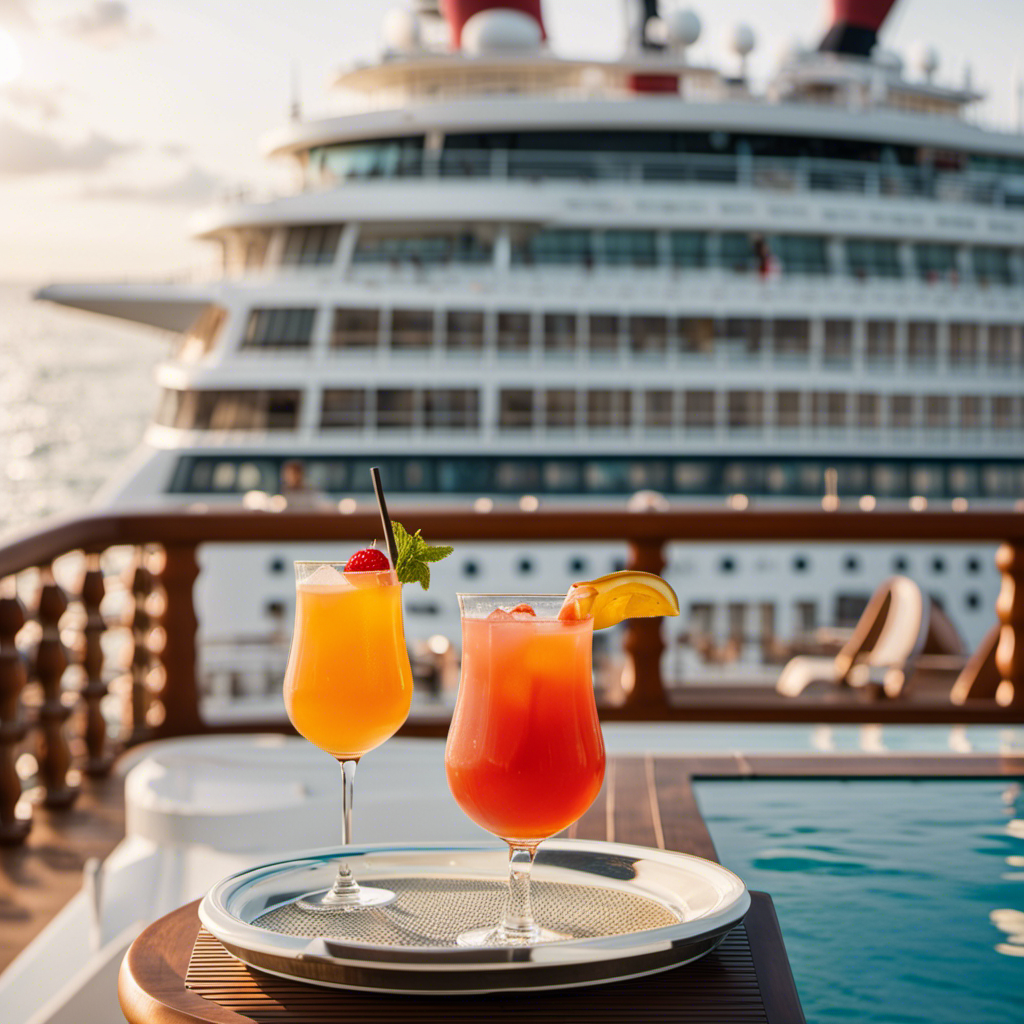
Are Luxury Cruises Worth the Price? Comparing Amenities, Staff Services, Gratuities, Beverages, Dining, Itineraries, Shore Excursions, and Special Memories

How To Check Weather For A Cruise
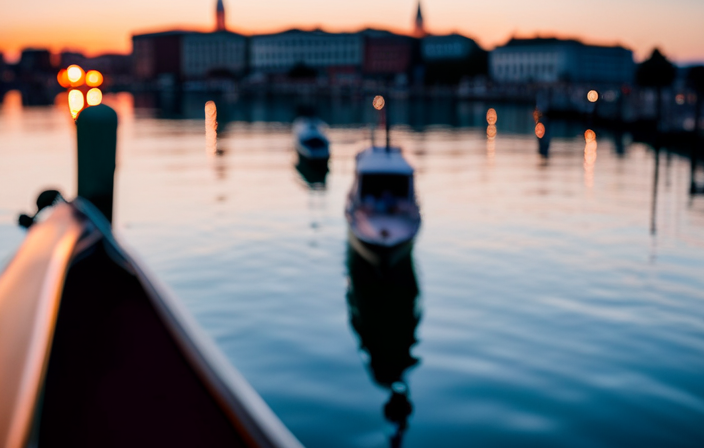
How To Get From Venice To Chioggia Cruise Terminal
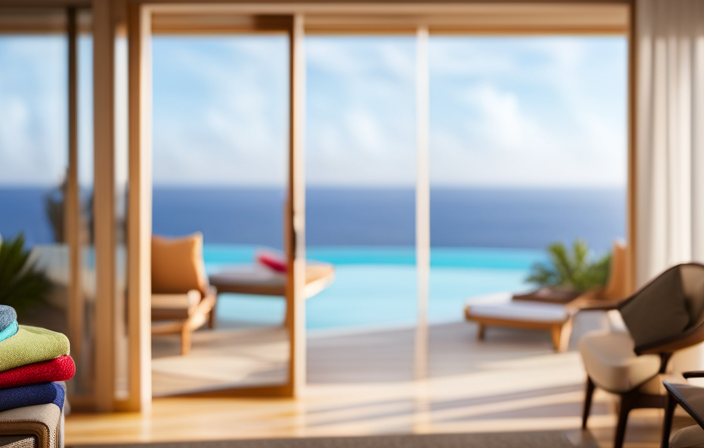
How Do You Qualify For An Ultra Cruise On Carnival
How Fast Does A Boat Propeller Spin?

August 18, 2023

This article may contain affiliate links where we earn a commission from qualifying purchases.
Key Takeaways
- Boat propellers spin on average between 3,000 to 3,500 RPM, some up to 5,500 RPM.
- Propeller spin speed is essential for generating less thrust and determining boat speed.
- Factors like boat size, engine type, and propeller material can all impact propeller spin.
Don't let propeller speeds leave you adrift! Dive into our article and navigate the waters of boat engine RPM effortlessly.
The boat propellers spin at varying speeds, typically ranging from 3,000 RPM to 5,000 RPM (Revolutions Per Minute). These RPM ranges optimize boat performance, ensuring smooth navigation and maximum efficiency on the water.
With years of hands-on experience and insights from top-notch specialists, I've navigated the waters of boat propellers like a pro. Count on me to steer you toward the smoothest, most exhilarating boating experience ever!
Table of contents
how fast does a boat propeller spin.
On average, boat propellers spin around 3,000 to 3,500 RPM, with high-performance boats sometimes reaching up to 5,000 RPM or even 5,500 RPM in specific cases. Knowing how fast a boat propeller spins and the factors that influence spin maximum speed can help boaters choose the right propeller type and maximize their vessel's performance on the water.
Understanding the basic principles of boat propeller spin, such as thrust generation and propeller pitch, is crucial for optimal boat performance. A propeller's spinning motion generates thrust by pushing water in the opposite direction of the boat's movement, causing the boat to move forward.
Propeller pitch, the distance a propeller would theoretically travel in one revolution, is another crucial factor as it determines how fast a boat can move relative to its propeller's spin speed. Various factors, such as boat size, engine type, and propeller material, can all impact propeller spin and overall performance.
Basic Principles of Boat Propeller Spin
Boat propellers play a crucial role in a boat's motion on the water. They convert the engine's electric power into thrust, allowing the boat to move forward.
Rotation and Blades
Boat propellers rotate around an axis, producing thrust by pushing water behind them. They come in various shapes and sizes, but all consist of a central hub and a set of blades, commonly ranging from two to four per propeller.
Let's take a look at some key aspects of propeller rotation and blades:
- Direction of Rotation: Boat propellers may rotate clockwise (right-hand) or counterclockwise (left-hand). The direction determines which side of the boat the propeller is installed on and affects the boat's handling and maneuverability.
- Number of Blades: Adding blades can lead to increased performance but may also increase drag, affecting the boat's top speed.
- Blade Shape: The shape of boat propeller blades affects how efficiently they create thrust. Factors like blade rake, skew, and cupping can influence boat performance in various ways.
Pitch and Diameter
Pitch and diameter are two key variables that determine a boat propeller's performance characteristics. Understanding how these factors affect your boat's performance can help you choose the ideal propeller for your needs.
Observe the following insights on pitch and diameter:
- Pitch: The pitch of a boat propeller is a measure of how far the propeller would theoretically move forward through the water in one complete rotation, assuming no slippage. Lower-pitched propellers offer better acceleration, or "hole-shot," but may have a lower top speed. Higher-pitched propellers can achieve higher top speeds but may take longer to accelerate from a standstill.
- Diameter: The diameter of a boat propeller is the distance across the propeller's circle made by the tip of one blade to the tip of the opposite blade. A smaller-diameter propeller may offer higher top speeds, but sacrifice acceleration and low-speed traction, while a larger-diameter propeller may improve acceleration and low-speed traction but reduction of top speed.
Here's a quick table overview of how pitch and diameter interact to influence boat performance:
Factors Affecting Propeller Spin
When it comes to understanding how fast a boat propeller spins, several factors come into play.
First, let's consider the boat's hull design. The hull directly impacts the resistance and drag experienced by the boat as it moves forward. A well-designed hull minimizes this resistance and drag, allowing the propeller to spin at an optimal rate and enabling the boat to achieve better acceleration and top speeds.
Propeller performance and efficiency are also crucial factors. To generate effective thrust, a propeller must turn at optimal revolutions per minute (RPM) . Given that different propellers have varying maximum RPM ranges, selecting the right propeller for your boat can greatly impact its performance.
Here are some factors that can influence your propeller's performance:
- Blade shape: The shape of the propeller blades affects their ability to create thrust. Wider blades can generate more thrust than narrower ones.
- Blade area: A larger blade area means more water is pushed with each revolution, resulting in better efficiency.
- Pitch: The angle at which the blades are set can impact the propeller's performance. High-pitch propellers are suited for a good hole shot, while low-pitch ones offer increased top-end speeds.
Outboard motors have specific power requirements that can directly impact propeller spin as well. Typically, outboard and inboard motors have a specific maximum RPM range at which they generate maximum power. This range can be influenced by factors such as:
- Engine size: Larger engines usually have higher maximum RPM ranges and more power, which can lead to faster propeller spin.
- Fuel type: The type of fuel used in the motor can affect its performance and propeller spin. High-quality fuels ensure smooth engine operation and efficient propeller spin.
Here's a table showing the factory affecting propeller spin in summary
Types of Boat Propellers
The Boat propellers come in various designs and materials to suit different purposes and boat types. Exploring the types of boat propellers available can help you better understand their performance and suitability for specific boat applications.
Outboard and Sterndrive Propellers
Outboard and inboard sterndrive propellers are commonly made of different materials, such as aluminum, stainless steel, and composite. The choice of material influences factors such as durability, performance, and price.
Stainless steel propellers are more durable but expensive, while aluminum propellers offer a more affordable option with decent performance.
The number of blades on outboard and sterndrive propellers may vary, typically ranging from three to five. More blades usually provide better acceleration and handling but may decrease top speed and fuel efficiency.
Boat hull design, size, and weight also play a crucial role in selecting the correct propeller. A well-designed propeller should prevent cavitation and minimize vibrations.
The gear ratio in the boats outdrive affects the propeller spin. A higher gear ratio requires a smaller diameter propeller, while a lower gearing ratio allows for a larger diameter propeller.
Recreational and Cruise Ship Propellers
Recreational cruise ships propeller often target smoother rides and better fuel efficiency for leisure activities, including water skiing and wakeboarding.
The cruise ships propeller for these boats are typically designed with a focus on:
- Minimizing vibrations,
- Reducing drag,
- Maximizing speed and acceleration
Cruise ship propellers, on the other hand, prioritize overall performance and passenger comfort. These propellers are usually much larger in size and built with high-quality materials to ensure a smooth and quiet ride.
Factors relevant to cruise ship propellers include:
- Minimizing noise and vibrations
- Ensuring fuel efficiency
- Providing stable and smooth cruising
Eco-friendly Propeller Innovations
In the world of boating, eco-friendly technologies are becoming more sought after. Innovative propeller designs are being developed to lower emissions and increase fuel efficiency for both recreational and commercial vessels.
Determining the Correct Propeller Spin
To optimize your boat's performance, it's crucial to find the sweet spot for the ship’s propeller spin—the optimal spin speed that varies between 3,500 and 4,500 RPM. Accurate maximum RPM monitoring can be achieved with a tachometer.
Boat's Hull and Drive Train
Both your boat's hull and drive train significantly impact propeller spin speed. Each boat has a different hull design, and the type you have could influence how efficiently the propeller spins. Make sure you're familiar with your boat's hull design by consulting the owner's manual.
Your boat's drive train also plays a vital role—different engines, transmissions, and gear ratios may require different prop sizes and pitches.
Prop Size and Blade Pitch
Proper prop sizing is essential for efficient boat performance. A prop that is too large or too small can cause overloading and decreased performance. Consult your owner's manual for the appropriate prop size and pitch for your boat's engine.
Here are some key factors to consider when selecting a propeller:
- Engine size and power
- Boat weight and load
- Expected boat usage (cruising, skiing, or performance)
Experiment with Different Props
If you are unsure about the best prop for your boat, experiment with different sizes and pitches. Look for a propeller rental or test program at your boat dealer or marina.
Monitor RPM, and Prop Slip
One essential aspect of finding the right prop is monitoring your engine's RPM, as mentioned earlier. Using a tachometer will ensure that you can keep an eye on your engine's performance.
Additionally, keeping track of prop slip—the difference between the theoretical and actual distances a prop moves in one revolution—can help you gauge whether your propeller pitch is optimal.
To calculate prop slip, you can use the following example formula:
Prop slip percentage = ((theoretical distance - actual distance) / theoretical distance) x 100
The Unique Cruise Ship Propeller
When discussing boat propeller spin, we cannot ignore the colossus of sailing—the cruise ship propeller. These massive, specialized props are designed to maximize fuel efficiency while providing enough power to move a tremendous vessel in the ocean. Cruise ship propellers have unique designs, materials, and sizes, which certainly make them stand out in the world of propellers and cruise ships.
Effects of Propeller Spin on Performance
When you're spending a day on the water, the performance of your recreational boat heavily relies on the efficiency of its propeller. Factors like steering, ideal speed, and fuel efficiency are all influenced by how your boat propeller spins.
The desired speed of a boat's propeller spin is influenced by various factors, including engine power, propeller pitch, and diameter. A smaller diameter provides less resistance, allowing the engine to reach higher RPMs and increasing the boat's surface and top-end speed.
While we're on the topic of propulsion, it's important to understand how propeller pitch affects your boat's performance. The pitch essentially converts the torque from the propeller shaft speed into thrust by deflecting the water astern in the sea.
A higher-pitch propeller shaft speed can improve your boat's top speed, while a lower pitch can enhance its acceleration capabilities. Keep in mind that striking the right balance between pitch and diameter is crucial for optimal performance.
Let me walk you through some key points about how propeller spin can impact various aspects of your boat's performance:
- Steering: A well-balanced propeller spin results in accurate and responsive steering. If the propeller is imbalanced or the spin isn't smooth, it can make steering difficult and potentially hazardous.
- Speed: As mentioned earlier, the propeller's pitch and diameter play a significant role in the boat's speed. A smaller diameter and higher pitch can lead to faster speeds, but it's important not to sacrifice acceleration or low-speed maneuvering capabilities.
- Fuel Efficiency: A properly spinning propeller ensures that your engine doesn't have to work as hard to push the boat forward, resulting in better fuel efficiency . Imbalanced or damaged propeller spin can decrease fuel efficiency, costing you more in the long run.
Here's a quick comparison table to help you visualize how propeller spin speed affects performance:
About THE AUTHOR
Brian Samson
I have a deep love of houseboating and the life-changing experiences houseboating has brought into my life. I’ve been going to Lake Powell on our family’s houseboat for over 30 years and have made many great memories, first as a child and now as a parent. My family has a passion for helping others have similar fun, safe experiences on their houseboat.
Trending Now
After spending over 30 years on houseboats, the memories and knowledge we've gained will never fade. Learn from our experiences here on LakeWizard. You can read more about us and our team, here .
©2024 LakeWizard. All rights reserved.
You can email us at [email protected]
LakeWizard.com is a participant in the Amazon Services LLC Associates Program, an affiliate advertising program designed to provide a means for sites to earn advertising fees by advertising and linking to Amazon. This site also participates in other affiliate programs including but not limited to ShareASale, CJ, and ClickBank, and is compensated for referring traffic and business to these companies.

Cruise ship lifeboats and rafts: How your ship is prepared for an emergency
MSN has partnered with The Points Guy for our coverage of credit card products. MSN and The Points Guy may receive a commission from card issuers.
Do cruise ships have enough lifeboats for everyone?
It’s a question that comes to many cruisers’ minds, especially if they’re hesitant about sailing across oceans and seas, far from land.
You can rest assured that cruise lines have many safety systems in place in the rare instance that a major emergency occurs at sea. Among these systems are, of course, the brightly colored lifeboats that you’ll see lining the sides of your ship. Not only are they there to carry passengers to safety if the ship needs to be abandoned, but they’re also used as tender boats in a port where the ship can’t dock at a pier.
For cruise news, reviews and tips, sign up for TPG’s cruise newsletter .
You may have other questions about lifeboats, either from curiosity or safety concerns. How reliable are the small vessels? What supplies are on board? Do they have restrooms?
Here are the top things to know about cruise ship lifeboats, so you’ll feel safe and confident when heading out on your next voyage.
What does a lifeboat look like?
Lifeboats are orange or yellow watercraft that you’ll find lining the sides of the ship. You’ll find two main types of lifeboats on many cruise ships: enclosed lifeboats and lifeboat tenders. The majority of cruise ship lifeboats are enclosed lifeboats, which are tough and built with superior watertight integrity, with the ability to easily right themselves if tossed around by rough waves.
Lifeboat tenders are partially enclosed and are designed for two main functions: to serve as a lifeboat if needed and to ferry guests from the ship to the shore during a port call where the vessel can’t dock. Lifeboat tenders are more expensive to maintain than traditional lifeboats, so cruise ships will usually have just enough lifeboat tenders to operate port tender service while the rest are the standard enclosed lifeboats.
The interior of a lifeboat includes rows of seating, which may or may not have a seatback. A steering area with windows and a hatch is located toward the top of the vessel. According to lifeboat manufacturer Fassmer, enclosed lifeboats have no windows besides those in the steering area, while lifeboat tenders have windows for viewing the surroundings from the seats. These windows do not open.
Fun fact: When Disney Cruise Line launched in the ‘90s, regulations required all cruise ship lifeboats to be orange. However, Disney wanted the exteriors of its ships to match the colors of Mickey Mouse, so it requested an exemption to paint its lifeboats yellow to match Mickey’s shoes.
The U.S. Coast Guard granted the unique request, and the lifeboats were painted in Mickey’s yellow, Pantone 99, which is a patented color that only Disney can use. Since then, other lines, such as Royal Caribbean and Costa Cruises , have painted their lifeboats yellow.
What’s the typical capacity of cruise ship lifeboats?
The maximum capacity of a cruise ship lifeboat is 150 people, according to the International Maritime Organization’s International Life-Saving Appliance Code. Most cruise ships have lifeboats that can hold this maximum number of passengers because it is easier, more cost-effective and takes up less space to have fewer large lifeboats instead of a greater number of smaller ones.
Despite the LSA’s 150-person capacity limit for lifeboats, an exception allows for larger lifeboats on some of the world’s largest cruise ships.
Related: Are cruises safe? Here’s what you need to know about cruise ship security and safety
Royal Caribbean’s massive Oasis of the Seas, which holds 8,880 passengers and crew members in total, was the first ship to use 370-person CRV55 catamaran lifeboats (or “rescue vessels”), designed and built by marine life-saving equipment company Umoe Schat-Harding. The enclosed vessels are unique in that they can be lowered directly from their storage position on the ship into the water (no moving outward needed), and passengers can board on two levels simultaneously, reducing the loading time. Their catamaran-style hull increases stability, while twin diesel engines and twin propellers allow these “mega” lifeboats to move at speeds of up to 6 knots.
On a cruise ship, there must be enough lifeboats to accommodate 37.5% of passengers and crew members on either side (75% total), according to the International Convention for the Safety of Life at Sea. What happens to the other 25%? This leads us to our next question.
Do cruise ships carry inflatable life rafts?
The remaining 25% of passengers that can’t be accommodated in the traditional lifeboats can use cruise ship inflatable life rafts. These are generally designated for crew members, while guests will board the lifeboats first — though rafts can also be used for guests if necessary.
Collapsible cruise ship life rafts are stored in fiberglass canisters and usually utilize a high-pressure gas to automatically inflate once deployed. While lifeboats have motors, life rafts do not. They do, however, have oars. Ships may also carry rigid, noninflatable life rafts, but they aren’t as common for large cruise vessels.
On newer cruise ships, life rafts may be used with a Marine Evacuation System, which utilizes a fully enclosed inflatable spiral slide to transfer passengers from the embarkation deck to an automatically inflated raft in the water.
If some lifeboats become damaged or can’t be lowered during an emergency, cruise ships have extra life rafts to pick up the slack. SOLAS requires that there are enough additional life rafts for 25% of the ship’s capacity. Cruise ships have also been designed to allow lifeboats and life rafts to deploy even if the ship is listing up to 20 degrees.
Where are lifeboats located on cruise ships?
Lifeboats are located outside on both sides of the cruise ship, typically stored on or just above one of the middle decks with an outdoor promenade so passengers can easily board them. This spot is ideal because it’s a central location for both the upper- and lower-deck cabins, as well as many public indoor and outdoor venues and amenities.
It also works because it keeps the lifeboats high enough out of the water that they won’t be in the way when the ship docks and most likely won’t be affected by rough waves. On the flip side, it keeps them low enough that they don’t have to be lowered the entire height of the ship (plus, no one wants a lifeboat view from the lido pool or their upper-deck suite).
In an emergency, passengers should not head directly to the lifeboats. Instead, every cabin is assigned an assembly station, where they will meet with crew members and be escorted to a lifeboat if an evacuation is deemed necessary. Passengers must attend a muster drill to identify their assembly station and learn about their ship’s emergency procedures. These drills must take place before a cruise ship can set sail.
Related: What is a cruise ship muster drill?
What can be found on a lifeboat?
While this list is not exhaustive, here’s most of what you’ll find on a cruise ship lifeboat, according to the LSA:
- Enough fuel to travel at 6 knots for at least a full day (24 hours)
- 48 hours’ worth of anti-seasickness medication per person
- 2 seasickness bags per person
- 3 liters of fresh water per person
- 2,390 calories’ worth of food rations per person
- Life jackets
- Enough thermal protective aid suits for 10% of the lifeboat’s capacity
- Three can openers
- First aid supplies
- Buoyant oars
- Illuminated compass
- Hand and parachute flares
- Smoke signals
- Survival manual
- One whistle
- One jackknife
- One searchlight that can work continuously for at least three hours
- Portable fire extinguishing equipment
- Fishing gear
- Tools to repair the engine
Do lifeboats have bathrooms?
Traditional 150-person lifeboats don’t have toilet facilities, but the 370-person catamaran lifeboats used on Royal Caribbean’s Oasis-class ships do.
What are other requirements for lifeboats on cruise ships?
Cruise ship lifeboats must be made of noncombustible and flame-retardant materials, according to SOLAS. Modern lifeboats are usually made of fiberglass.
All seating on the lifeboat must support a person weighing a minimum of 220 pounds. In addition, the lifeboats and the wires that move them up and down must be strong enough to allow the lifeboat to be lowered at full capacity.
How are lifeboats tested?
During the manufacturing process, lifeboats are tested using water weights, which can mimic the weight of passengers in various spots around the vessel. These water weights are pumped to fill and drain with water remotely. They’re placed in various spots in the lifeboat throughout the testing period to gather data on how the watercraft would handle passenger weight in various locations and scenarios.
Once a lifeboat is delivered to the shipyard for installation on a ship, the inspections and tests do not stop. Throughout the life of the cruise ship, time, weather and use all mean that — like with any type of equipment — things on the lifeboats will degrade and endure wear and tear over time. This is why SOLAS includes requirements for regular lifeboat drills and inspections.
Related: 15 cruise ship rules you shouldn’t break
Cruise crew members conduct weekly and monthly lifeboat inspections and undergo periodic training so lifeboat operations stay fresh in their minds.
A more thorough inspection — by either a certified lifeboat technician from an independent company or an inspector from the lifeboat manufacturer itself — occurs annually. According to the International Maritime Organization, this process includes an inspection of these key components:
- The hull is inspected for cracks, damage or other defects.
- The propulsion system, including the engine, is inspected to ensure it’s in good working condition. The cooling, exhaust and fuel systems are also examined.
- The electrical system, including the battery, charging, lighting and communications systems, are checked for defects or malfunctions.
- The maneuvering system is inspected, including the steering mechanism, the rudder and other steering gear.
- Lifeboat equipment, such as life jackets and survival equipment, is examined to ensure it’s in good condition.
- The davit and winch system, including the winch and wire ropes, are checked for defects or damage.
- The lifeboat undergoes a load test to ensure that it can withstand its maximum weight of crew and passengers.
Any equipment or systems found to have defects or deficiencies during the inspection are either repaired or replaced.
Bottom line
The chances of passengers ever experiencing an emergency on a cruise that requires abandoning ship via lifeboats is extremely slim. Still, it’s good to know your ship is outfitted with safety equipment to give you peace of mind when taking your next cruise.
Planning a cruise? Start with these stories:
- The 5 most desirable cabin locations on any cruise ship
- A beginners guide to picking a cruise line
- The 8 worst cabin locations on any cruise ship
- The ultimate guide to what to pack for a cruise
- A quick guide to the most popular cruise lines
- 21 tips and tricks that will make your cruise go smoothly
- 15 ways cruisers waste money
- The ultimate guide to choosing a cruise ship cabin
SPONSORED: With states reopening, enjoying a meal from a restaurant no longer just means curbside pickup.
And when you do spend on dining, you should use a credit card that will maximize your rewards and potentially even score special discounts. Thanks to temporary card bonuses and changes due to coronavirus, you may even be able to score a meal at your favorite restaurant for free.
These are the best credit cards for dining out, taking out, and ordering in to maximize every meal purchase.
Editorial Disclaimer: Opinions expressed here are the author’s alone, not those of any bank, credit card issuer, airlines or hotel chain, and have not been reviewed, approved or otherwise endorsed by any of these entities.
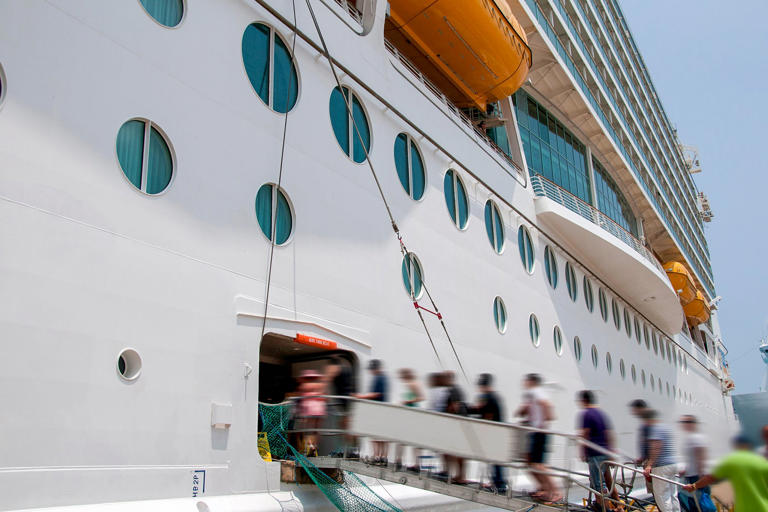
Cool Green Science
Stories of The Nature Conservancy
Studying Challenges to Cozumel’s Coral Reefs
National Geographic & TNC extern Sophie Dellinger examines the impacts of poor water quality on Cozumel's reefs.
Share this article
Share this:.
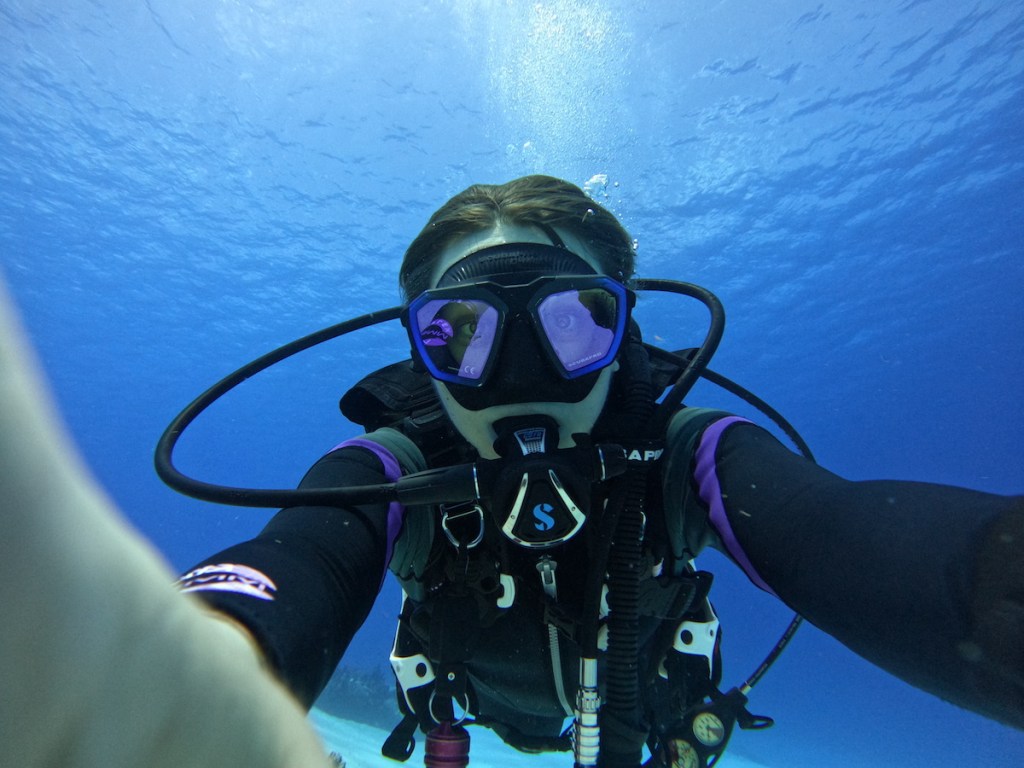
This story is part of a series designed to introduce the perspectives of alumni from the National Geographic Society and The Nature Conservancy’s global youth externship program . Each guest author is an emerging leader in conservation and storytelling.

Cozumel, Mexico is a small island on the Eastern side of the Yucatan Peninsula with a total population of 88,000 . The island is part of the greater Mesoamerican Barrier Reef system and has some of the most diverse reefs in the world with over 35 endemic species of coral.
As a result of those reef conditions, Cozumel became well-known in the diving community as a “must-see” dive location.
My dad, the person who introduced me to diving, frequently tells me stories of his adventures as a young dive master in the 1990s and never fails to mention that his all-time favorite diving location was Cozumel. My childhood was filled with stories about its wonder: times when he would jump in the water and the only thing he could see in front of him was the silvery shine from the large schools of fish. The first time my dad saw a hammerhead shark was diving at Santa Rosa Wall where he saw hundreds of them schooling.
In 2021 after the COVID-19 quarantine period, I decided to get scuba certified and finish my open water dives in Cozumel. My first open water dive was behind my hotel on the Villa Blanca Reef, less than one mile away from the cruise ship docks. I was so excited to jump in the water for the first time in Cozumel to finally see what my dad had been describing for years, but when I reached the sandy bottom it was barren and what little coral was left was covered in algae.
Why This Project?
Scuba diving made me fall in love with the ocean and instilled in me a drive to protect it. Inspired by Cozumel, I decided to apply for an ocean conservation externship with the National Geographic Society and The Nature Conservancy in the summer of 2023. The main focus of the externship was a research project of our choosing. I chose Cozumel’s reefs and began having conversations with my dive masters on what was causing reef destruction. It was through these conversations with locals that I was able to learn about the increase in volume of cruise ships and ultimately decided to focus my research on the impacts of the cruise industry on Cozumel’s reefs.
Become An Extern
Join hundreds of global youth who are connecting with the National Geographic Society and The Nature Conservancy.
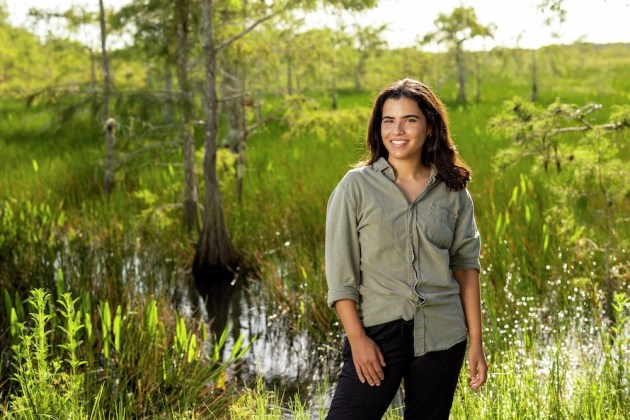
What’s the Problem?
Over 80% of Cozumel’s coral population has died in the last 40 years as a result of tourist development on the island, specifically cruise development. Due to its close proximity to the resort town of Cancun, Cozumel began constructing its first cruise pier in the early 1970s. Cozumel now has three cruise piers, the International Pier, Punta Langosta, and Puerta Maya, and has become the largest cruise destination in the Western Caribbean with close to 5 million visitors annually .
In 2020, the Mexican Ministry of Environment and Natural Resources approved a proposal for the construction of a fourth cruise pier in Cozumel despite the fact that current cruise piers are only reaching 54% of their total capacity . The fourth cruise pier is projected to be built on a UNESCO heritage site where local advocacy groups who have surveyed the region found 20 different species of coral, including two on the critically endangered list . The construction of the fourth pier is largely feared by locals who have seen how the current rate of cruise activity has already caused an ecological imbalance for coral reefs.
Over 97% of coral populations around current cruise piers have died. In an Atlantic and Gulf Rapid Reef Assessment (AGRRA) survey done in 2022, only one dive site left in Cozumel was ranked as “very good” on the Healthy Reef Index (HRI) . Over 71% of Mexico’s total reefs are listed as being in poor or critical shape on the HRI.
Cruise Ship Impac ts on Coral Reefs
There are three primary impacts that cruise ships have on the reef: the dumping of untreated sewage, the spread of coral diseases, and direct damage.
Many cruise ships do not have advanced wastewater treatment systems and instead dump their gray water and untreated sewage directly into the ocean. Untreated sewage is high in nutrients such as nitrogen and phosphorus . An imbalance in the amount of nitrogen and phosphorus initiates a process called water eutrophication, or an excess of algal and plant growth. An increase in fleshy macroalgae (FMA) is one of the main culprits for coral death in Cozumel.
Macroalgal domination starves coral of the sunlight needed to continue growing its calcium carbonate skeleton. The 2022 AGRRA report shows that Mexico has 24% FMA cover, considered a “critical” level, and would need a 77% decrease of FMA to be ranked “good” on the HRI. Water sampling done by CCRRP confirms that water quality around the island is poor, contributing to declining coral populations.
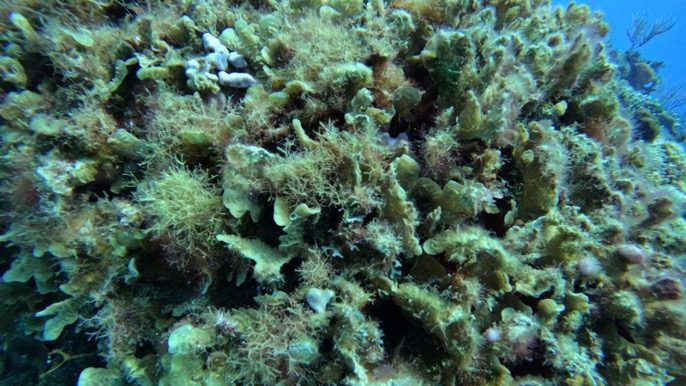
Another issue caused by cruise ships is the spread of coral diseases.
Cruise ships have a ballast tank to promote hydrostatic stability of the ship. Water is taken in to the ballast tank at an initial port and expelled into the destination port during docking. Most Caribbean cruises from the US begin in Florida where there is Stony Coral Tissue Loss Disease (SCTLD) and White Band Disease. White Band Disease was brought to Cozumel in the 1980s and has primarily affected elkhorn corals which are currently at risk of becoming extinct in Cozumel.
In October 2018, an outbreak of SCTLD brought by a cruise ship ballast water from Florida caused 60% loss of Cozumel’s hard corals in one year . SCTLD is believed to be caused by bacterial pathogens in the water column that create lesions on hard corals filled with alpha-toxins ultimately killing coral cells. The presence of SCTLD permanently alters the microbial community as bacteria levels remain high , leaving corals vulnerable as they continue to fight off the disease. This means that corals that don’t look sick may still be at higher risk of death or collapse as they are fighting off higher levels of bacteria in the water column.
Finally, anchoring and the backwash of propellers causes significant direct damage to corals. Anchors frequently smash hard corals, leading to a shift from live corals to macroalgal domination . One cruise ship ran awry 40 miles north of Cozumel and damaged 80% of Cancun’s total coral population. The impacts of cruise ships on coral reefs have left Cozumel’s remaining coral populations vulnerable. Remaining coral colonies are at higher risk of collapse due to limitations in sexual reproduction, genetic recombination, and the ability to adapt to rapidly changing environments because of weaker immune systems.
Solutions
Cozumel should focus on reducing its FMA cover through improving water quality around the island. Decreasing levels of nutrients in the water can be done through the installation of port reception facilities (PRFs). PRFs collect sewage and marine litter for proper treatment at water treatment facilities. Cozumel can receive funding through the International Maritime Organization’s Technical Cooperation Fund to install IMO-approved PRFs. After the installation of PRFs, Cozumel should follow the Baltic Sea Model . In 2019, the IMO banned all cruise ships from dumping raw sewage within 12 nautical miles of shore in the Baltic Sea in order to improve water quality. All ships are required to utilize PRFs or dump sewage farther from shore.
To address the spread of coral diseases, ballast management protocols must be adopted by all cruise lines. Key protocols include the prohibition of gathering ballast water in “hot spot” zones of coral disease, rinsing of the anchor and anchor chain during every retrieval, conducting ballast exchange at least 200 nautical miles away from land, and keeping records of all ballast information to report at all ports. Additionally, the funding of local coral restoration programs helps fuel research for technologies aimed at limiting the spread of coral diseases and the repopulation of threatened coral populations.

Recovery and restoration are possible. Cozumel Coral Reef Restoration Program (CCRRP) has restored over 10,000 corals to the Villa Blanca Reef and has developed antibiotic pastes to limit the spread of SCTLD.
Finally, Cozumel needs to limit the amount of cruise ships docking at their ports if they wish to preserve the shallow reefs surrounding their island. Lowering the volume of ships coming in and utilizing marine spatial planning (MSP) to create anchoring paths for ships that avoid damaging coral colonies should help mitigate some of the damage being done to the reefs.
While Cozumel’s reefs are facing a significant threat with the growing popularity of cruise tourism in the Caribbean, implementing policies focused on minimizing the impacts of cruise ships may provide some relief for coral.
By raising awareness through my externship project, I hope to reach tourists who travel to the Caribbean to help them understand the impacts of cruise travel. I also hope that increased awareness on the water quality in Cozumel incentivizes the city council to approve a long-term water infrastructure improvement plan to begin addressing the core issue behind reef degradation in Cozumel.
Discover the conservation work of other externs from Colombia, the Maldives, and the United States in Nature Conservancy Magazine.
Join the Discussion
Join the discussion cancel reply.
Please note that all comments are moderated and may take some time to appear.
Continue Exploring

July 29, 2021
Story type: TNC Science Brief


IMAGES
VIDEO
COMMENTS
Cruise ship propellers typically spin at a speed of 250 revolutions per minute (RPM). This isn't extremely fast when compared to some other propellers - there is more of a focus on torque and power in order to push a massive ship through the water. Remember that these propellers are in the ocean, not in the open air.
Here are some factors to consider: Ship size and weight: The size and weight of the ship can affect the required propeller size and pitch. Cruise speed: The ship's desired cruise speed can determine the propeller's number of blades and pitch. Engine power: The power of the ship's engine can determine the required size and type of propeller.
Older cruise ships use diesel engines for propulsion. ... Cruise ship propellers do not need to turn quickly since they rely on brute power or torque instead of high speeds or RPM. This is what ...
The size of a cruise ship propeller is determined by a number of factors, including the weight of the ship, the speed at which it needs to travel, and the water conditions in which it will be operating. Types of Cruise Ship Propellers. There are two main types of propellers used on cruise ships: Screw propellers
These transmissions determine the revolutions of propellers. Modern ships use either diesel-electric engines or gas turbines as a source of power for propulsion, and for ship's systems. Some of the larger ships depend on two power sources - one for electrical power and one for propulsion. ... How much fuel do cruise ships use? Cruise ship fuel ...
Carnival Cruise Line Fantasy Class Cruise Ship, Elation - Service speed on this vessel is 22.3 knots. It is the first to use an electric azimuth Azipod system for propulsion. The difference with ...
Cruise ship propellers can vary in size and are made from an alloy of stainless steel and aluminium to withstand corrosion and degradation. Modern cruise ships use azipods, which have the propeller at the front of the pod and can spin 360 degrees to help with steering, and typically have three propellers for balance between fuel consumption ...
The entire propeller is made to rotate at the desired angle in order to steer the ship. Azimuth thrusters removed the use of rudders in modern ships. This type of propeller system is used in Oasis of the Seas - the largest, most luxurious, and fastest cruise liner in the present world. The ship is capable of turning 360 degrees without any ...
Unlike ships of past, the propeller systems of modern cruise ships have a much greater directional versatility. This means that there are often several thruster propellers on the port and ...
In this video, we're going to take a look inside an cruise ship propeller test. We'll see how a propeller is tested and how that testing impacts the safety o...
A ship propeller, often simply referred to as a propeller, is a crucial component of a ship's propulsion system. It is a rotating device with a set of blades that are strategically designed to generate thrust and propel the ship through water. Ship propellers are typically located at the stern (back) of the vessel and are immersed in the water.
Rudders are located at the stern of the ship (rear), usually behind the ship's propellers. This helps direct the flow of water so the ship can be steered. While the rudder can be angled, they ...
The role of a cruise ship's propeller is to propel the ship through the water. But how fast do these propellers spin? ... Generally, modern cruise ships use either diesel or gas turbine propulsion systems. In diesel-powered vessels, the engines are coupled to large propellers that can be driven at speeds ranging from 10 to 20 knots (11.5 to ...
Cruise ships use Diesel-Electric propulsion systems. The main engines are generators which produce electricity which then powers the azipods. VV ships have 4 engines and 2 azipods. There are 3 bow thrusters to provide maneuverability when arriving/departing a port. Azipods are a motor with a built in propeller and rudder.
One of the key aspects to understand about cruise ship propellers is the concept of pitch. Pitch refers to the angle at which the propeller blades are set. It determines the distance the propeller moves forward with each rotation. Cruise ship propellers typically have a fixed pitch, meaning that the angle of the blades remains constant.
Azimuth thrusters—technically propellers—are a different take on propulsion. They're installed in pods at the back of the ship and can be rotated on a horizontal axis for better maneuverability, thereby eliminating the need for a rudder. Once installed, these thrusters can move 360 degrees, allowing ships to perform unprecedented maneuvers.
Cruise ship propellers do not need to turn quickly since they rely on brute power or torque instead of high speeds or RPM. This is what causes a ship to move slowly, as these vessels rarely reach 30 knots. Large Propeller. Cruise ships that are newer and more cutting edge may use azimuth thrusters. These are pods housing propellers, which ...
Most cruise ships have two pods. However, Oasis of the Seas and Allure of the Seas have three pods. Several ships have a combination of azimuthing pods and pods that do not turn (sometimes called "fixipods") that are used to provide forward and backwards propulsion. Not all cruise ships use pods. Ships like Norwegian Epic, Carnival Dream ...
Just like with air travel, the larger the plane or cruise ship, the more passenger cabins and amenities it will have. How Many Propellers does a Cruise Ship Have. A cruise ship typically has four propellers. Propellers are placed at the back of the ship and work to move it through the water. The more propellers a cruise ship has, the more power ...
But, can a cruise ship propeller pull you under? The answer is no. Cruise ships are designed to be safe and efficient, and the propellers are no exception. Cruise ship propellers are designed to provide thrust without causing any danger to passengers or other vessels in the area. They use large blades that move at slow speeds, which minimizes ...
Cruise ship propeller history dates back to the early 20th century when steam-powered ships dominated the seas. Over the years, advancements in technology have led to interesting propeller designs. One such design is the controllable pitch propeller, which allows the angle of the blades to be adjusted for optimal performance in different ...
When discussing boat propeller spin, we cannot ignore the colossus of sailing—the cruise ship propeller. These massive, specialized props are designed to maximize fuel efficiency while providing enough power to move a tremendous vessel in the ocean. Cruise ship propellers have unique designs, materials, and sizes, which certainly make them ...
While this list is not exhaustive, here's most of what you'll find on a cruise ship lifeboat, according to the LSA: Enough fuel to travel at 6 knots for at least a full day (24 hours) 48 hours ...
Cruise ships have a ballast tank to promote hydrostatic stability of the ship. Water is taken in to the ballast tank at an initial port and expelled into the destination port during docking. ... Finally, anchoring and the backwash of propellers causes significant direct damage to corals. Anchors frequently smash hard corals, leading to a shift ...